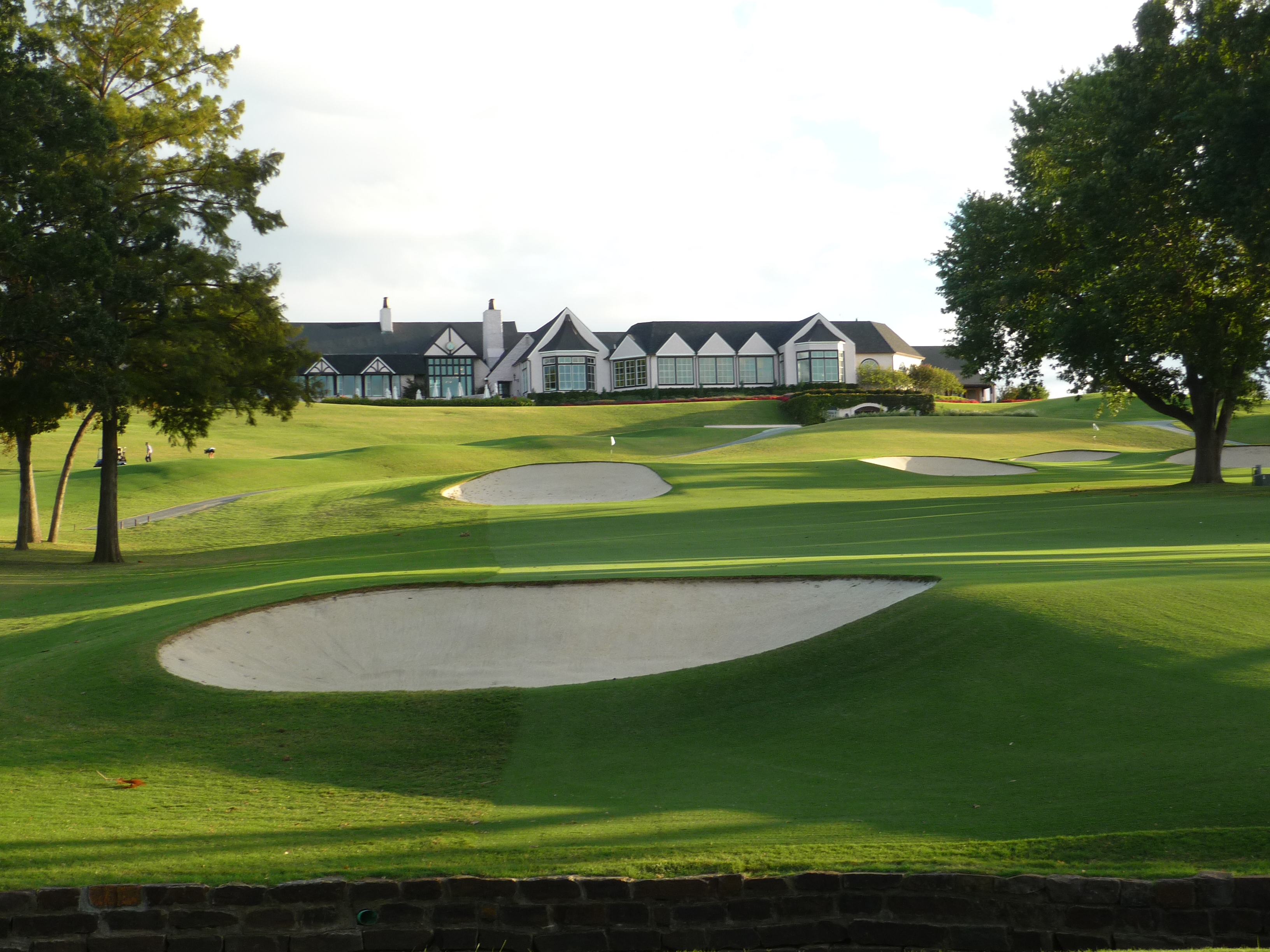
Southern Hills Country Club (Championship) – Played September 2016
- Rankings: Golf Digest #30, Golf Magazine #35
- Location: 2636 East 61st Street, Tulsa, Oklahoma
- Year: 1936
- Original Architect: Perry Maxwell
- Additional Work By: Robert Trent Jones & Gil Hanse
- Course Access: Private
- Walking Rules: Carts & Caddies Available
Score Card Information:
- Blue: 7,218 yards, Par 71, 76.8 Rating/146 Slope
- White: 6,609 yards, Par 71, 73.7 Rating/144 Slope
- Maxwell: 6,319 yards, Par 71, 72.7 Rating/142 Slope
- Gold: 6,113 yards, Par 71, 71.2 Rating/138 Slope (Men’s), 78.3 Rating/141 Slope (Women’s)
- Red: 5,756 yards, Par 74, 69.4 Rating/132 Slope (Men’s), 75.6 Rating/135 Slope (Women’s)
- Silver: 5,443 yards, Par 74, 73.8 Rating/134 Slope
It’s always a great feeling to get an invitation to high-end private clubs. It was no different when my friend contacted me about playing Southern Hills Country Club. I jumped at the chance especially since the timing worked out to be just after a really busy time at work. By now you probably know I drive everywhere I can. Tulsa was just within range for me with the wife helping on the drive. As usual, she was a huge help on the trip and we got there in time to catch a few hours of sleep before the tee time.
I arrived at the club for lunch with my friend and our member host. Our host was awesome and showed us all around the clubhouse. There is memorabilia throughout and you can feel the history oozing out of the walls. Our host also explained the extensive renovations the clubhouse has undergone since the club’s inception. The layout has changed drastically, but you would never know. Everything fits inside the building and has a great feel.
I mentioned the history of the club so let’s examine that a little further. The course was established in 1936 right at the time of the Great Depression. The land was donated by an oilman named Waite Phillips whose fortune was almost entirely liquid. He was approached about the land by Bill Warren and Cecil Canary who wanted to start a country club. Mr. Phillips believed there were better uses of money, but agreed to donate the land if the two men could demonstrate sufficient interest in the venture. They needed to get 150 donations of $1,000 and indeed they did.
The course has played host to multiple major events including national amateur events, US Opens, and PGA Championships. The list of champions here includes Babe Zaharias, Dave Stockton, Hubert Green, Nick Price, Retief Goosen, and Tiger Woods. Below is a sampling of the artifacts in the clubhouse.
The clubhouse is quite exquisite and has an awesome feel. The food was excellent and it was a welcoming atmosphere. We enjoyed hanging out in the men’s grill after the round enjoying a cold one to celebrate the day.
After hopping in what may have been the fastest golf cart I have ever experienced, we headed down to the range which you can see below.
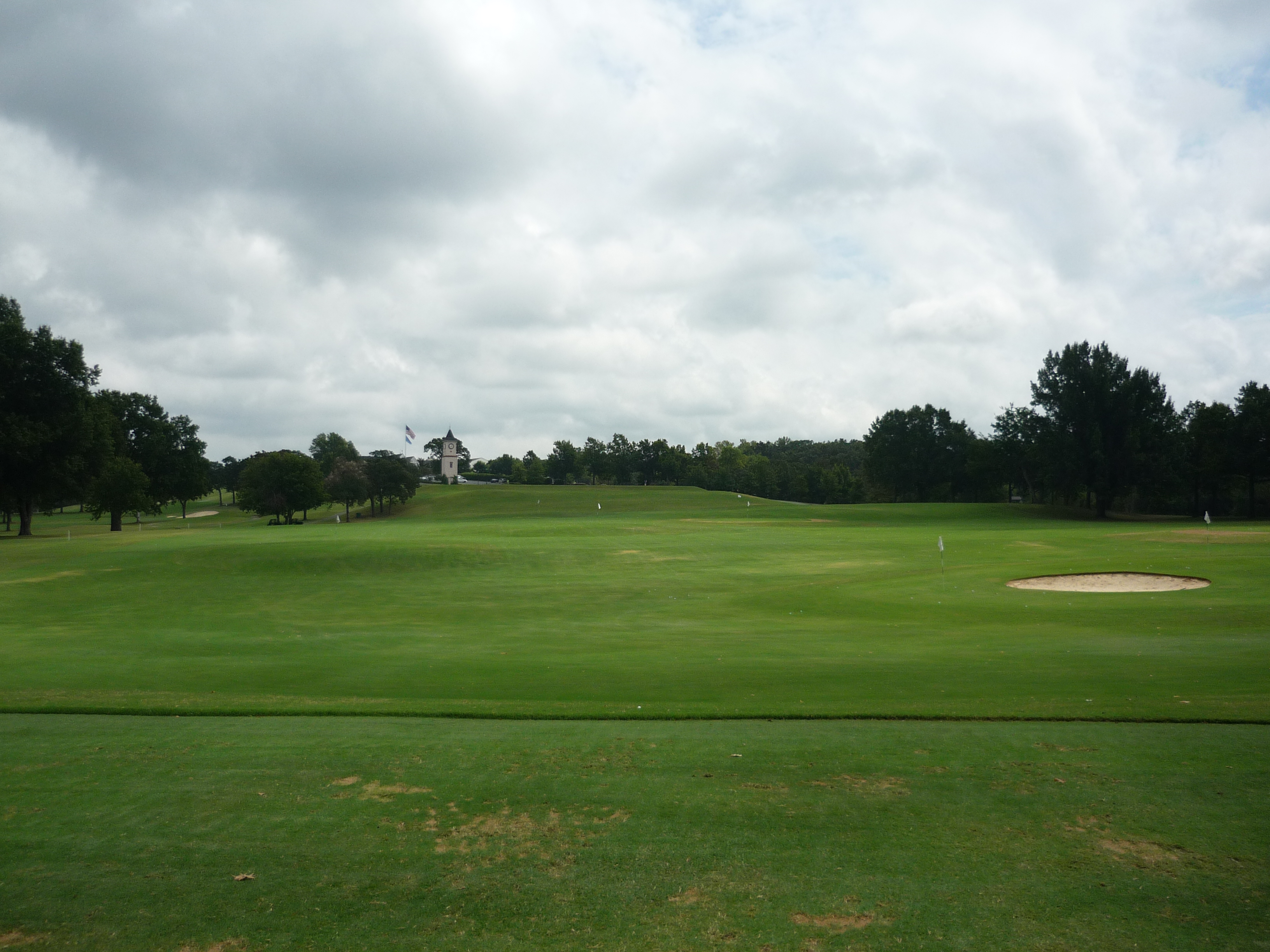
The plaque below sits next to the first tee.
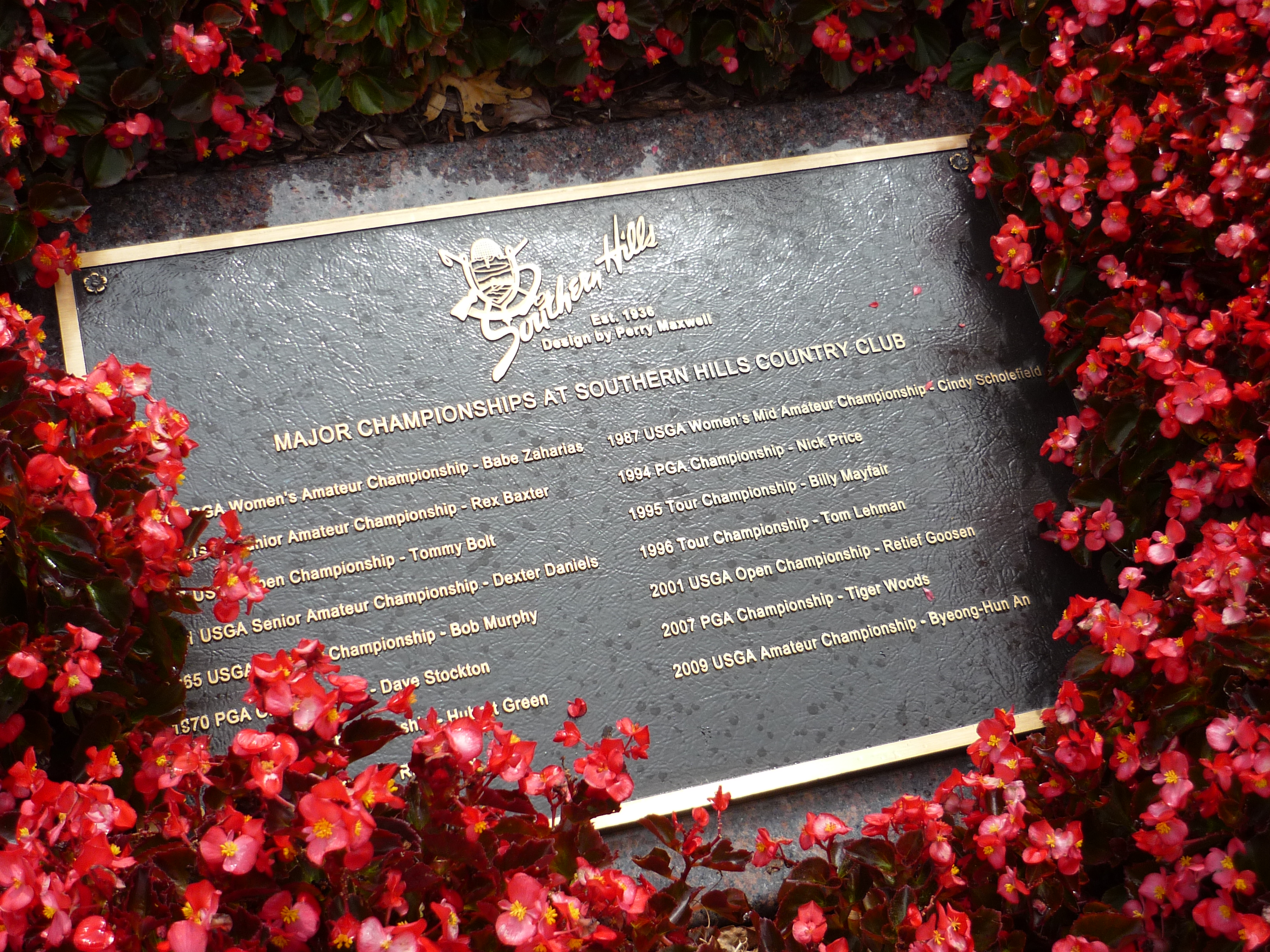
Hole 1 – 454 yards – Par 4
We were told by our caddie and host that if you can get through the first few holes unscathed you may be in position for a really good round. The first tee shot plays severely downhill, but there is a good bit of room in the fairway.
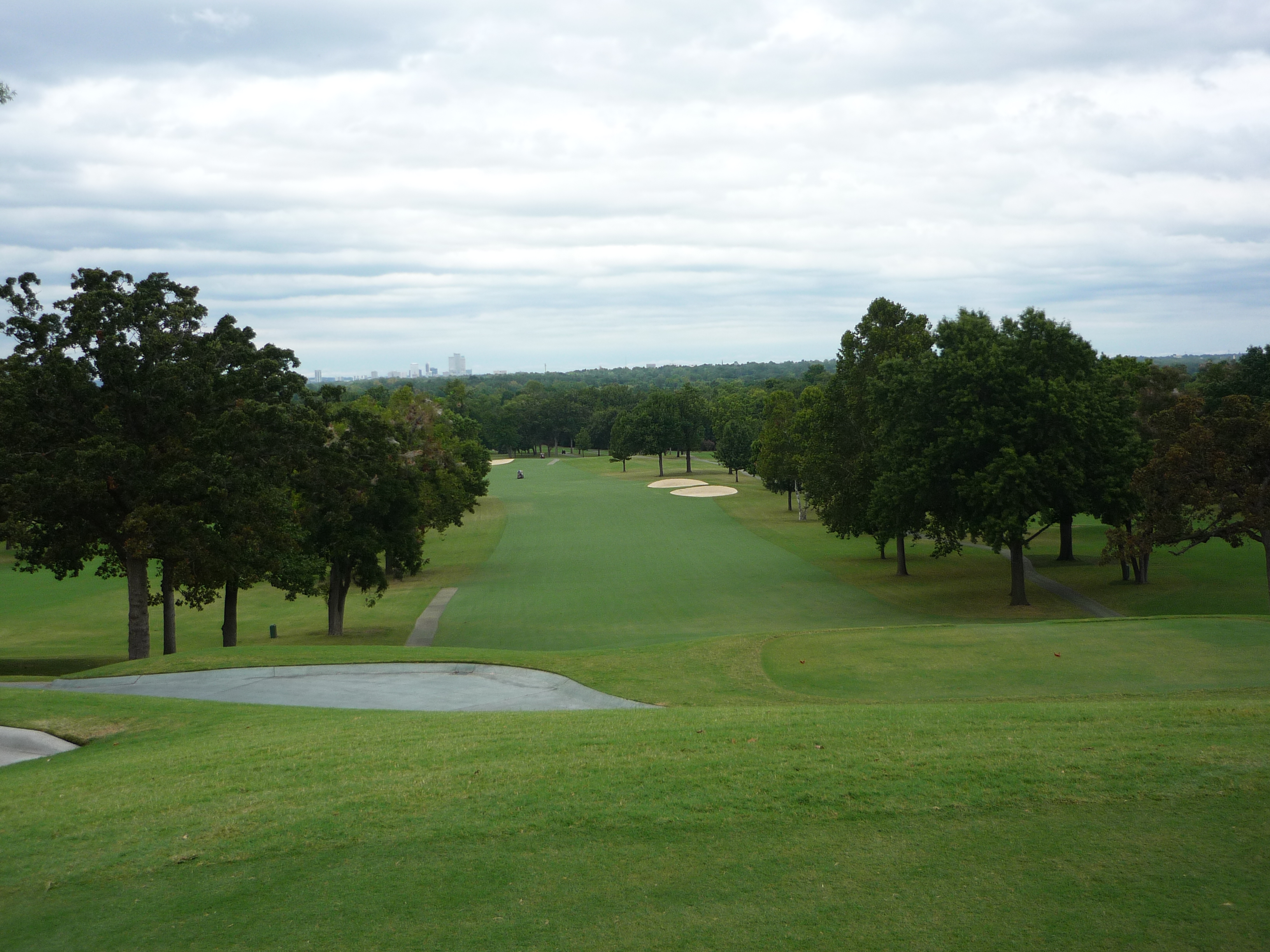
The second shot is where you are really challenged. The shot plays slightly uphill to a green guarded by a large bunker.
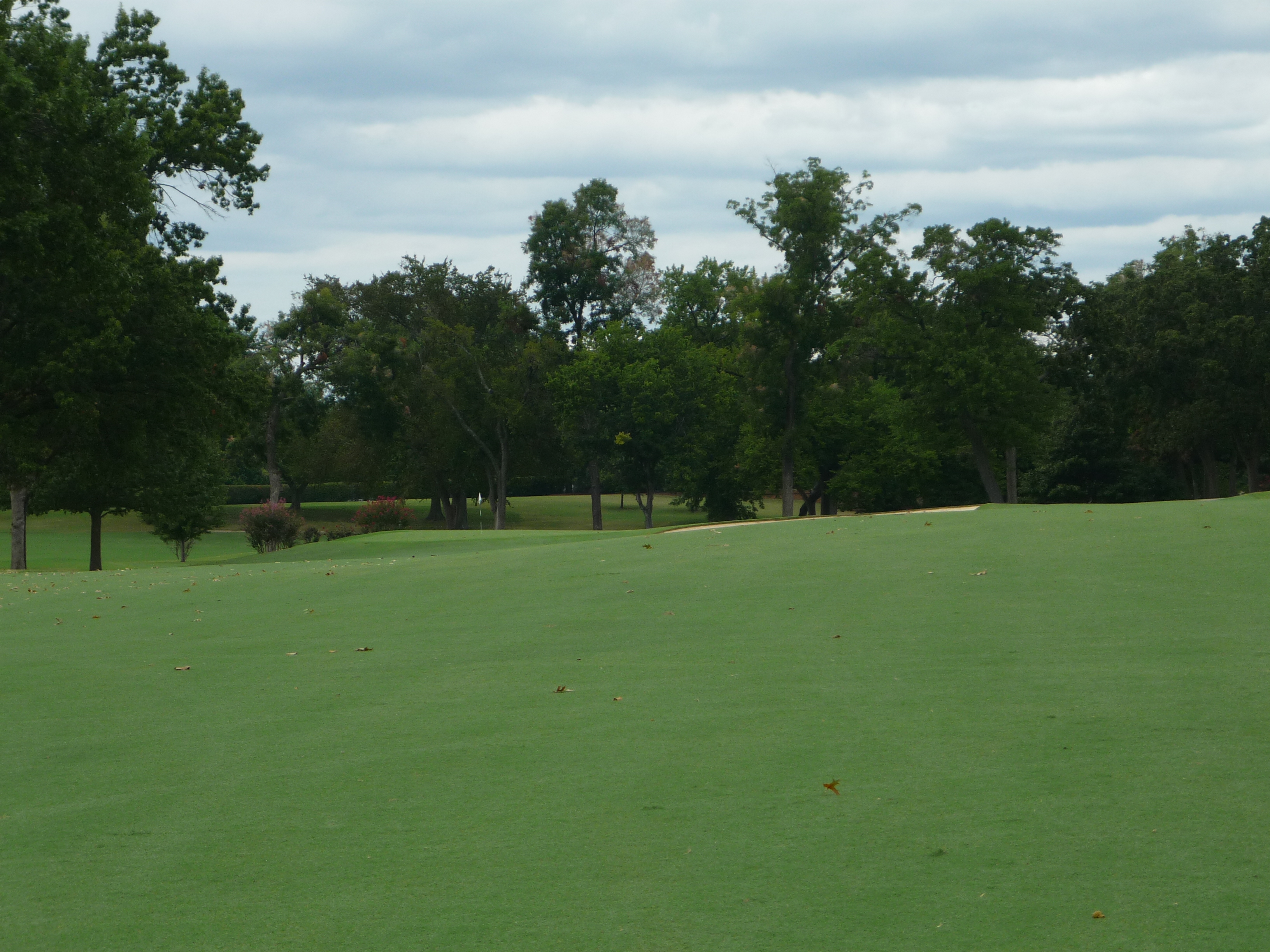
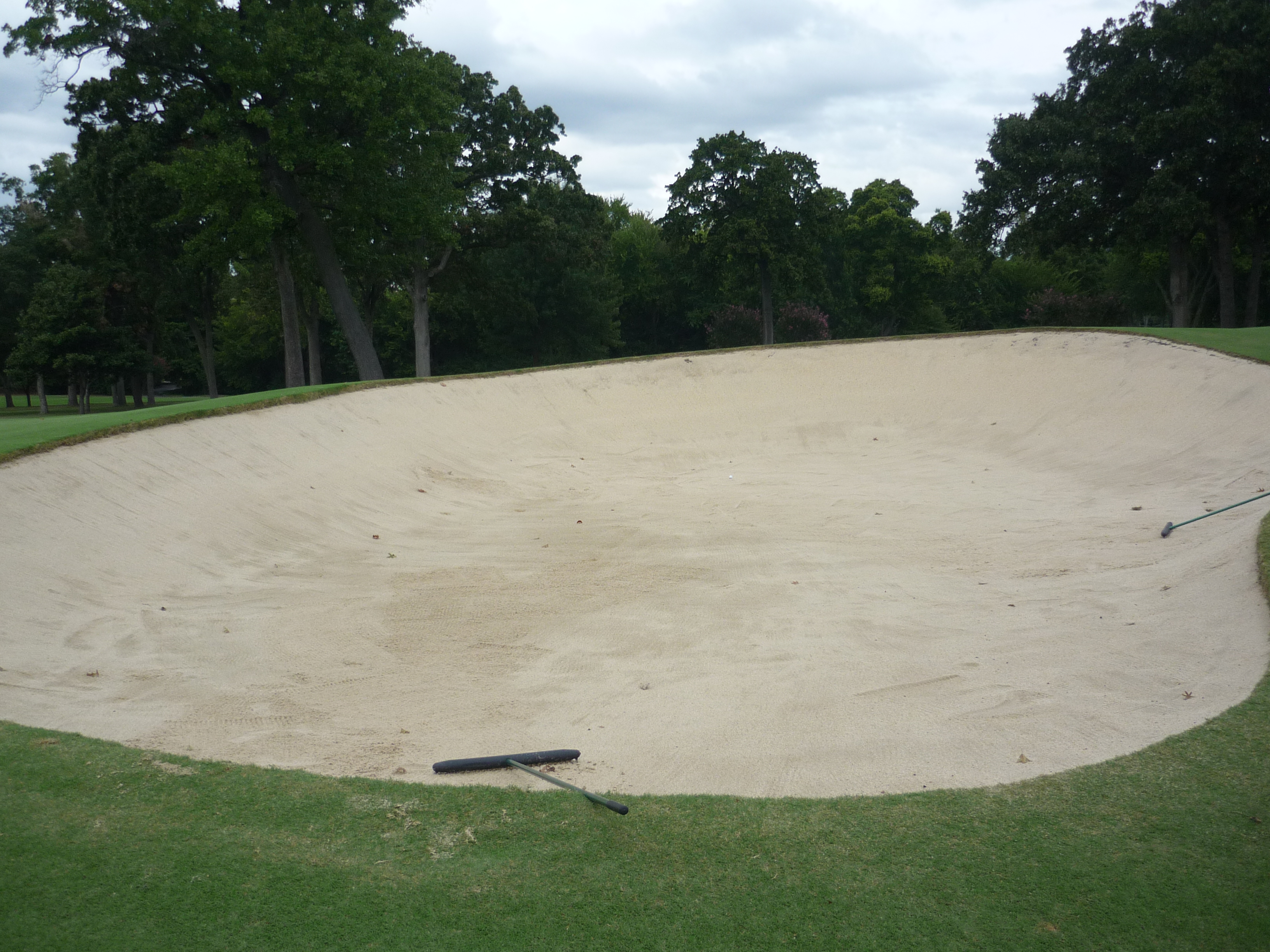
There is more slope in this green that it seems.
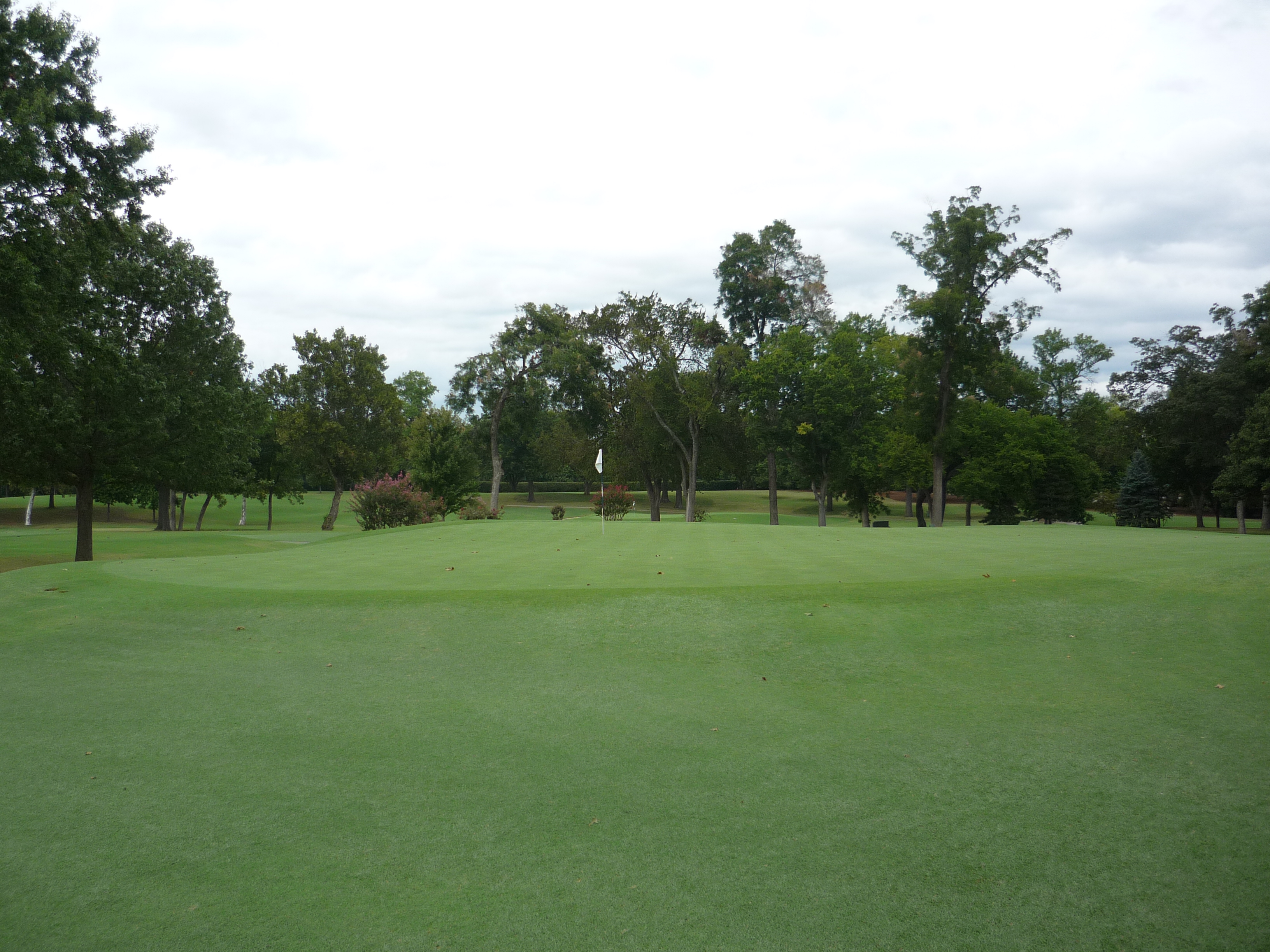
Hole 2 – 391 yards – Par 4
While this hole isn’t overly long, it is a demanding tee shot. There is a creek and bunkers to avoid, not to mention the trees on each side.
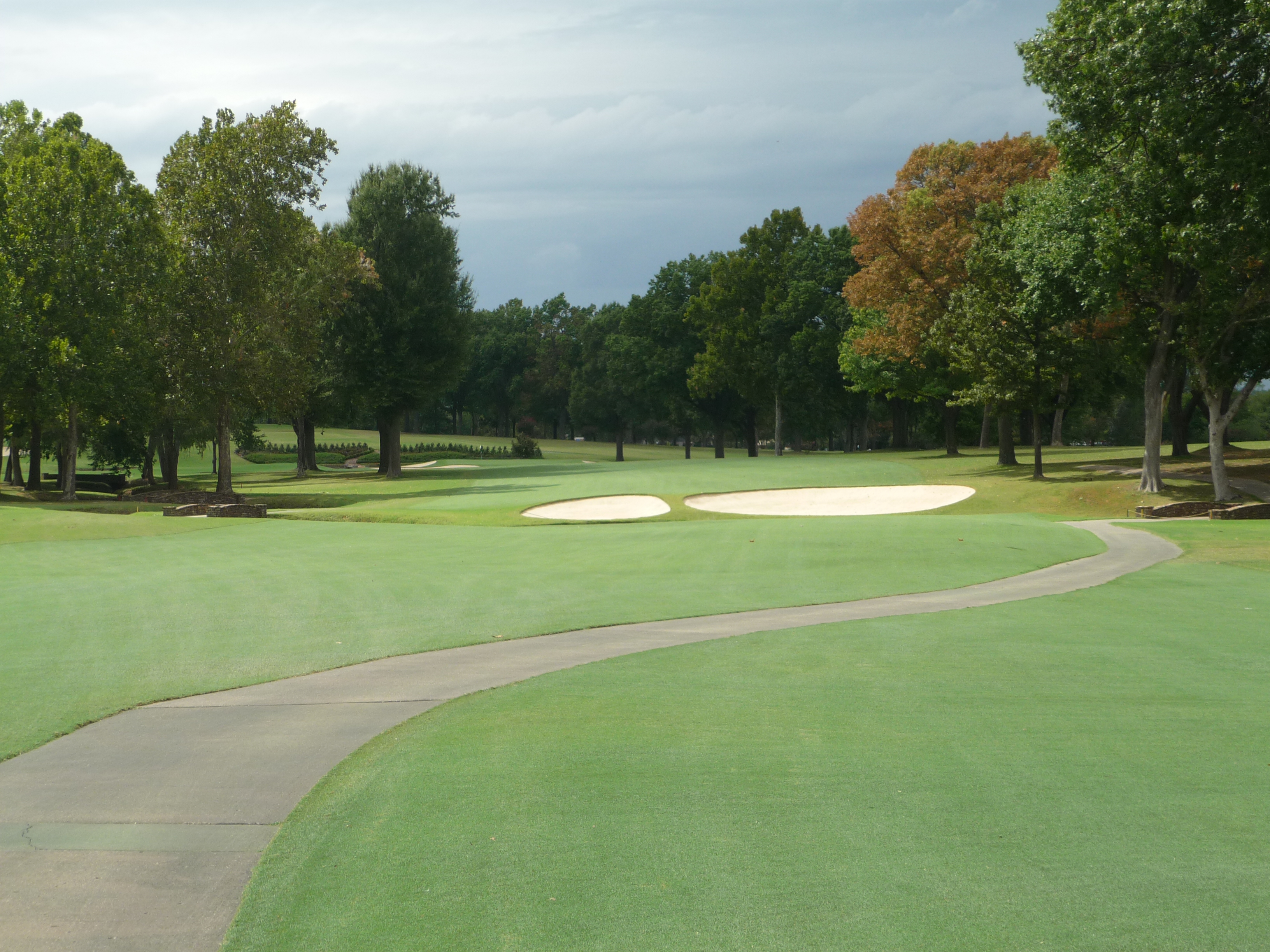
The green is open in front, but there isn’t much room anywhere else to miss.
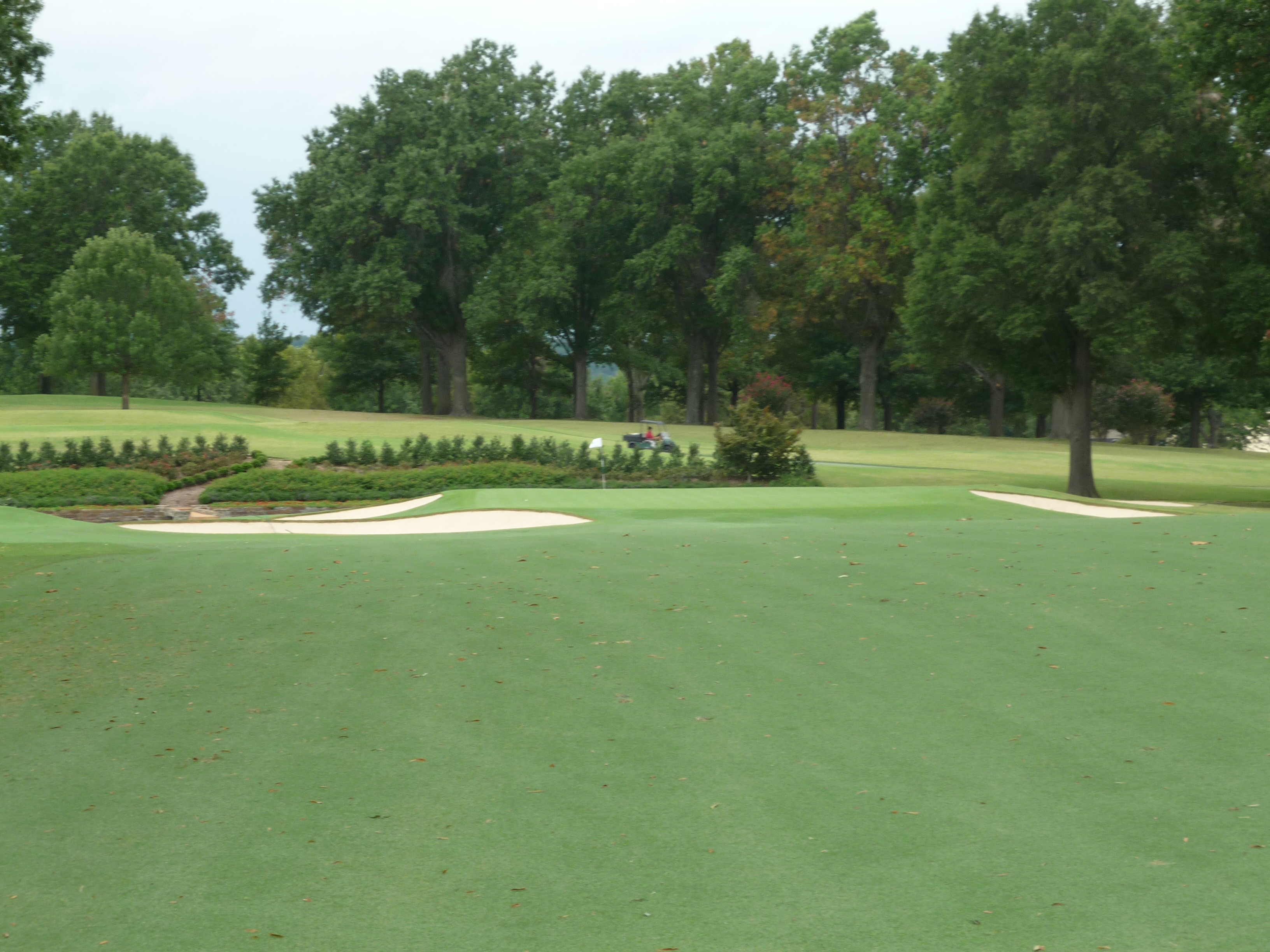
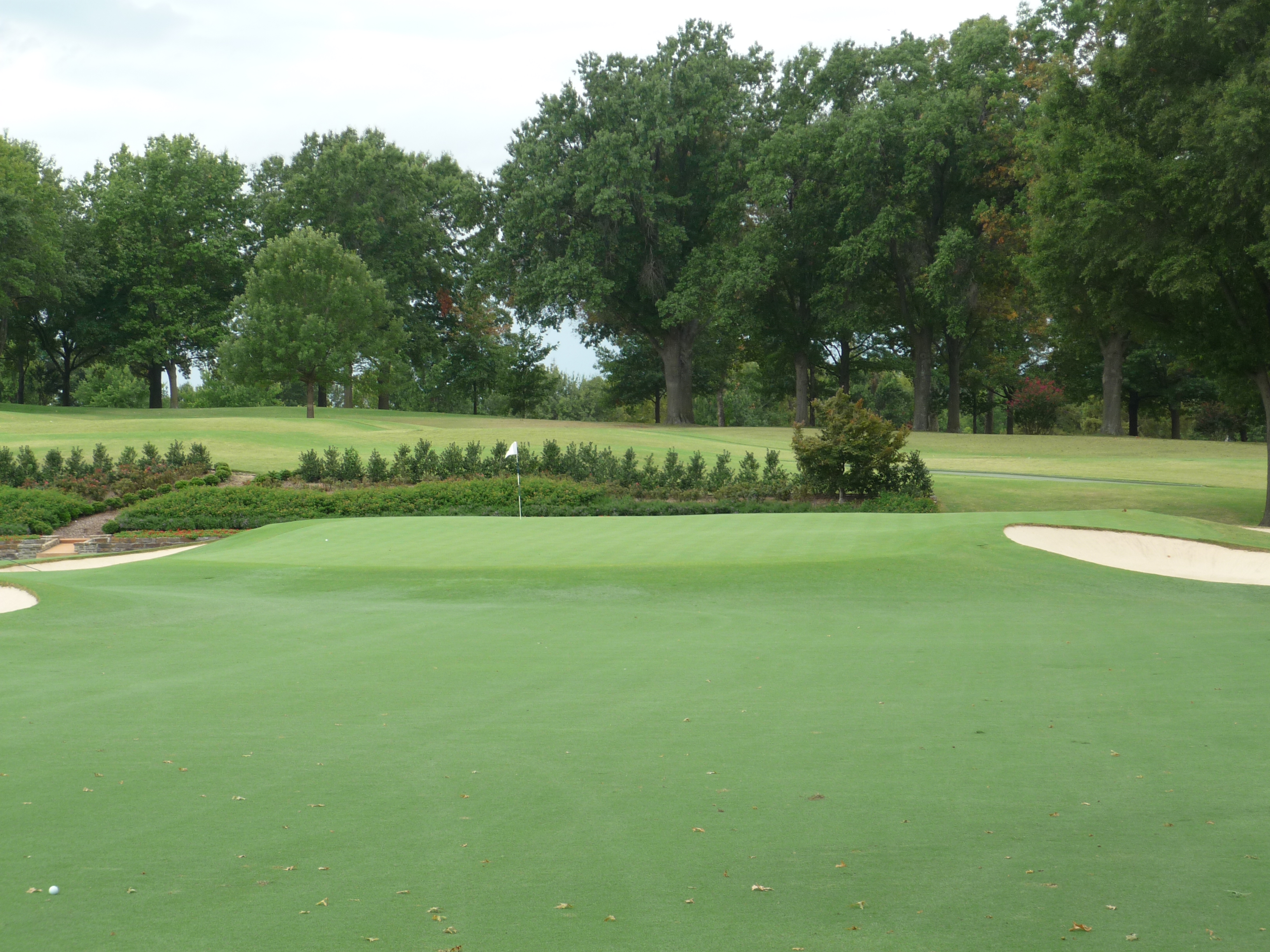
You can see below the deep bunkers that buffet the green. Pars are hard to come by from those.
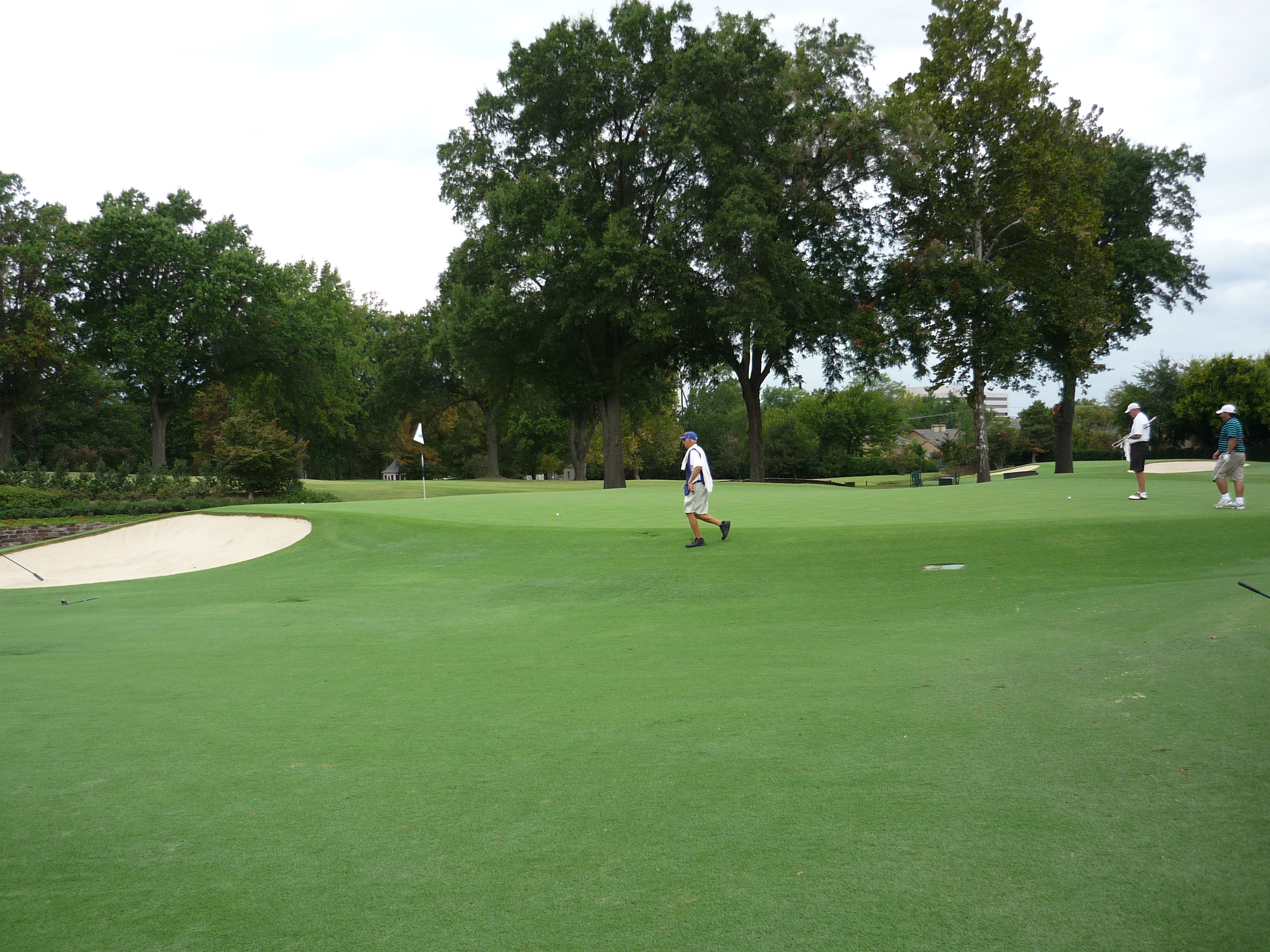
Hole 3 – 345 yards – Par 4
This dogleg left’s fairway is bracketed by trees, but the shorter length can allow for some players to hit less than driver. Accuracy is much more important than distance on this tee. Something I would learn throughout the day is that your tee shots need to be in the correct areas of the fairway to have good lines into the greens.
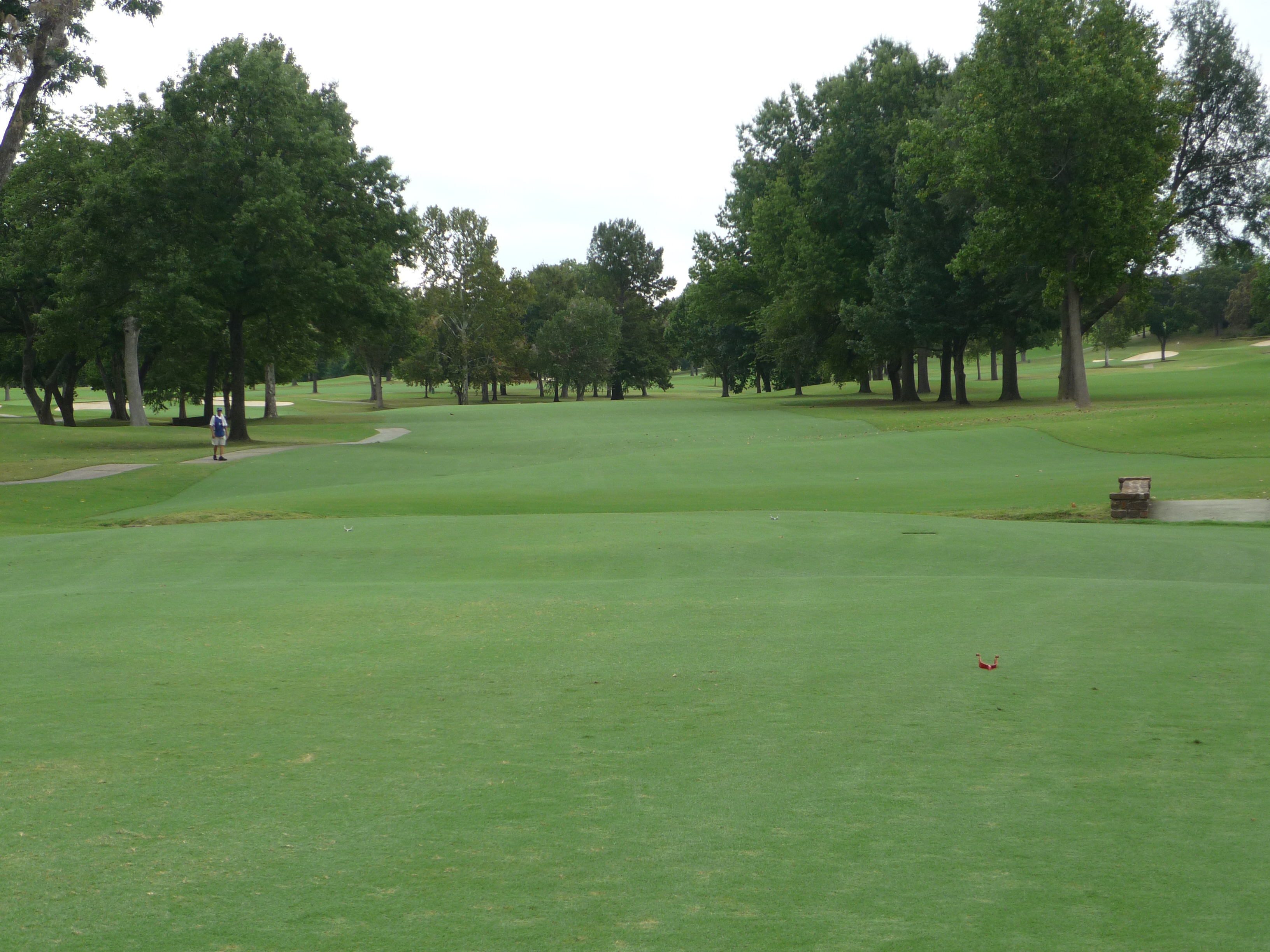
The second shot is over a creek that is not really in play to a green with plenty of bunkers around it. The green is conducive to making putts since there isn’t as much slope as some others.
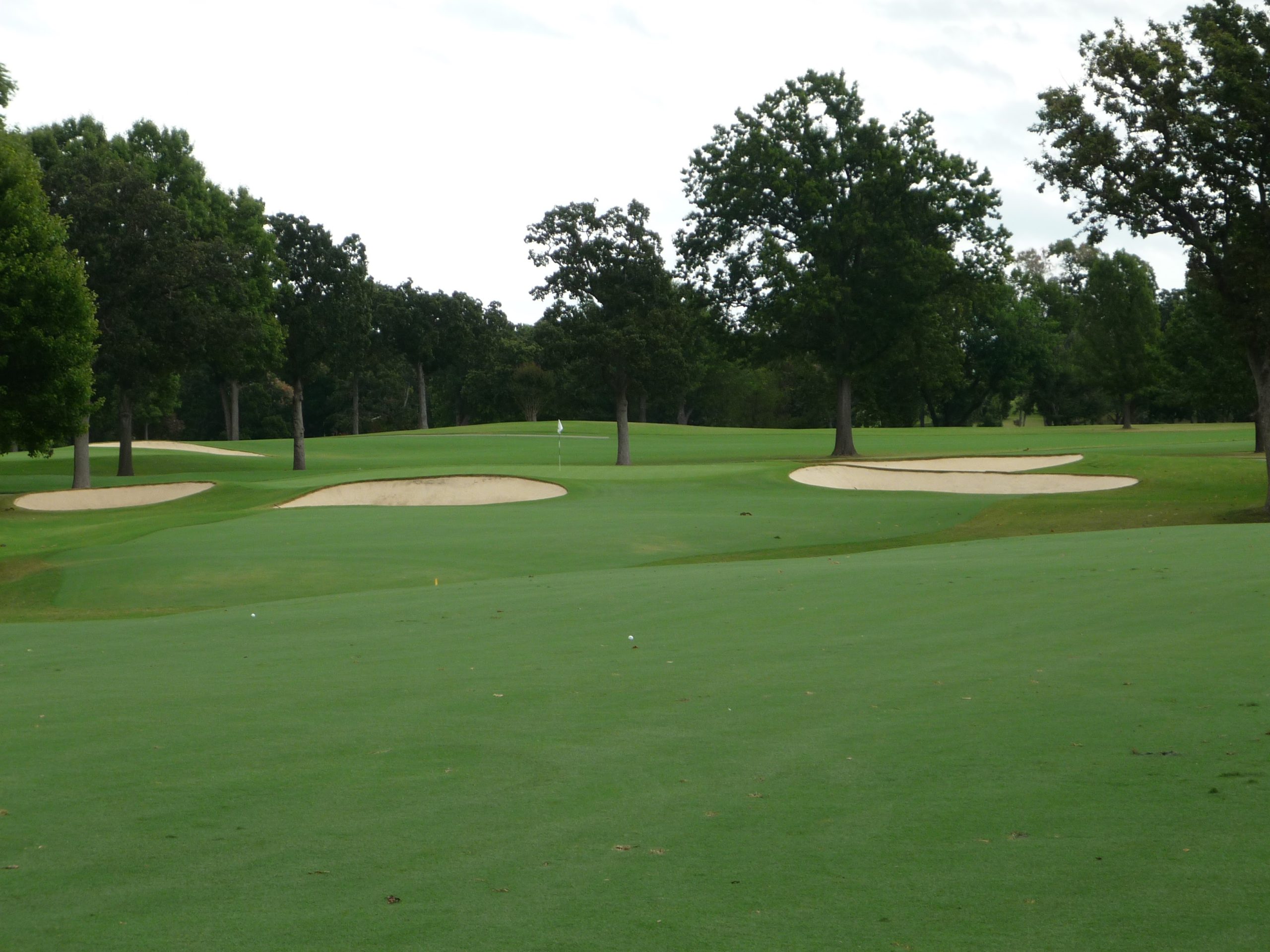
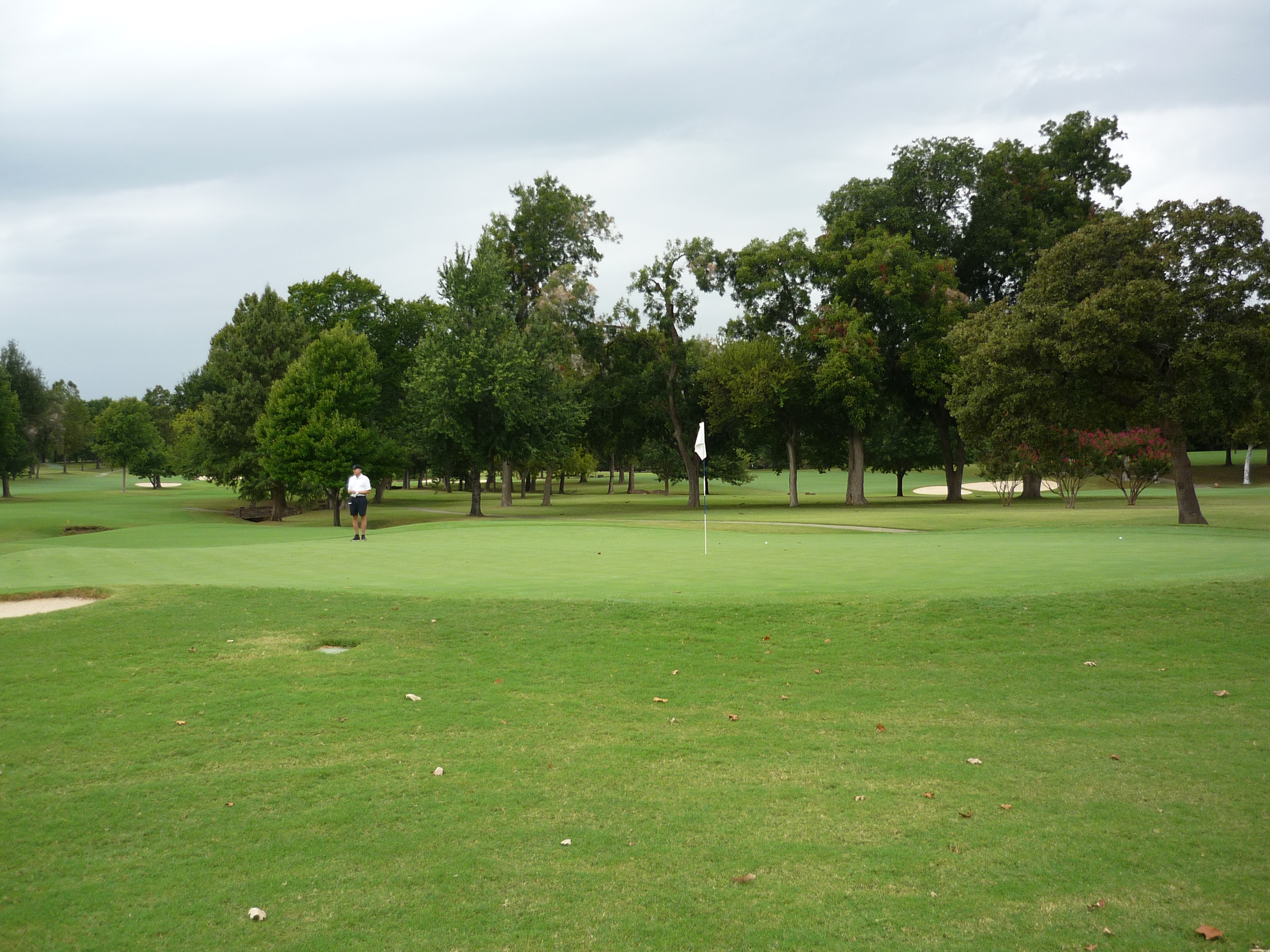
Hole 4 – 350 yards – Par 4
So this hole may seem a little easier off the tee and I would agree with you. However, you need the correct line on your tee ball to have a good angle to the flag. Anything that drifts a little too far right will be an awkward angle into the green.
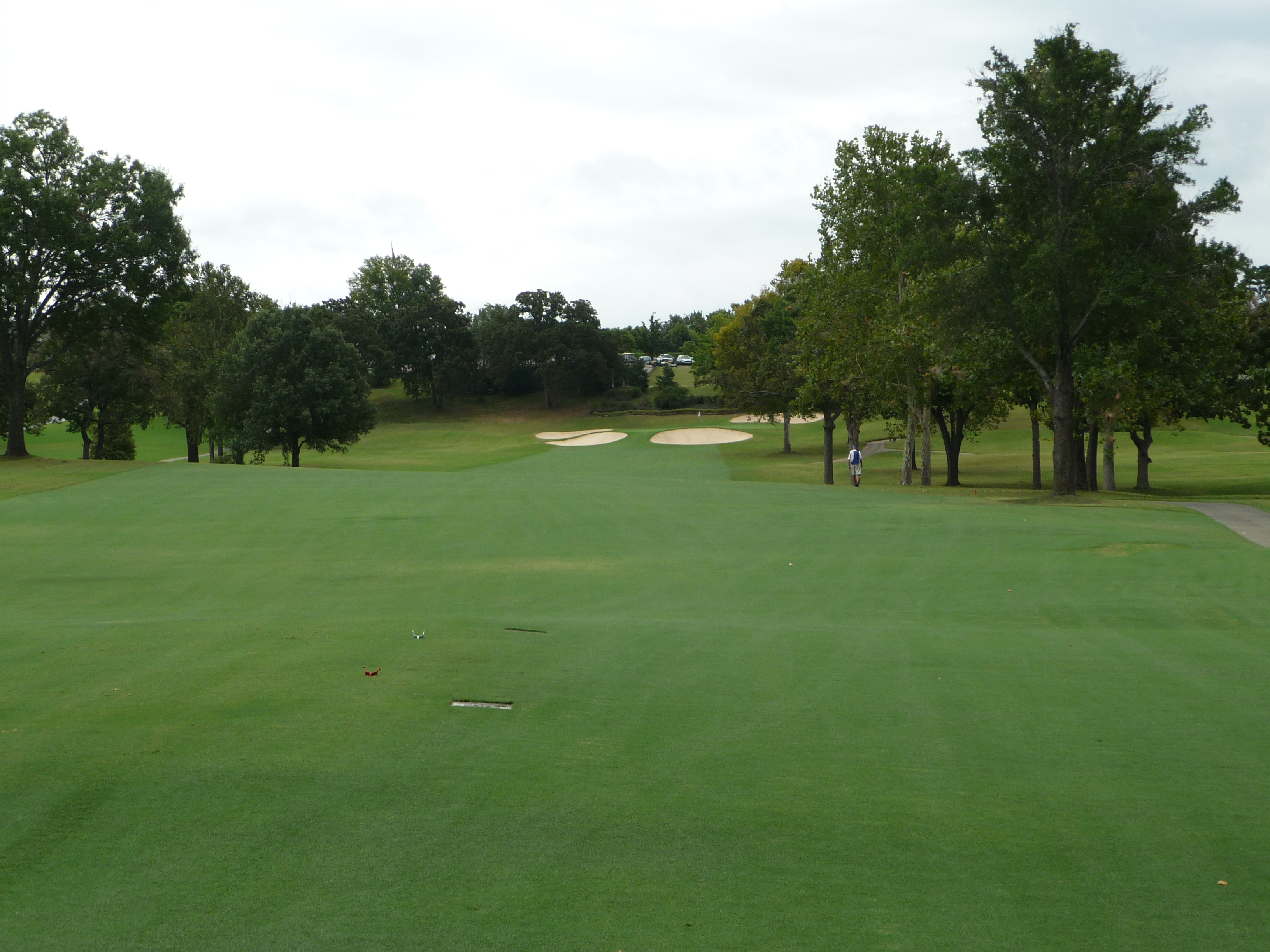
The raised green is tough on club selection, not to mention you have multiple bunkers to avoid. Hopefully, a good tee shot has set you up with a short iron to attack the flag.
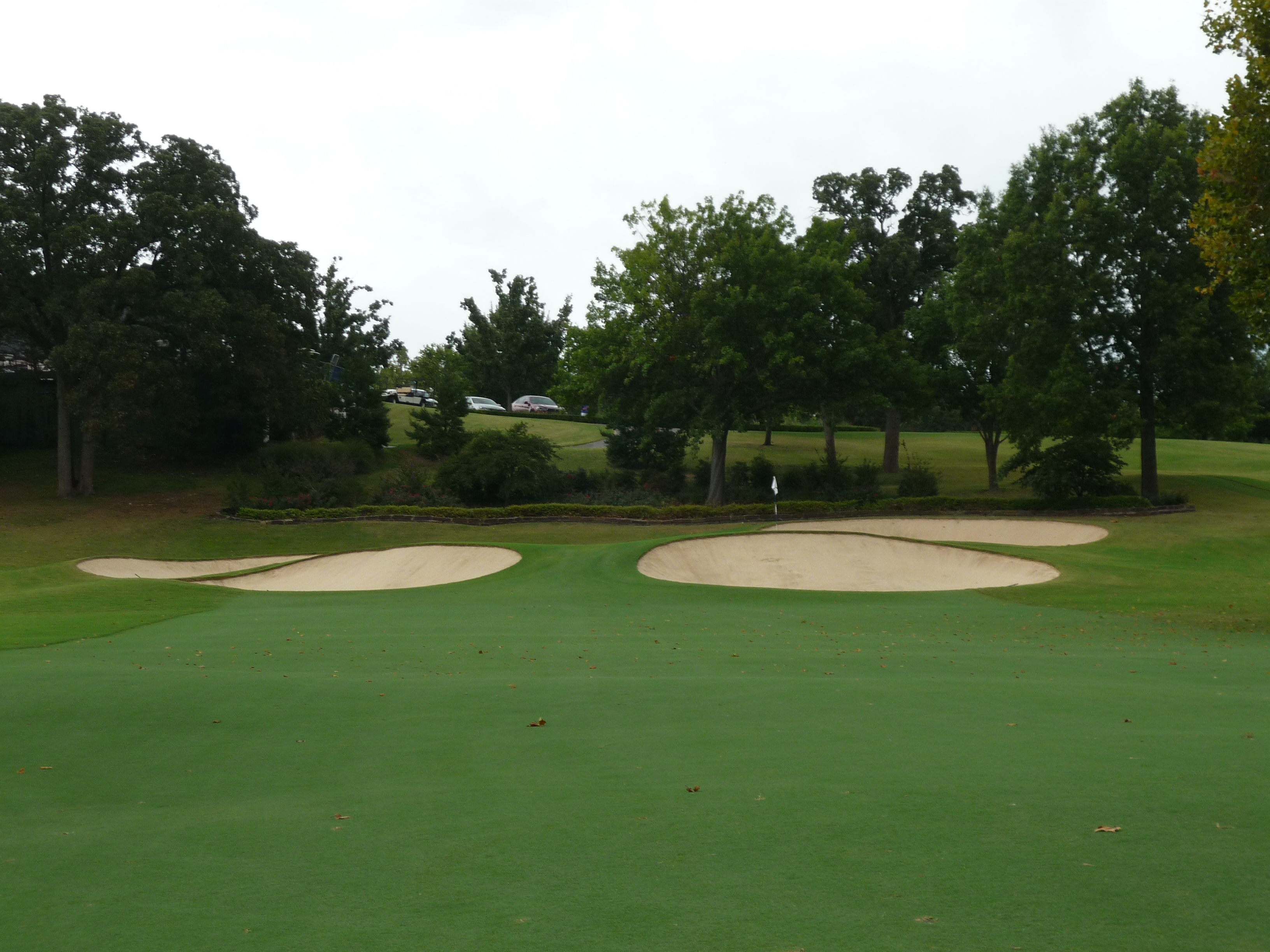
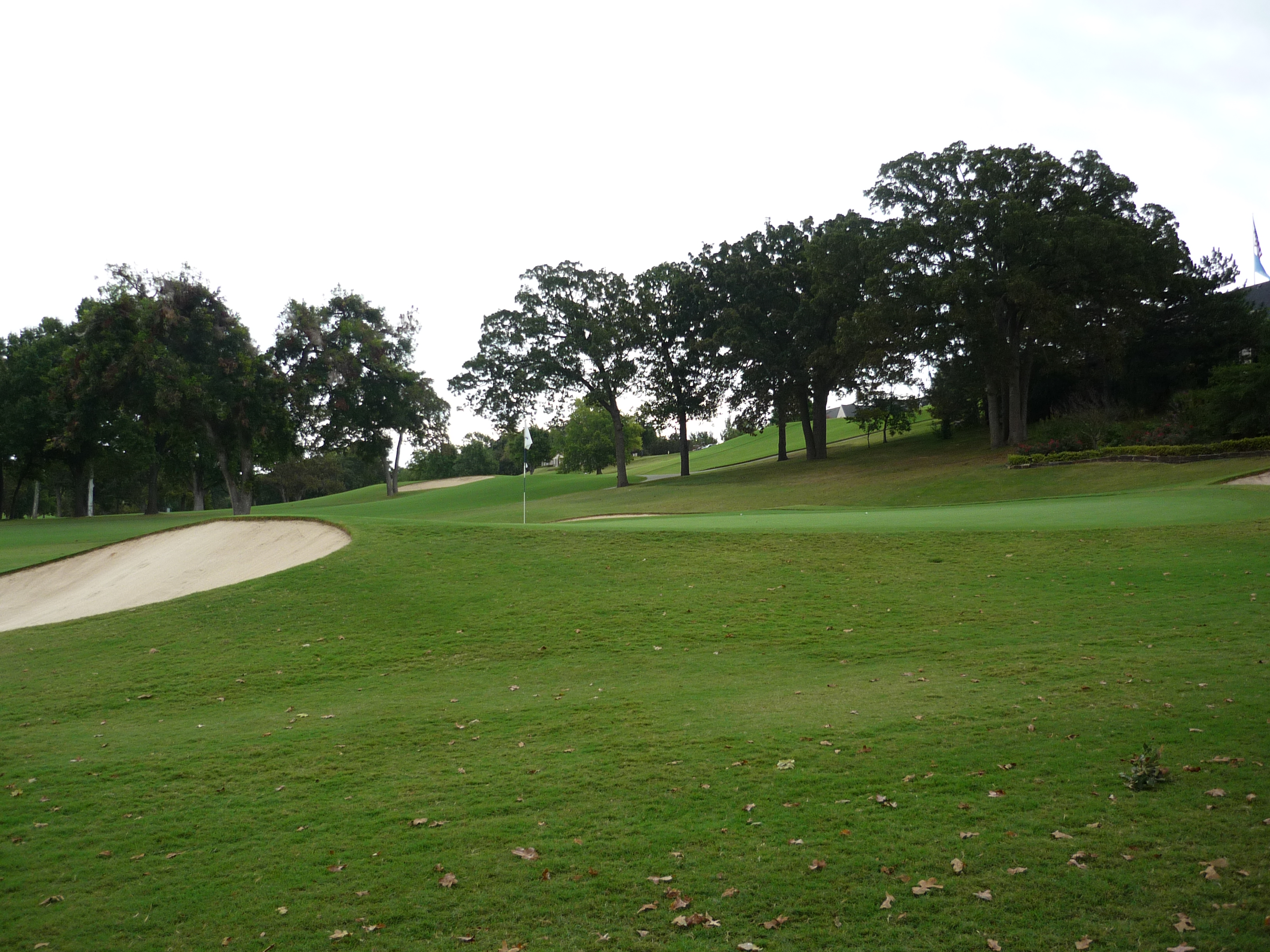
Hole 5 – 560 yards – Par 5
I missed a photo of the tee shot here, but it is a long hole that most golfers won’t be able to reach in two. The approach shot and green complex can be seen in the photos below.
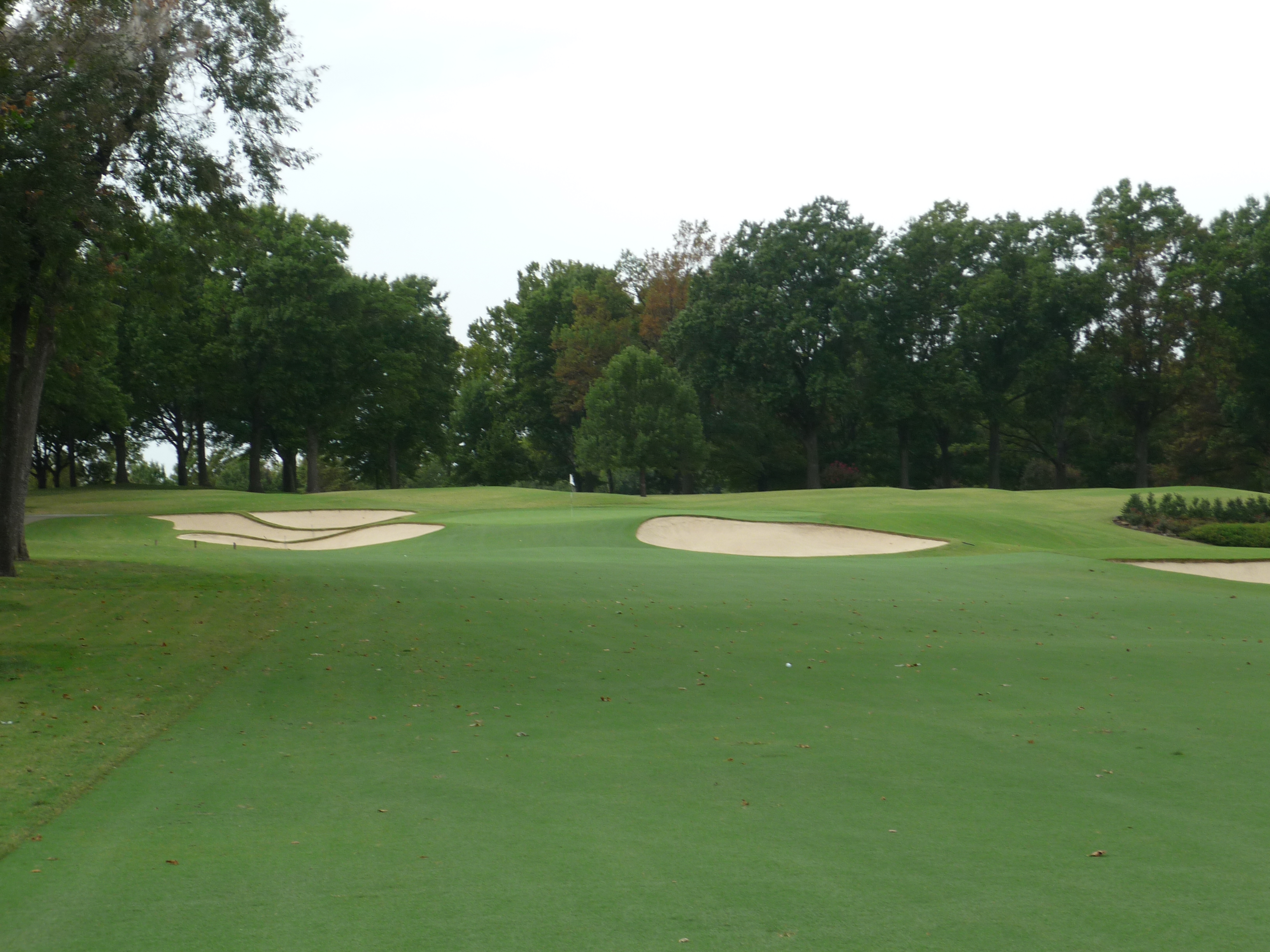
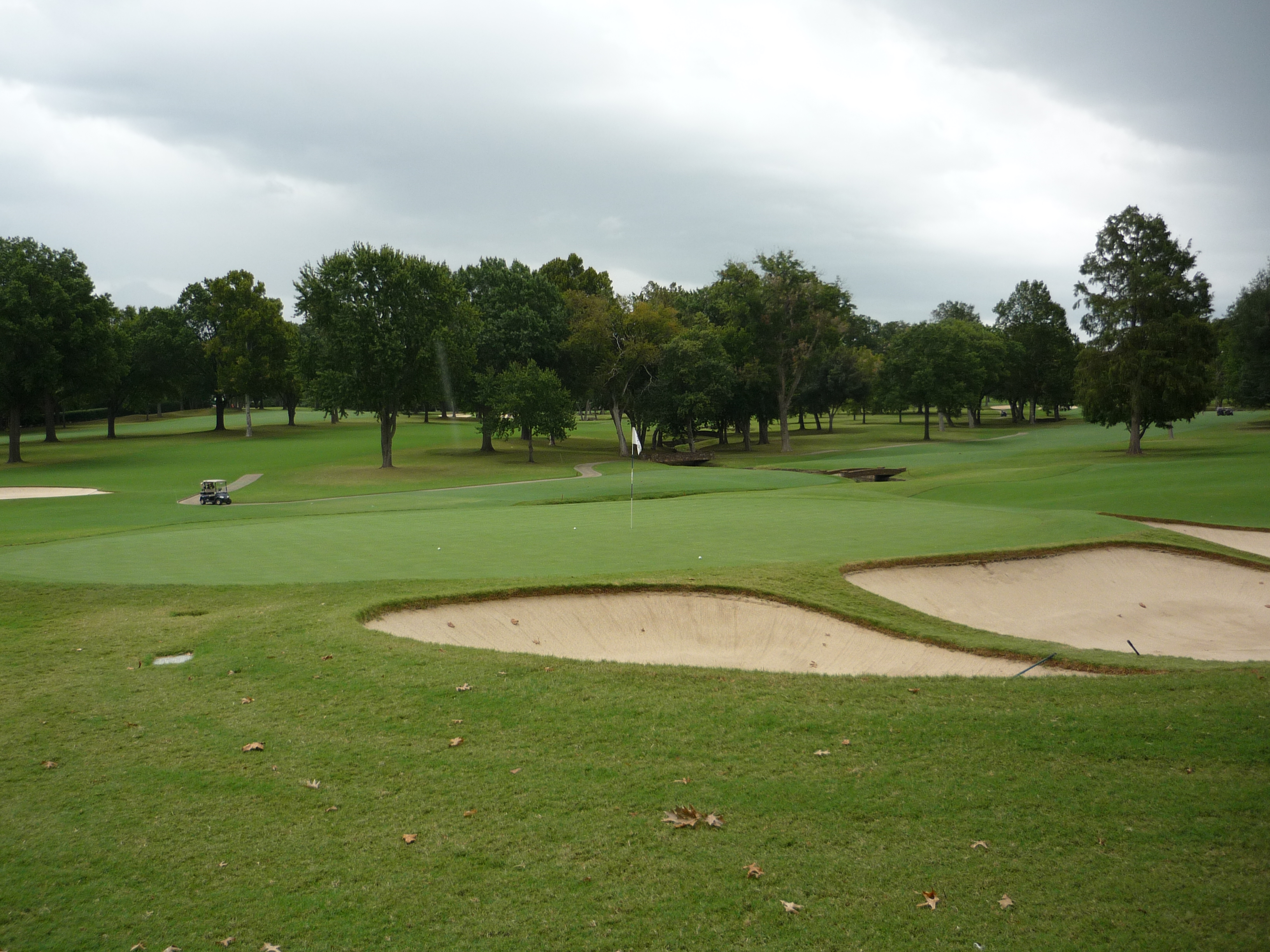
Hole 6 – 150 yards – Par 3
The photo below brings up a funny memory of the round. Our host mentioned that this was one example to tell if a club has too much money. We all asked what he meant? Then he showed us the trash can below. He said they bury them so as not to detract from the view. I had a good laugh at this one. I have never seen this before.
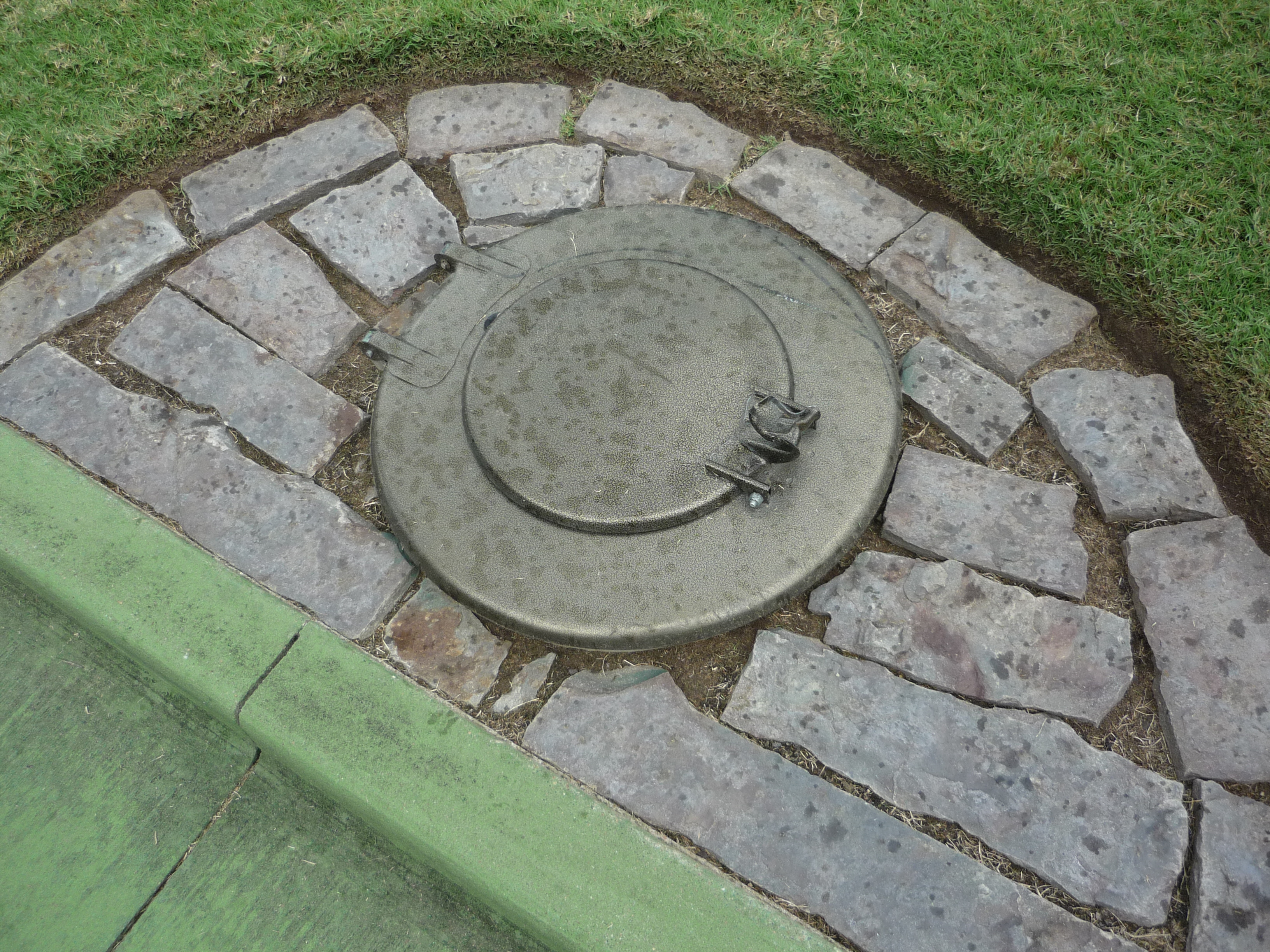
Once you get past the fancy wastebasket you have a delightful little par 3. The creek is only in play if you pull your tee shot, but the bunkers are waiting to swallow your ball. The green is not overly deep making club choice important.
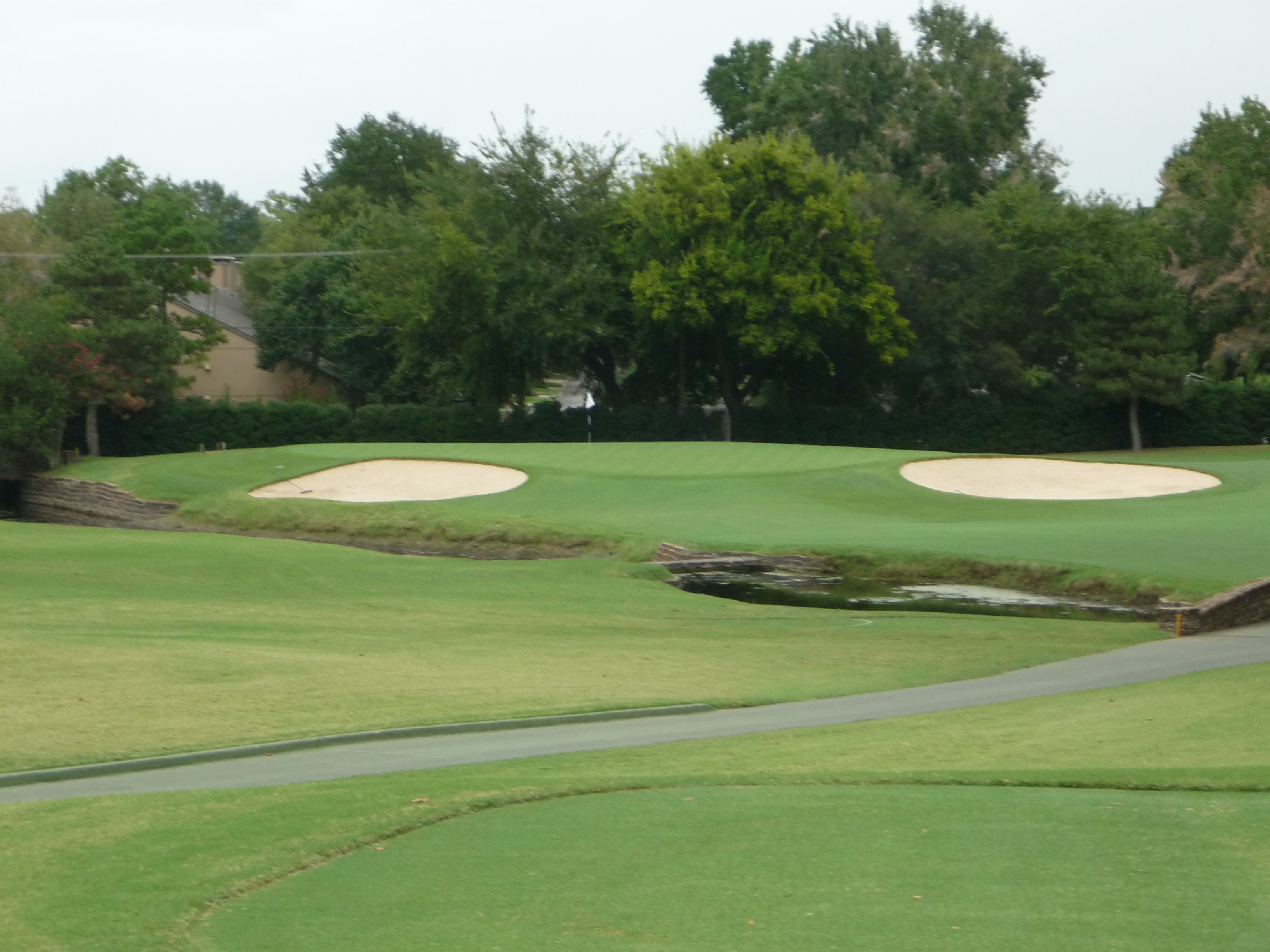
There is some great, subtle internal sloping in this green.
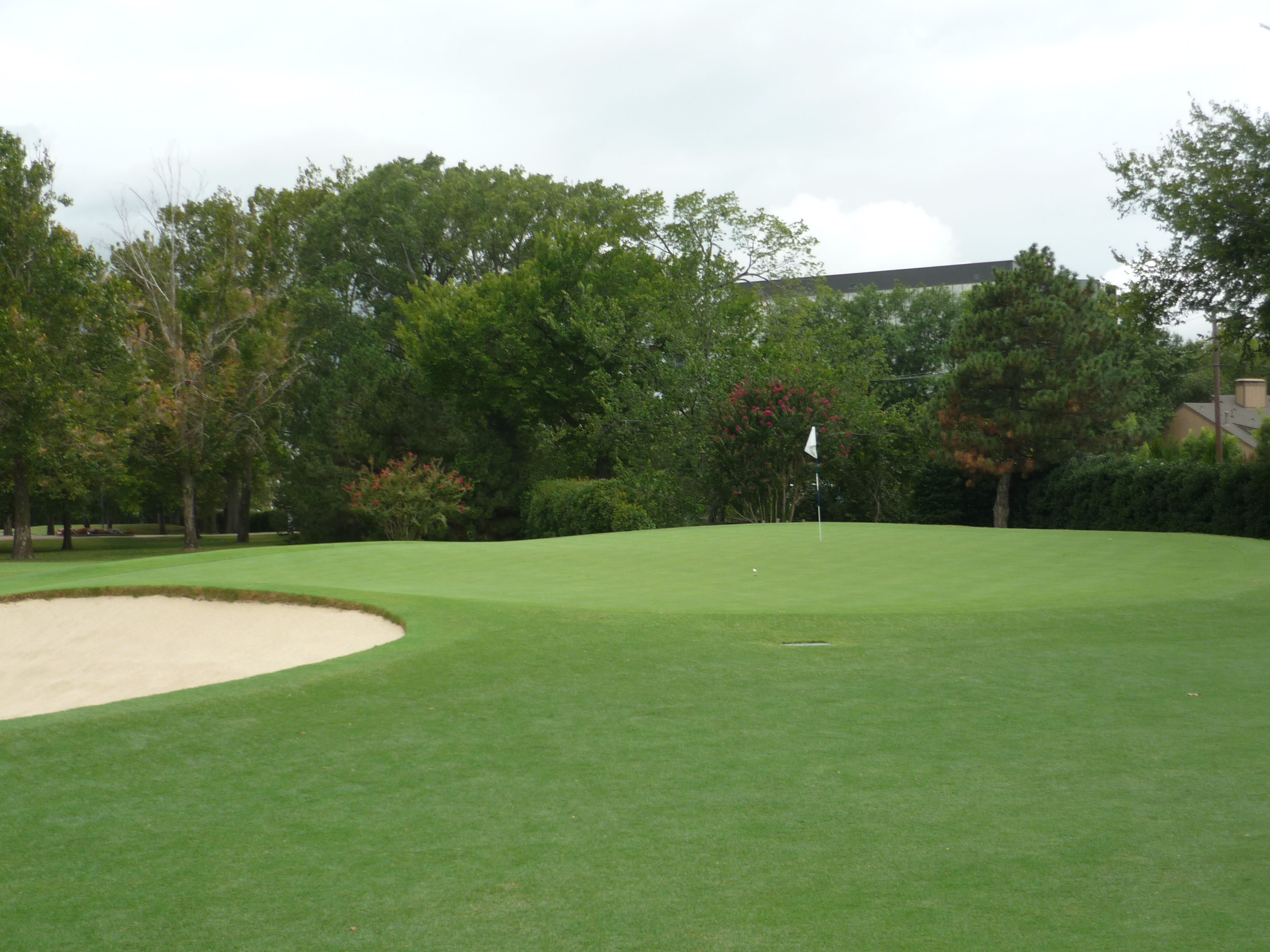
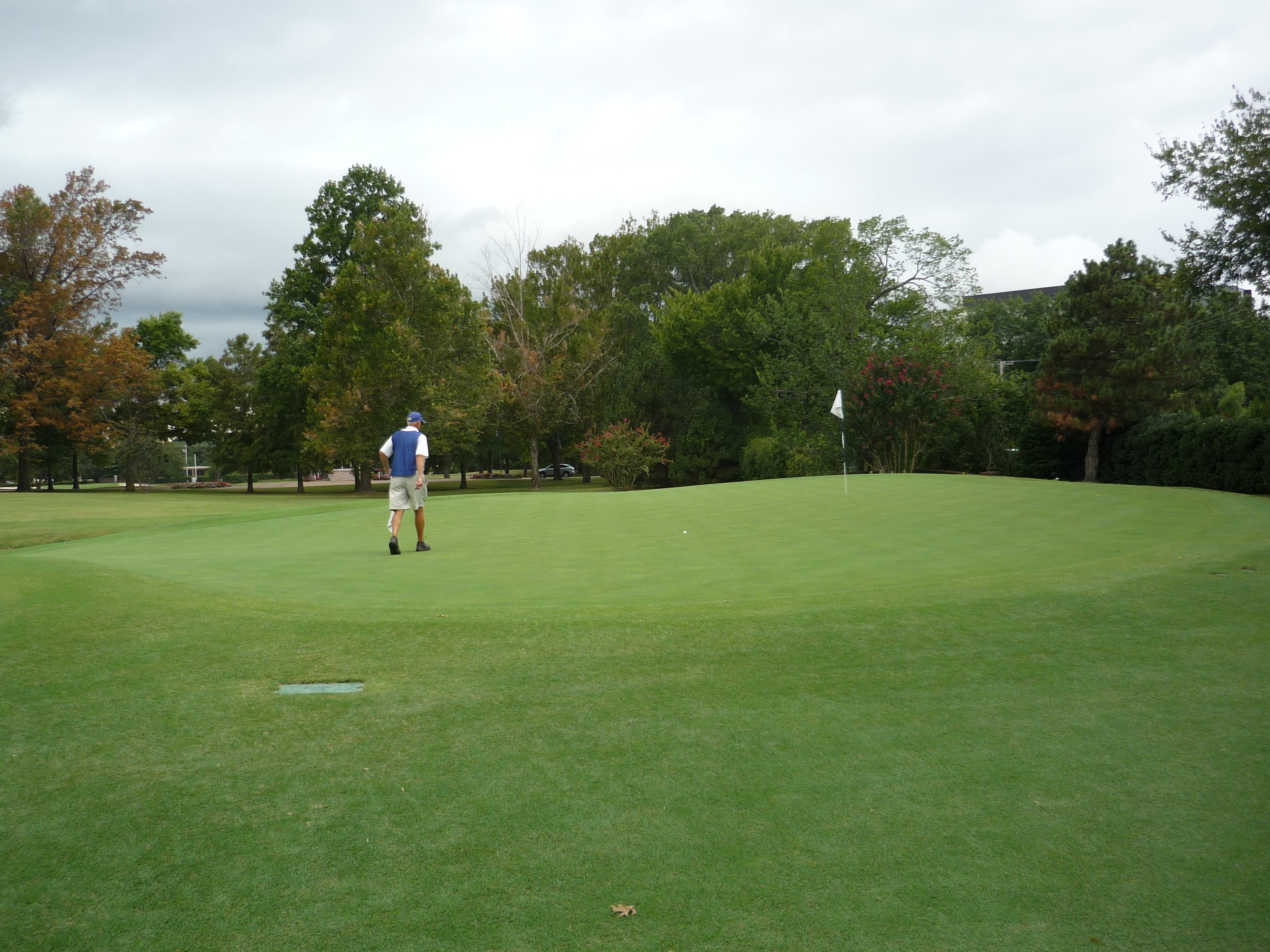
Hole 7 – 372 yards – Par 4
The trees make a reappearance to make this a bit of a narrow tee shot. You can get away with three wood here for accuracy. A draw works well on this dogleg to the left.
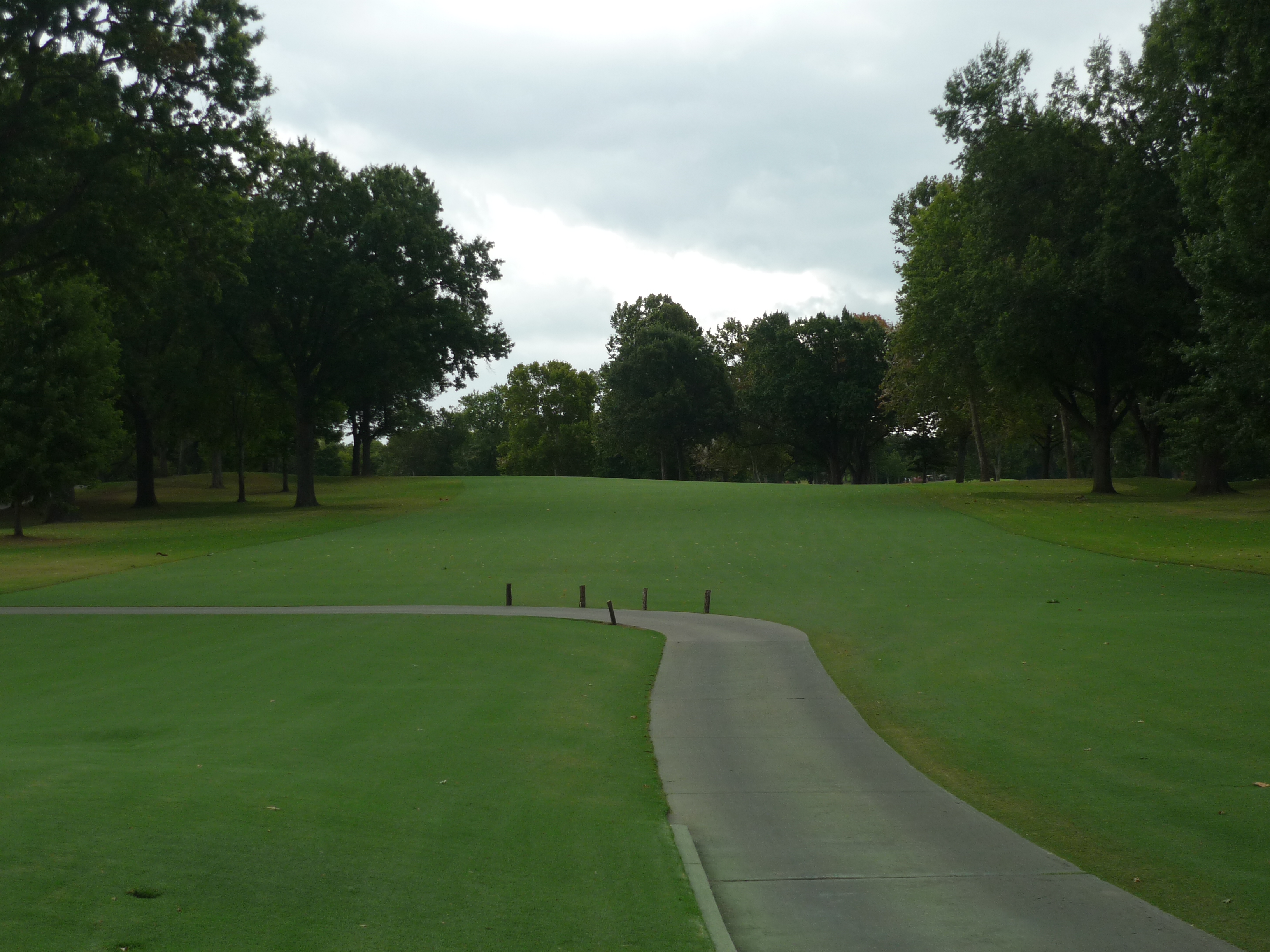
You can tell so far that Maxwell is a fan of bunkers. That is the case on the green below as well. What I like is he does leave some collection areas around the greens. To me this means you need to be prepared for sand shots or challenging chips. It makes the golfer think a bit more.
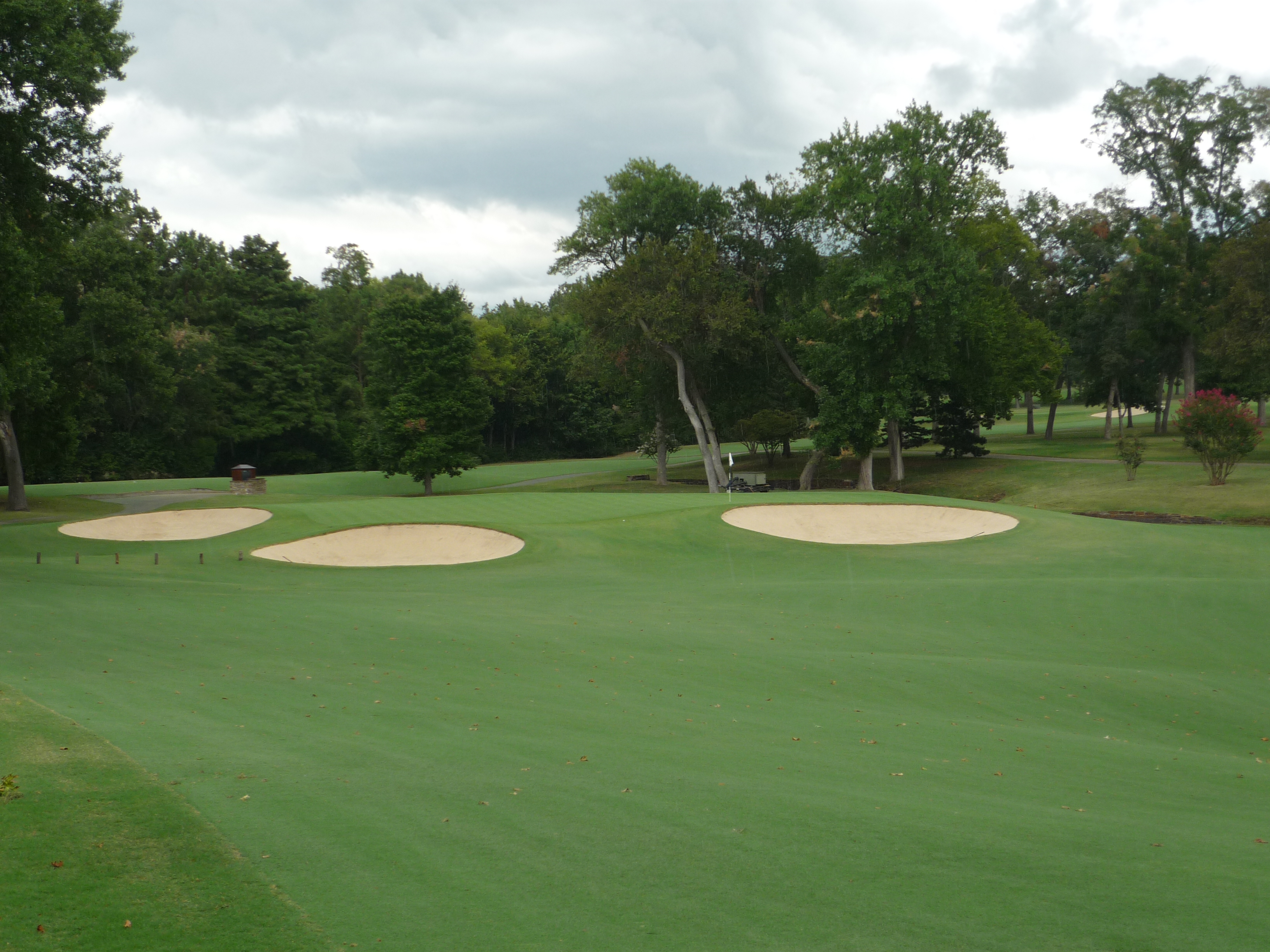
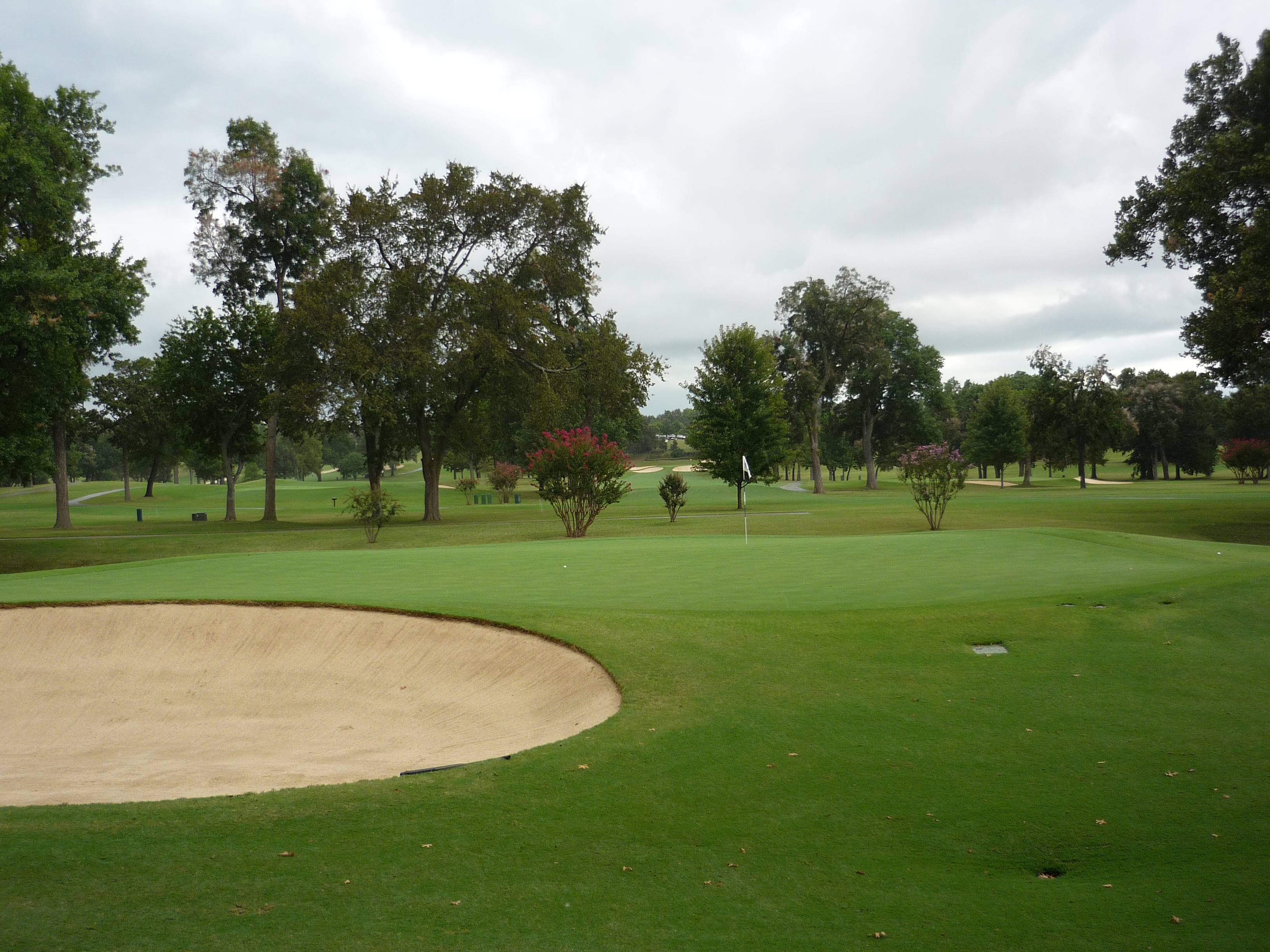
Hole 8 – 178 yards – Par 3
This hole plays substantially longer from the pro tees. That explains Hubert Green’s strategy in the 1977 US Open. Our caddie told us he played short of this green every day to avoid trouble. It worked for him as he ended up the champion while playing through the stress of death threats. Our tee was much more manageable. The green is open in front with your only real trouble on each side.
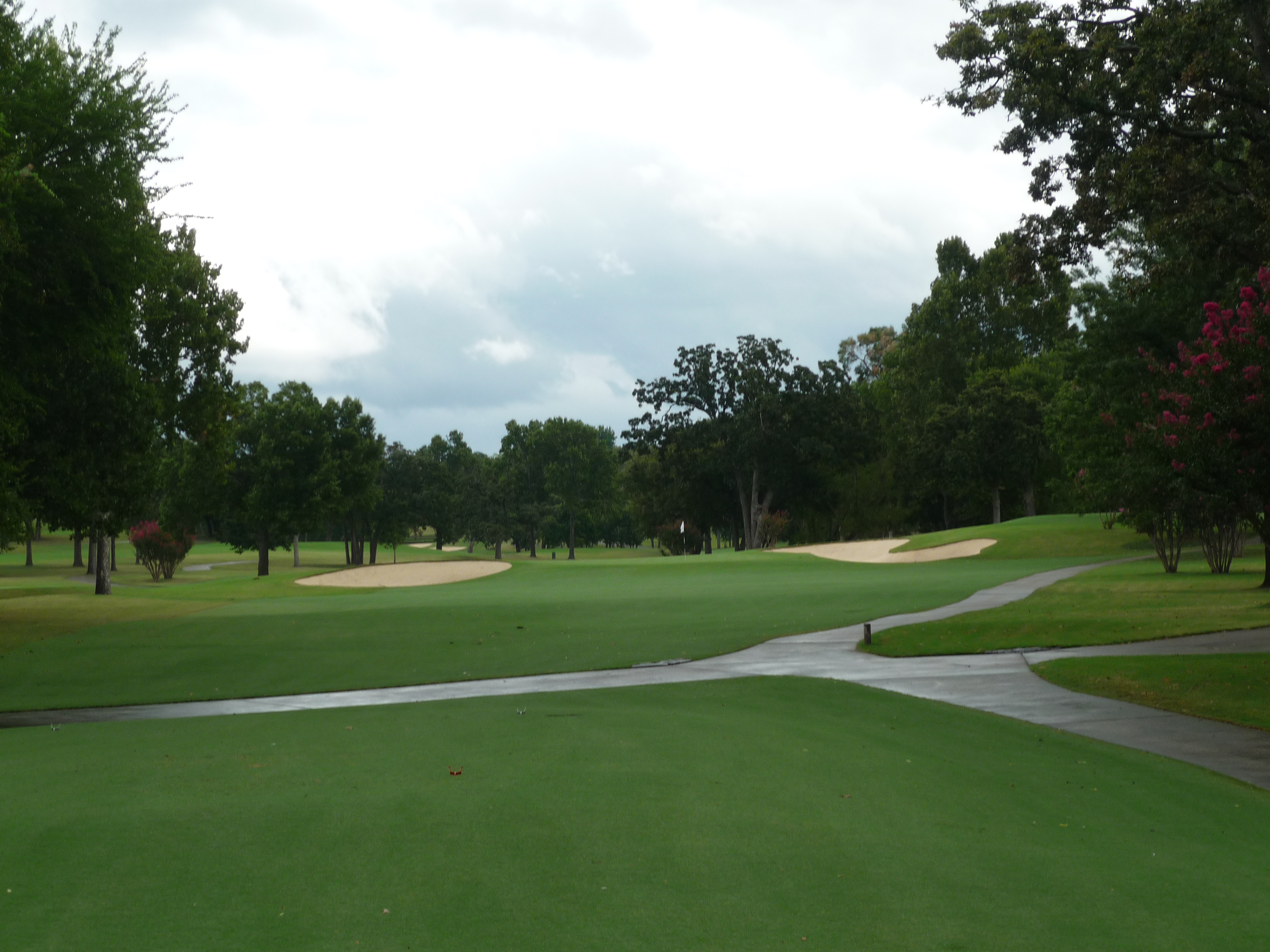
With this pin you do not want to be above the hole. It is a very quick putt with the potential to run it off the green if the surfaces are overly slick.
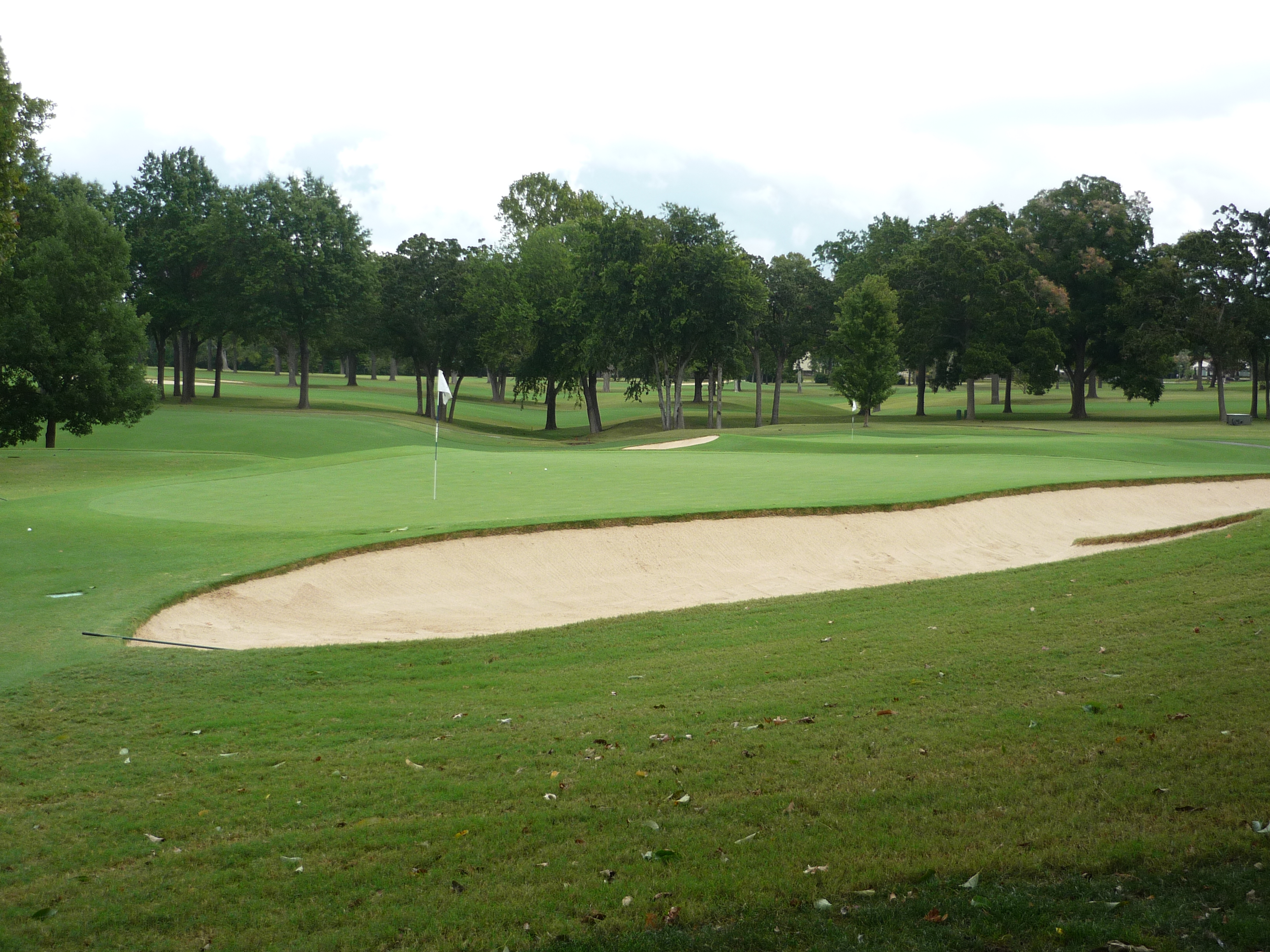
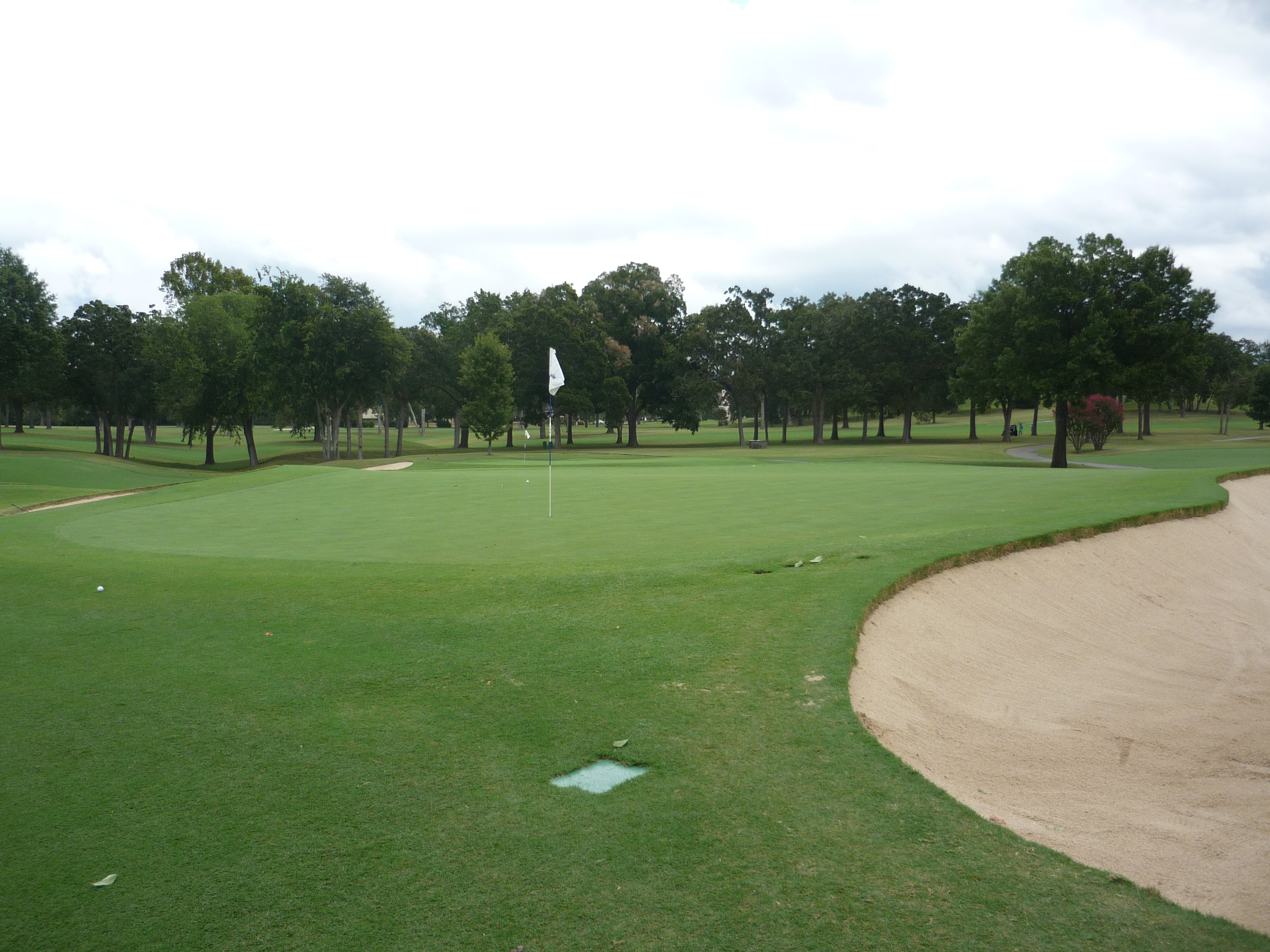
Hole 9 – 359 yards – Par 4
The final hole on the front side is a slight dogleg right. It plays longer than its yardage due to the uphill slope. The fairway bunker is definitely a place you do not want to be.
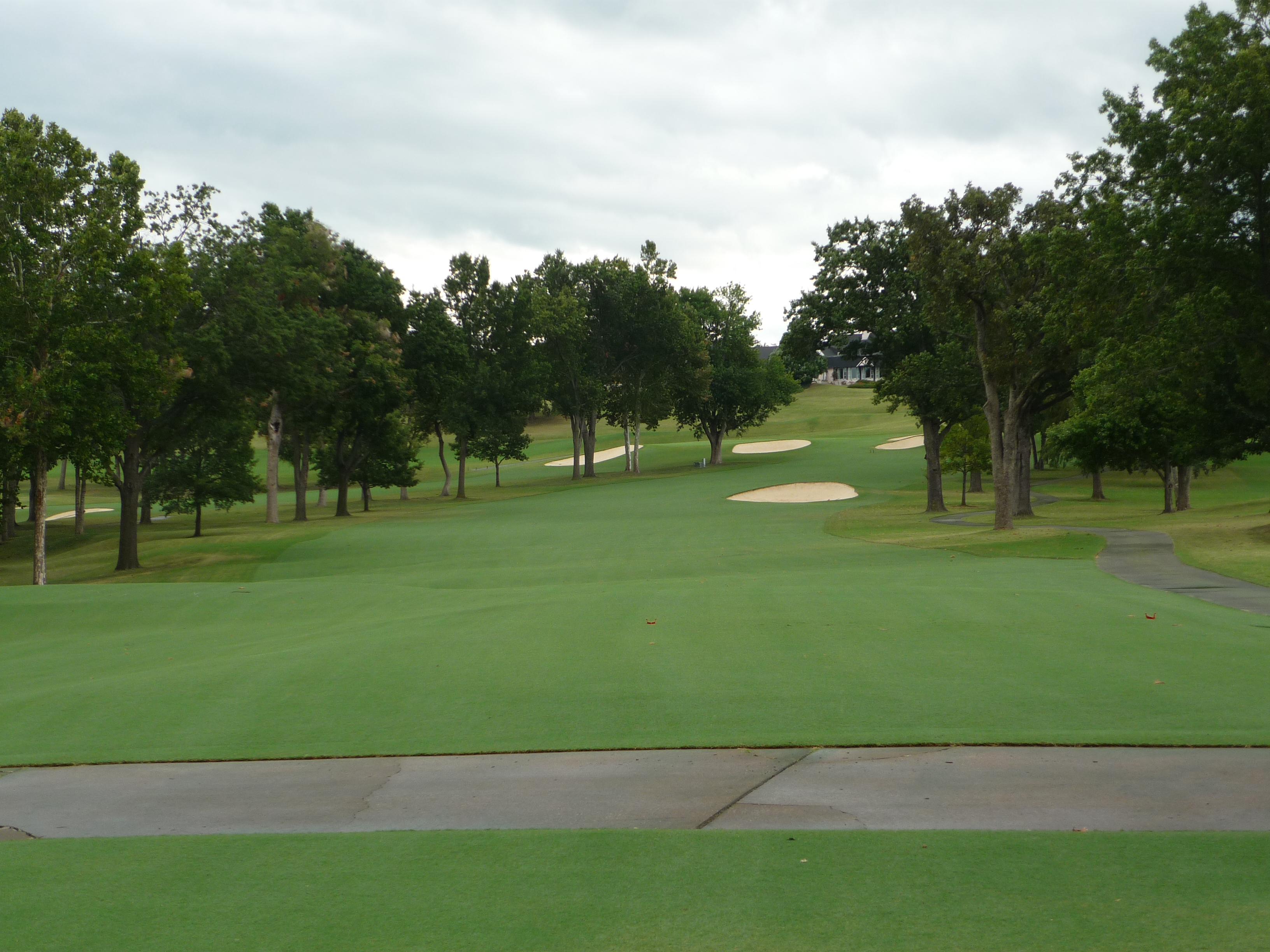
The approach shot plays quite a bit uphill. You must contend with the deep bunkers around the green. Make sure to take enough club to get to the putting surface.
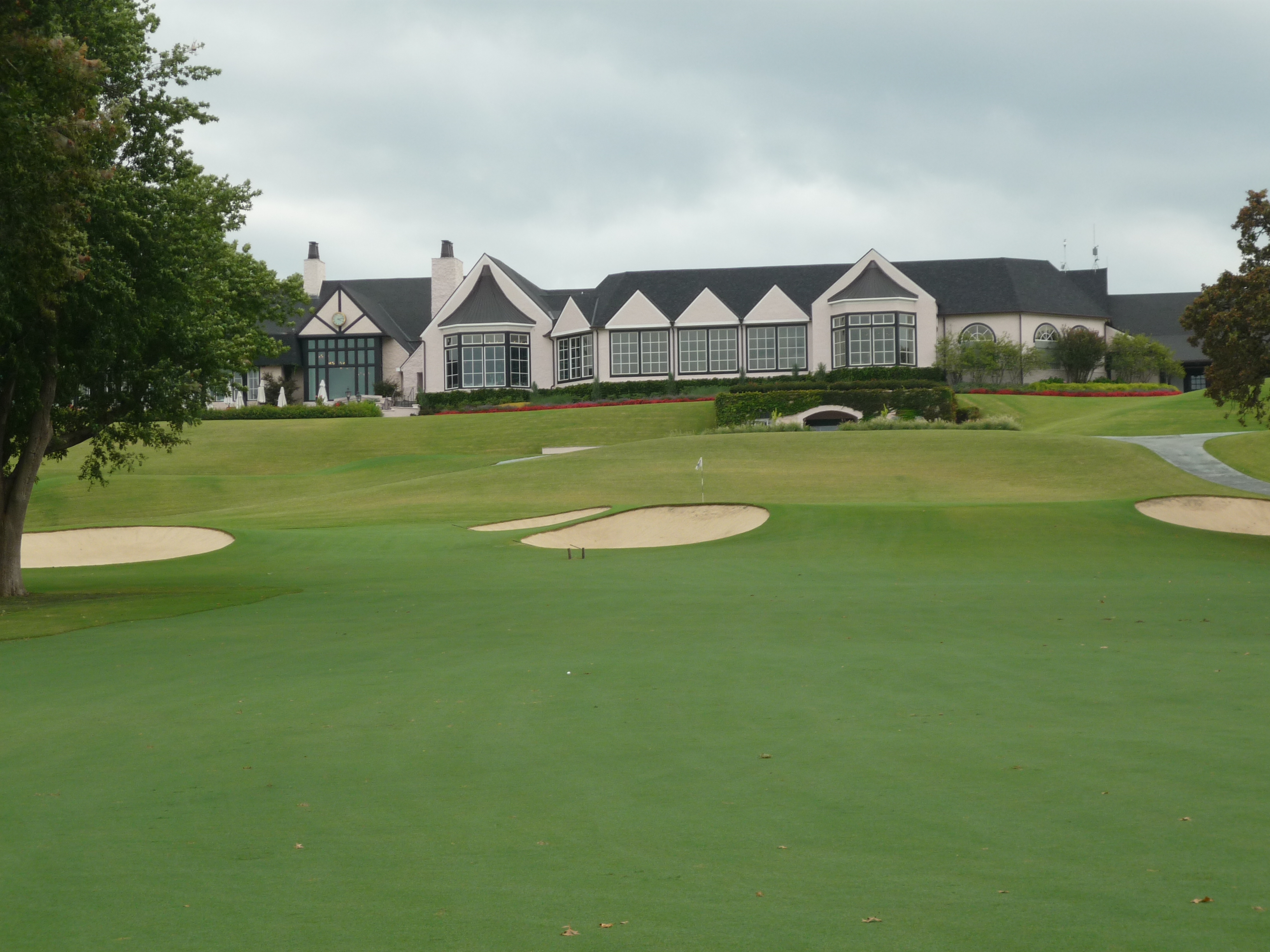
The green has a lot of slope from the back to the front. You can have some really ticklish putts if you are above the hole. This is one of the more difficult greens to putt.
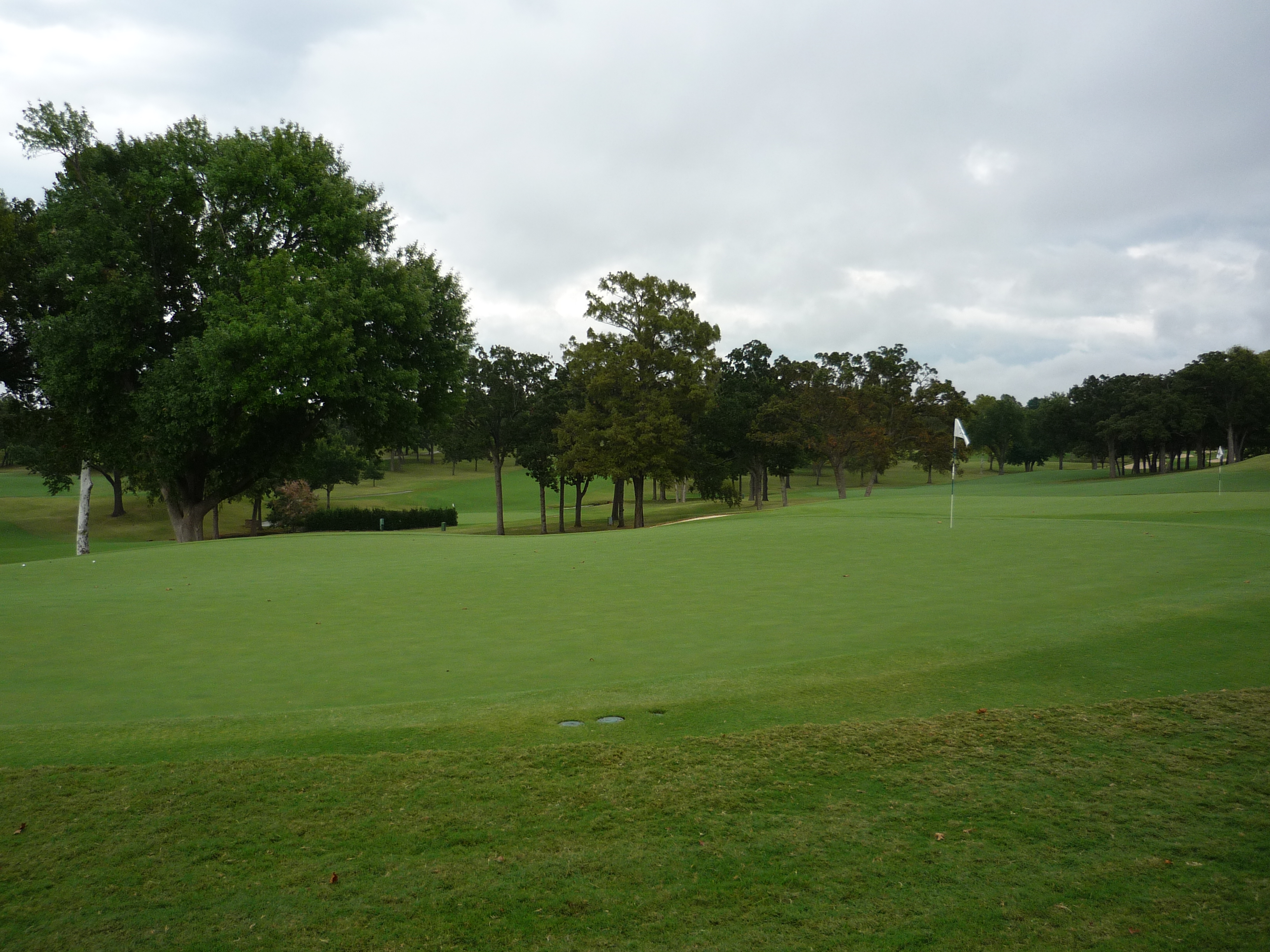
Hole 10 – 366 yards – Par 4
It is a prudent play to take less than driver here since you need to be on the left side of the fairway. The trees can be trouble if you push your shot out to the right.
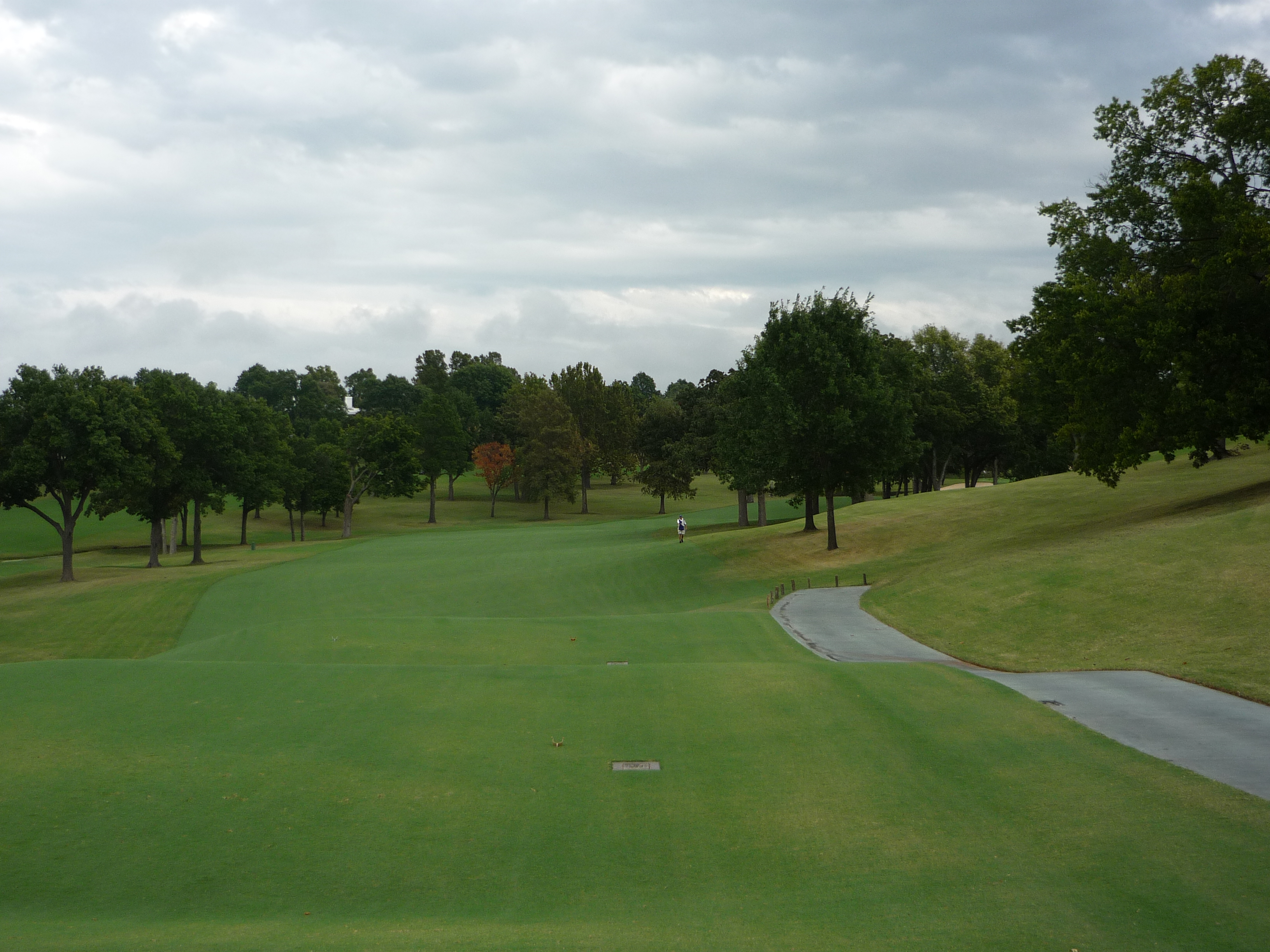
This is another approach to an elevated green. Any shots that miss the green will have to deal with difficult chips.
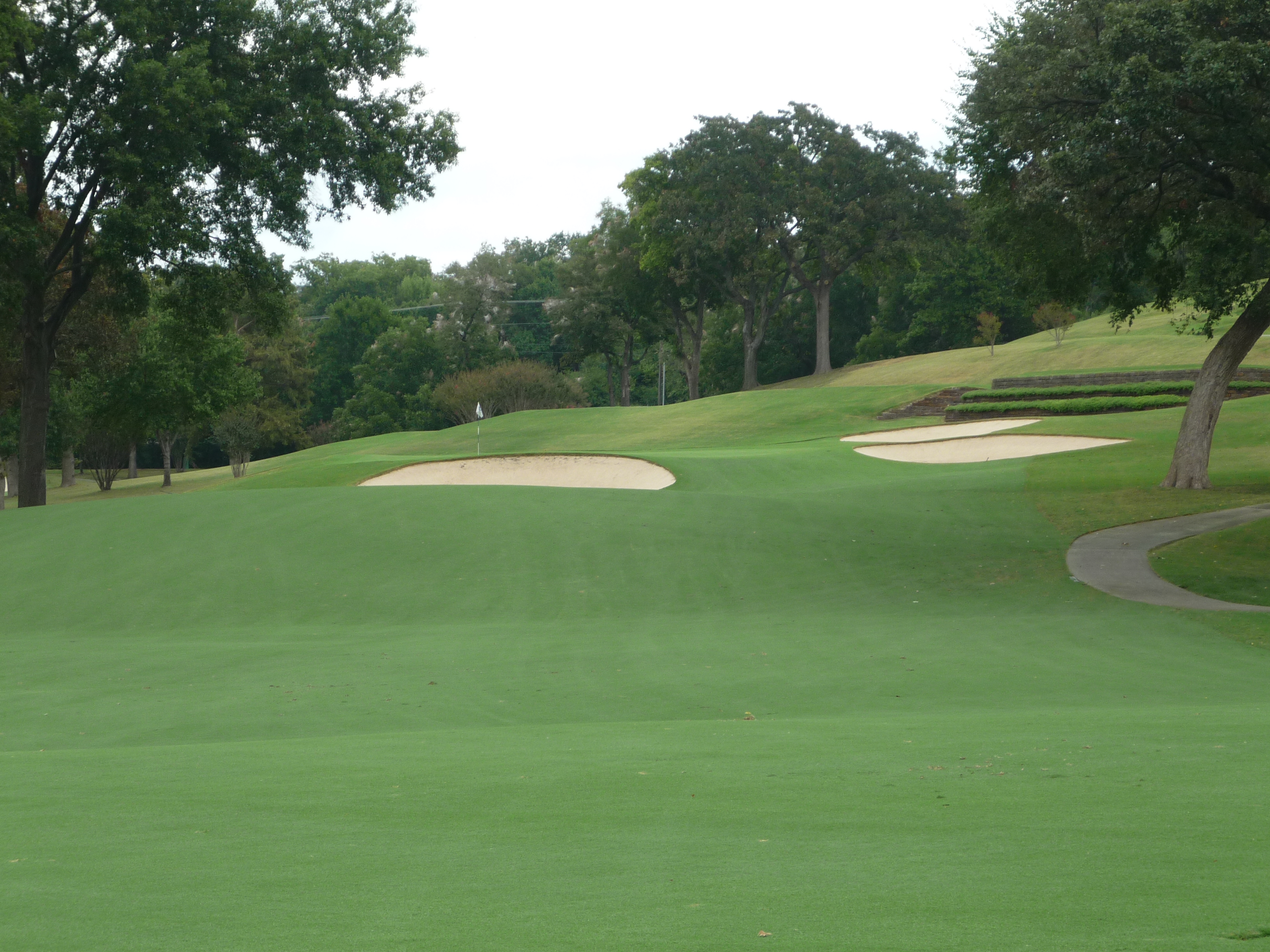
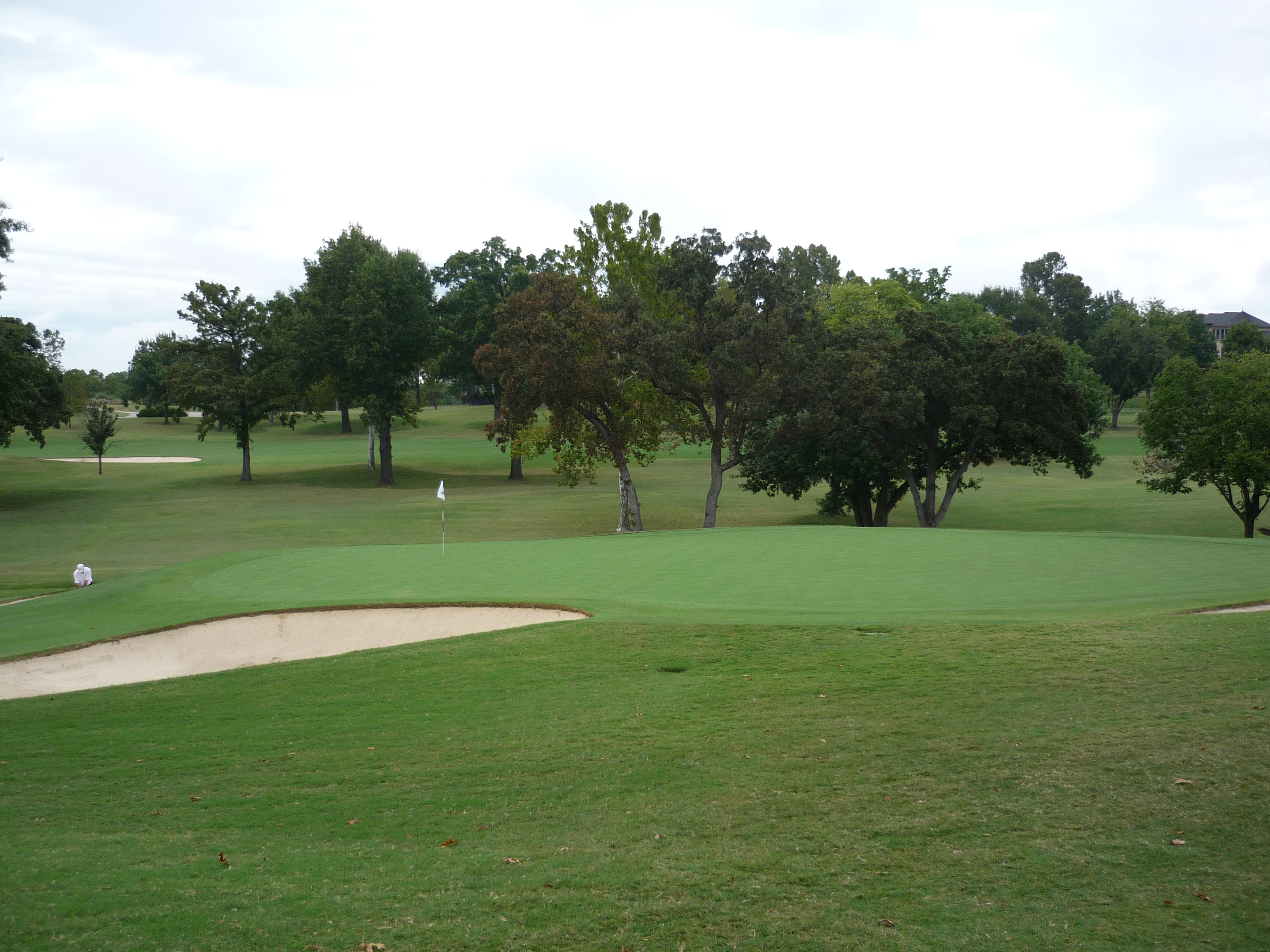
Hole 11 – 155 yards – Par 3
I’m not going to get into the story of Roger Wheeler’s murder at the club in 1981, but you can look it up. It was also chronicled in the movie about Whitey Bulger’s life entitled Black Mass. That being said, the gate used by the killer to escape was previously off to the right behind this green. Extensive renovations have been done to the club since and now there is one entrance.
The tee shot is slightly downhill to a well-guarded green.
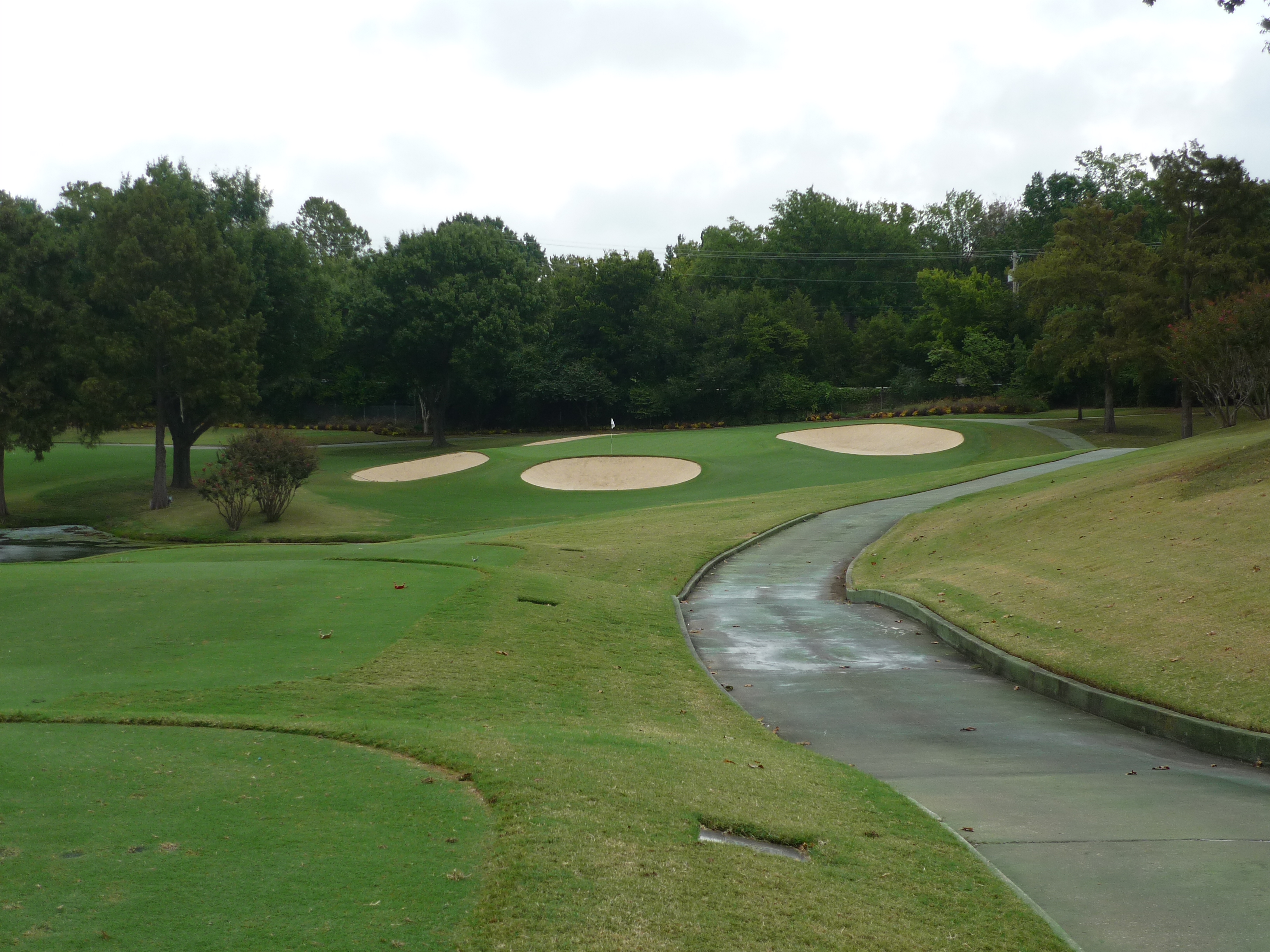
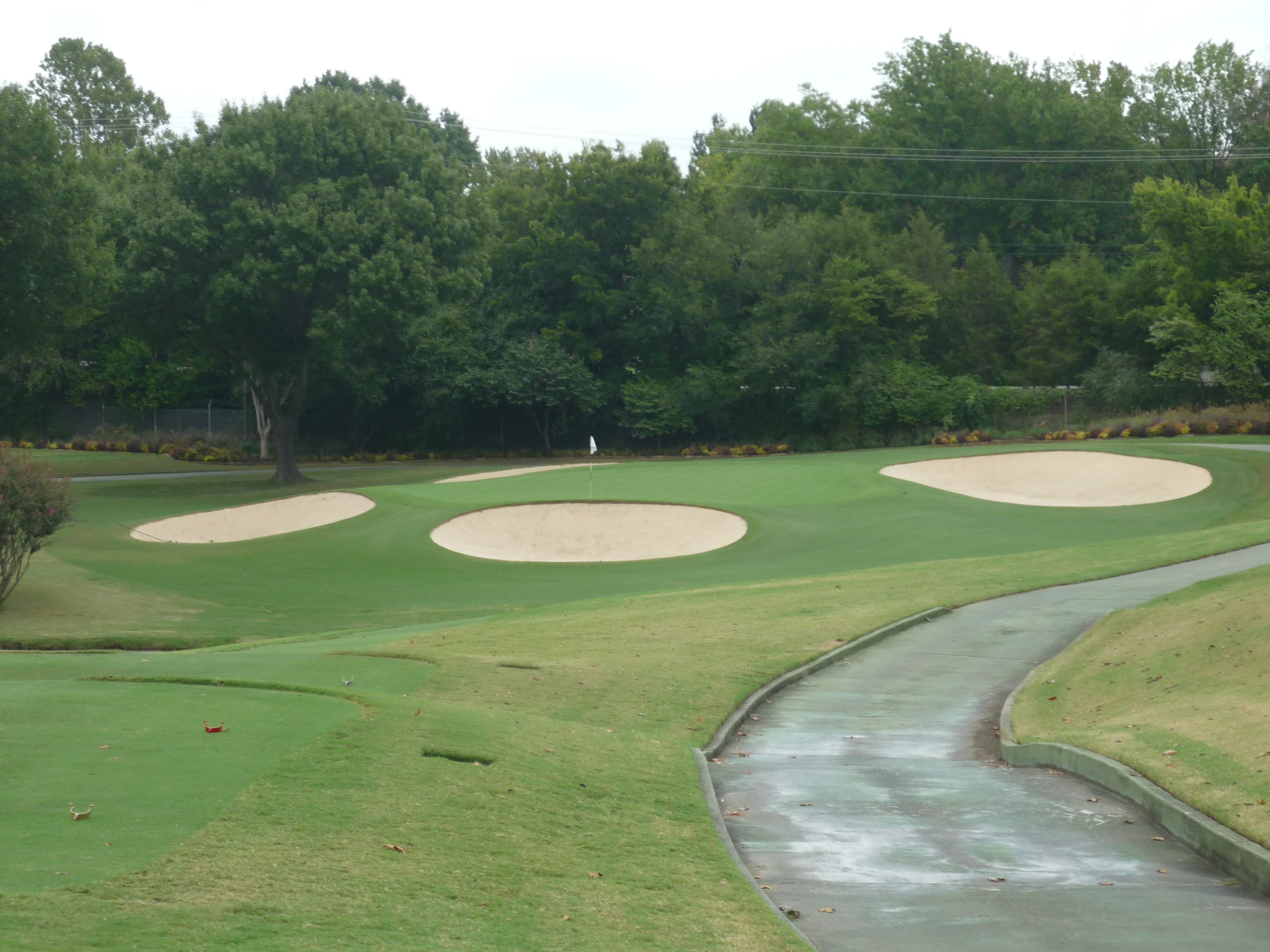
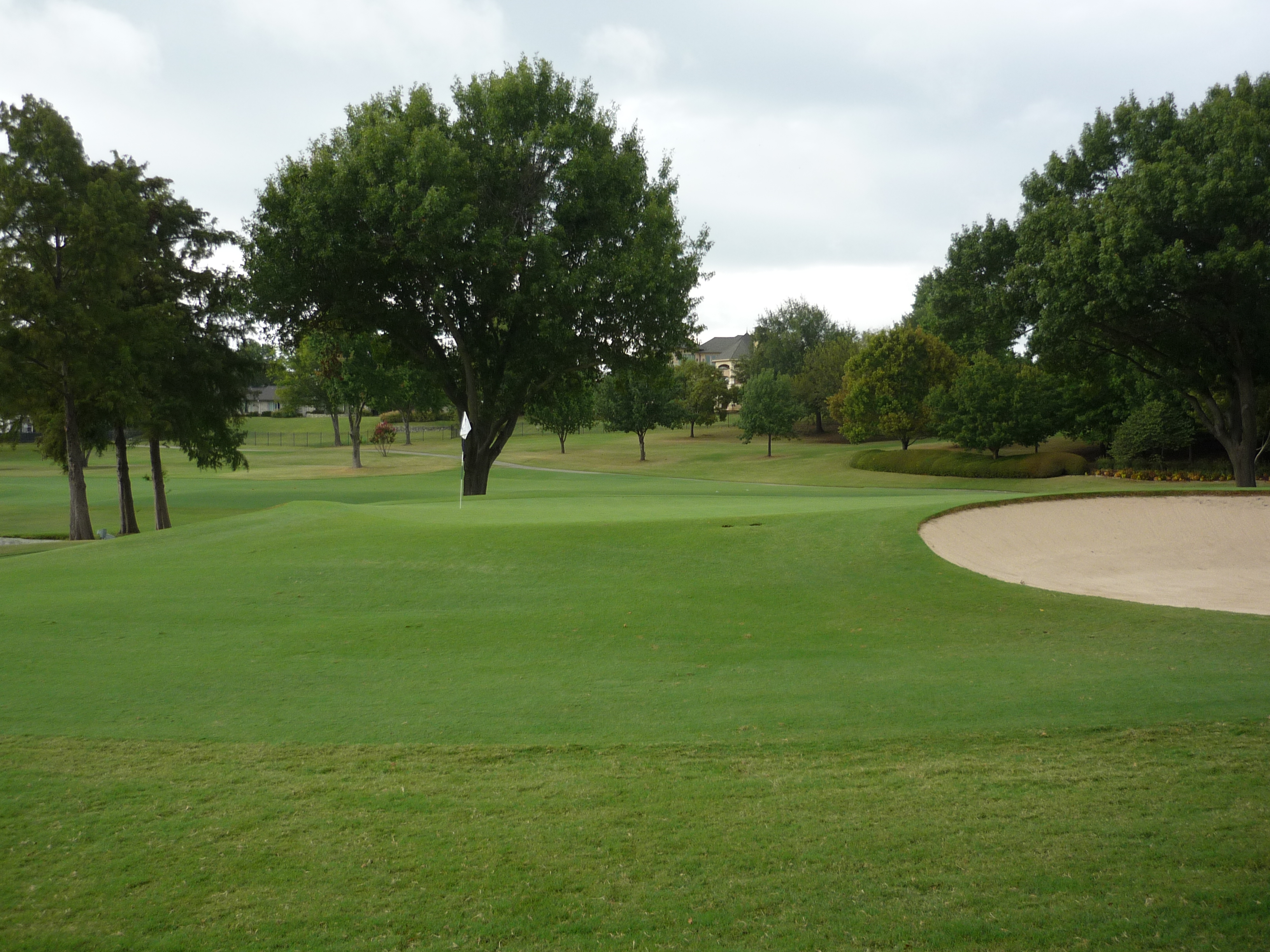
Hole 12 – 350 yards – Par 4
We were told that this was Arnold Palmer’s favorite 12th hole. That is a ringing endorsement considering all the wonderful courses he played. You need a good tee shot here to the blind landing area to set you up with a manageable second shot.
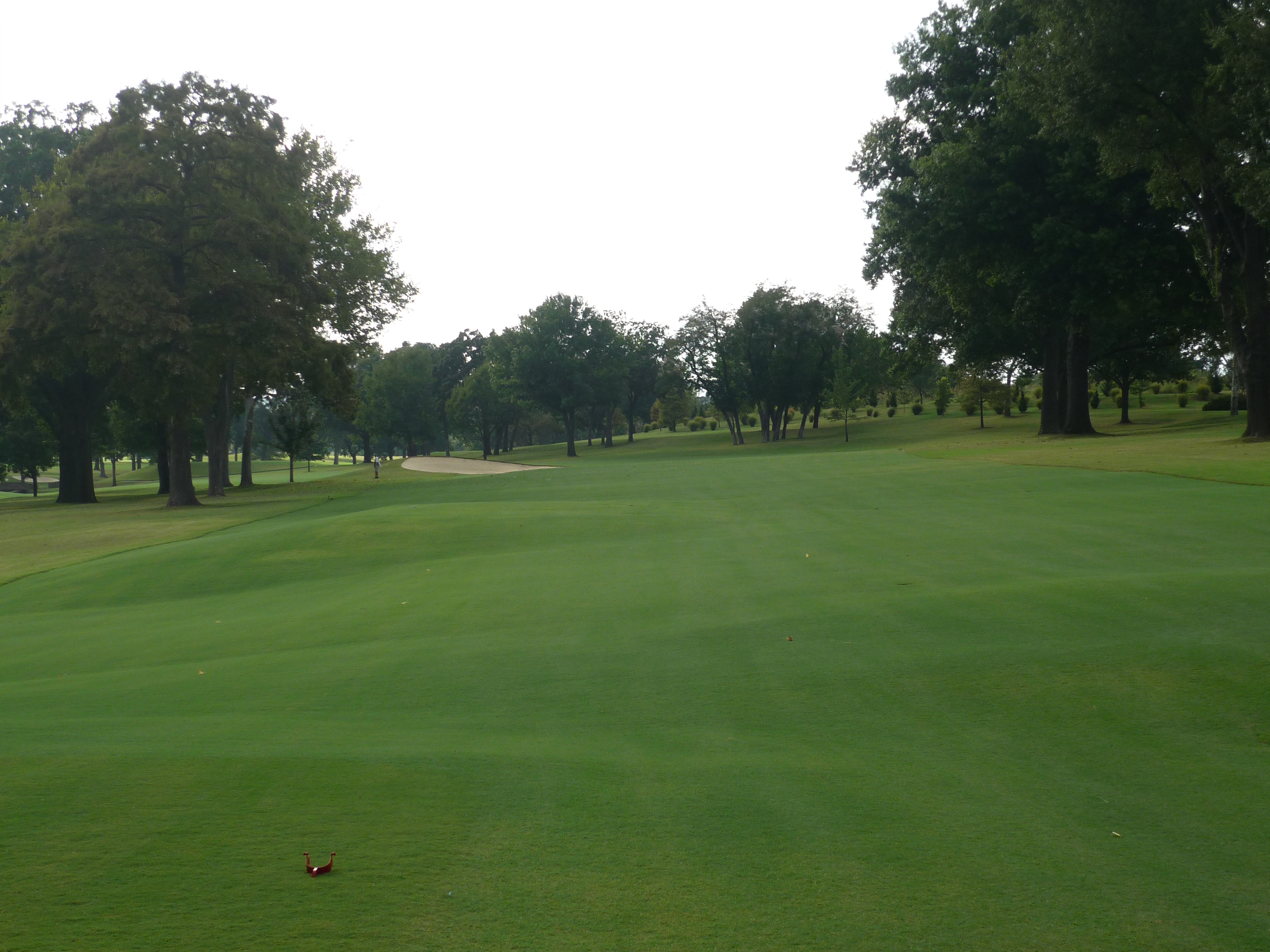
This approach shot is really picturesque in my opinion. I liked the flowers behind the green as well as the creek running in front of the green.
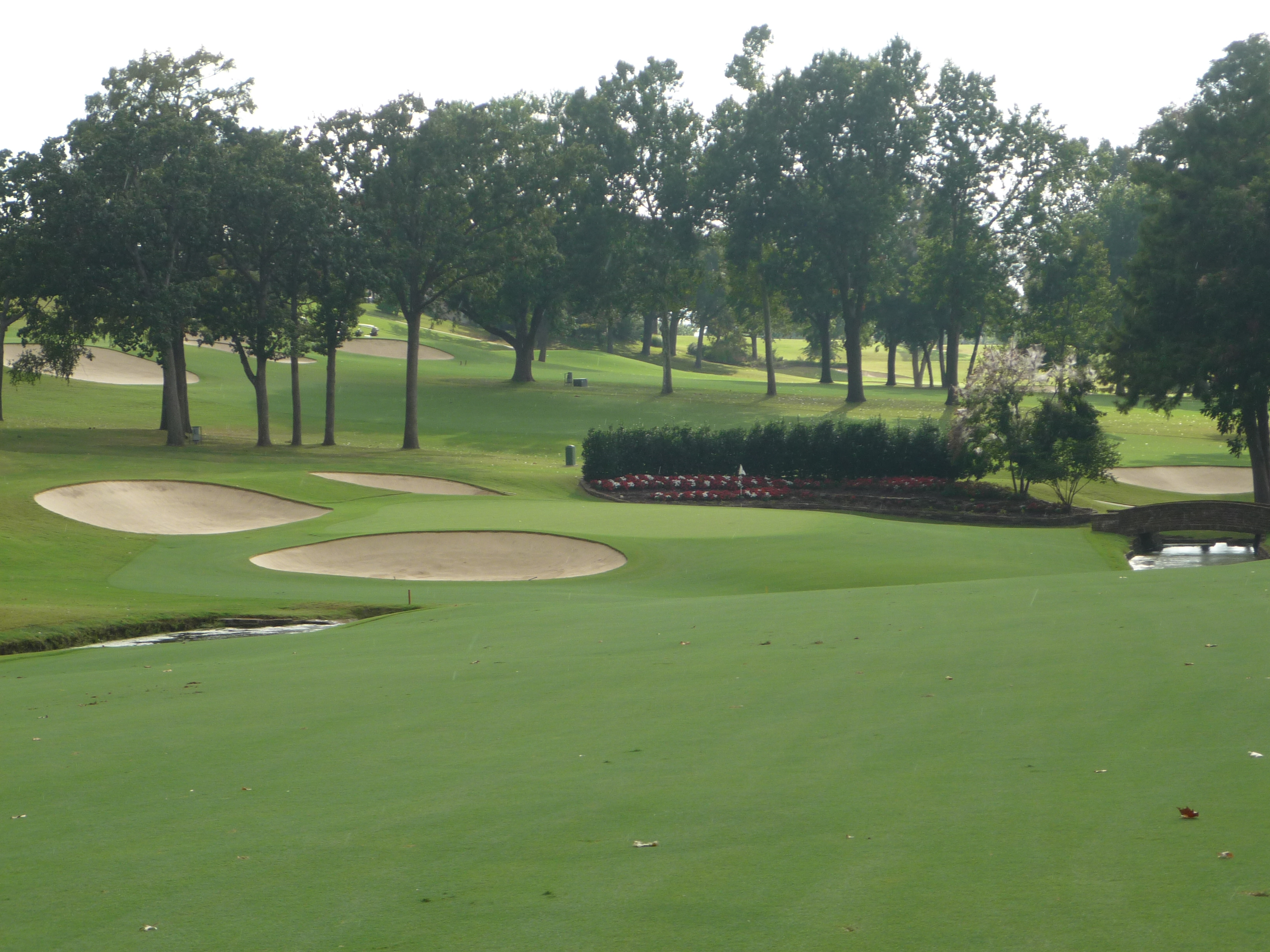
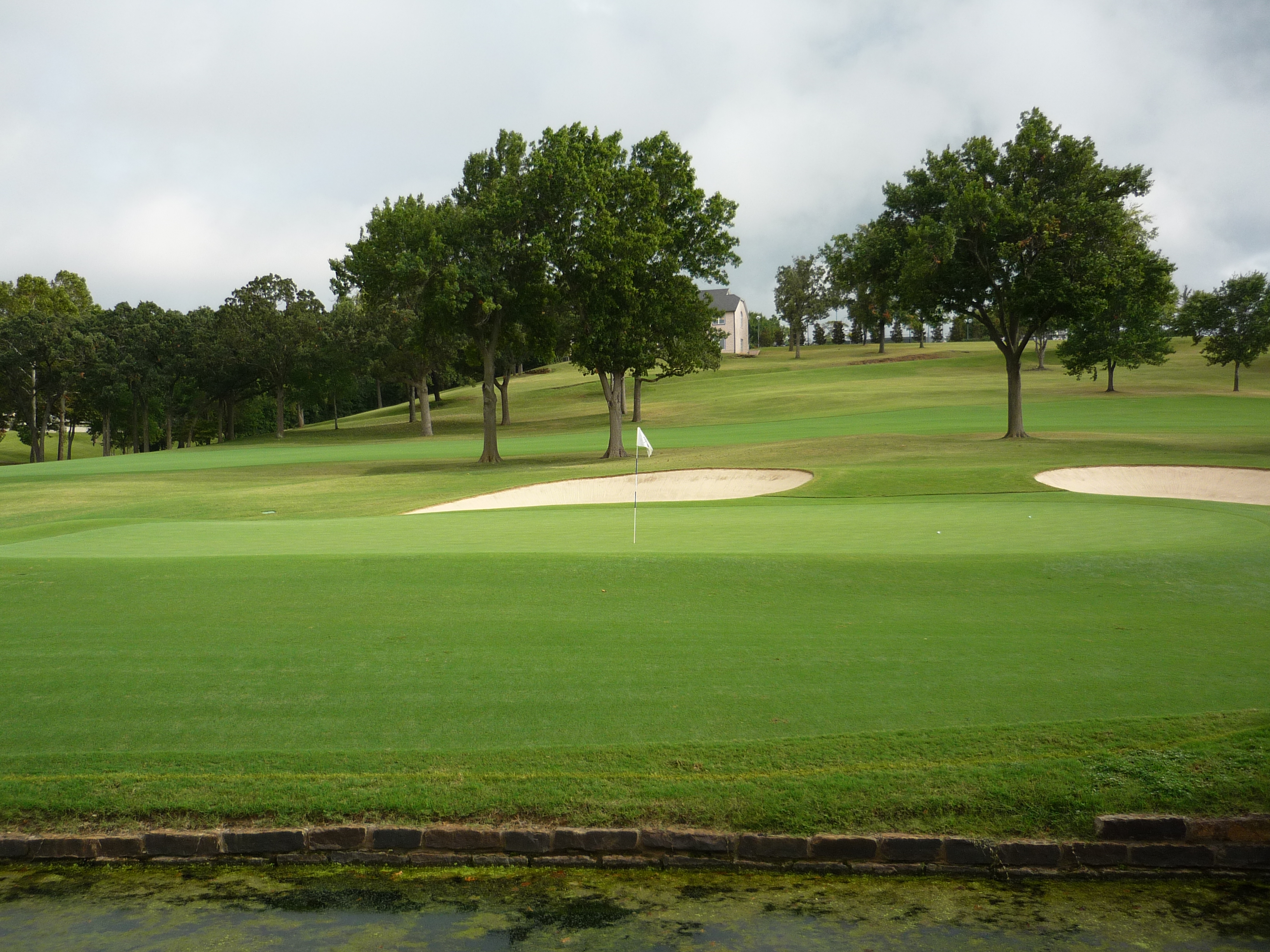
Hole 13 – 527 yards – Par 5
This hole can be a definite birdie opportunity if you start it out with a good drive. The hole bends slightly to the right.
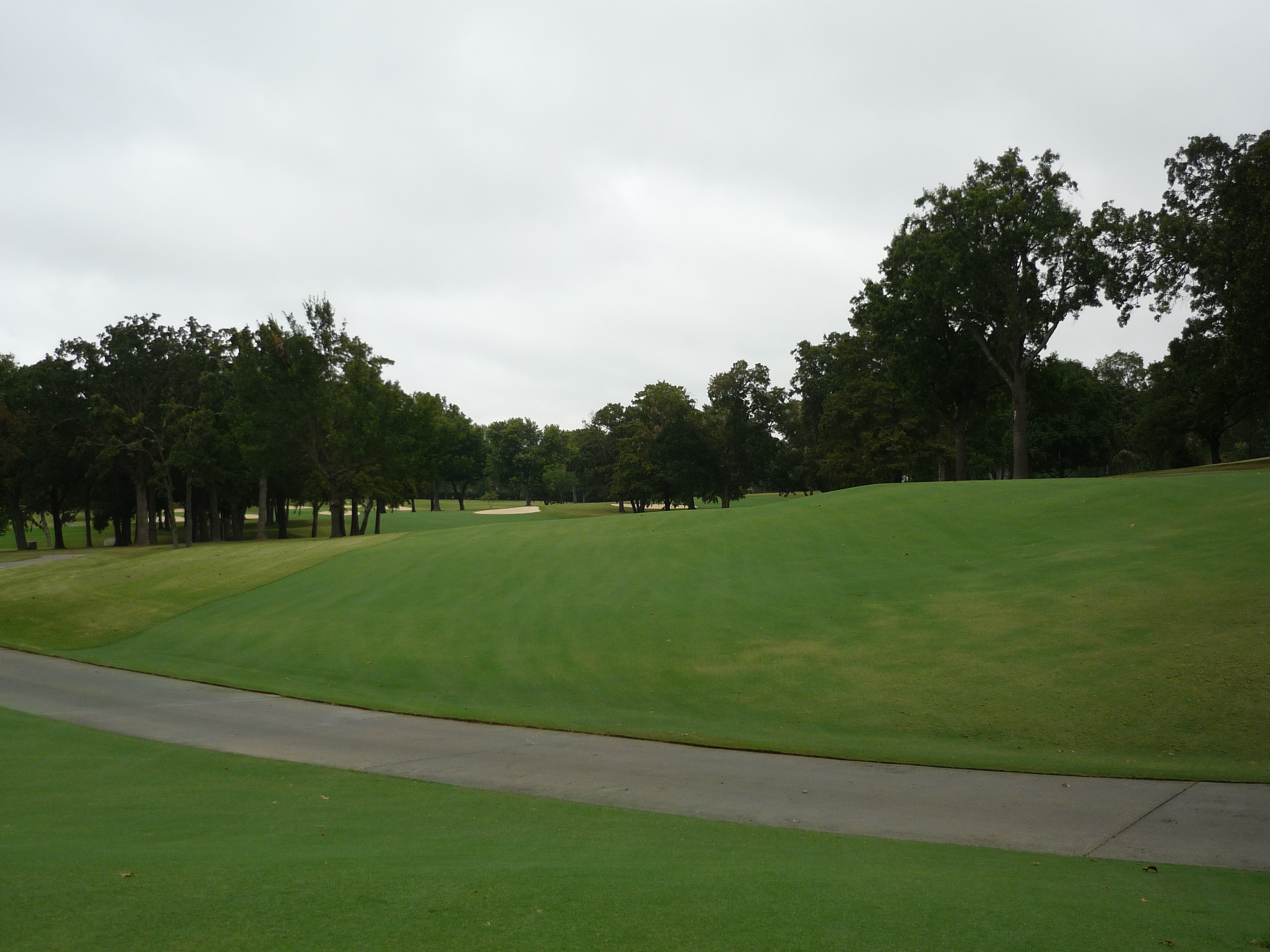
I wanted to show you the tee markers here. Check out the photos below.
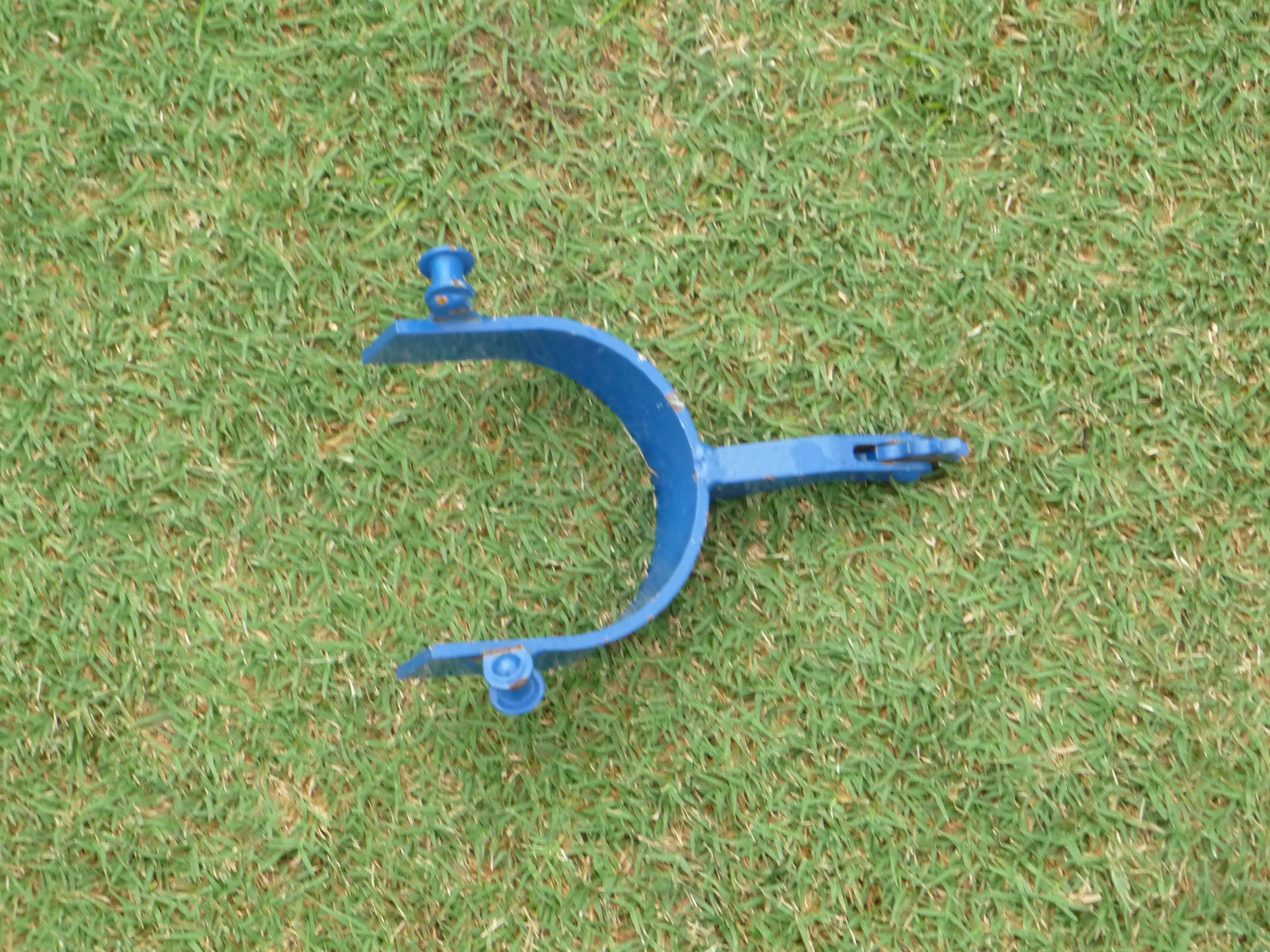
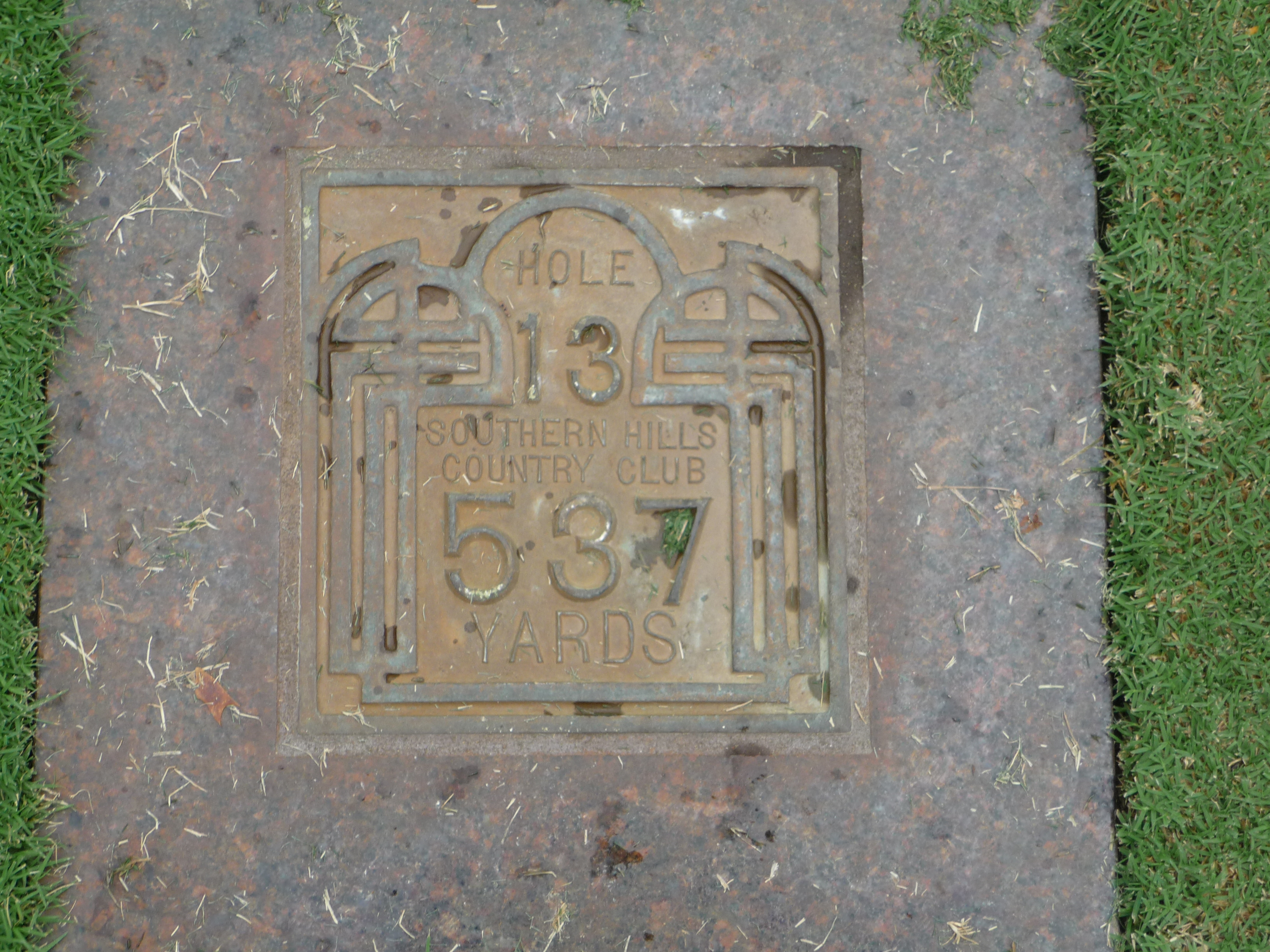
Here is a look at the second shot.
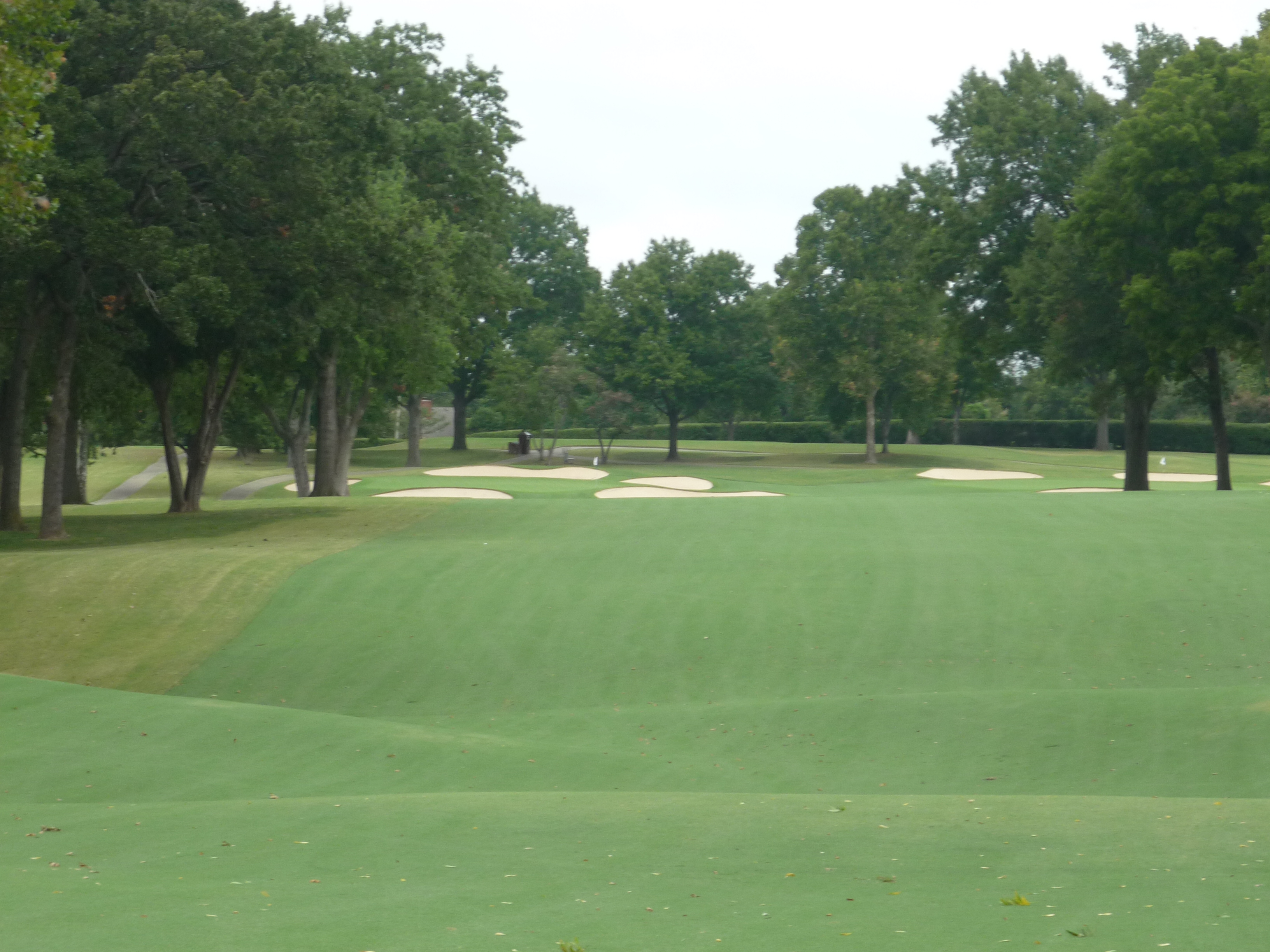
You can see from the photo below that the green is guarded by water in front. This must be accounted for when going for the green in two. In addition to the water, there is plenty of sand to avoid.
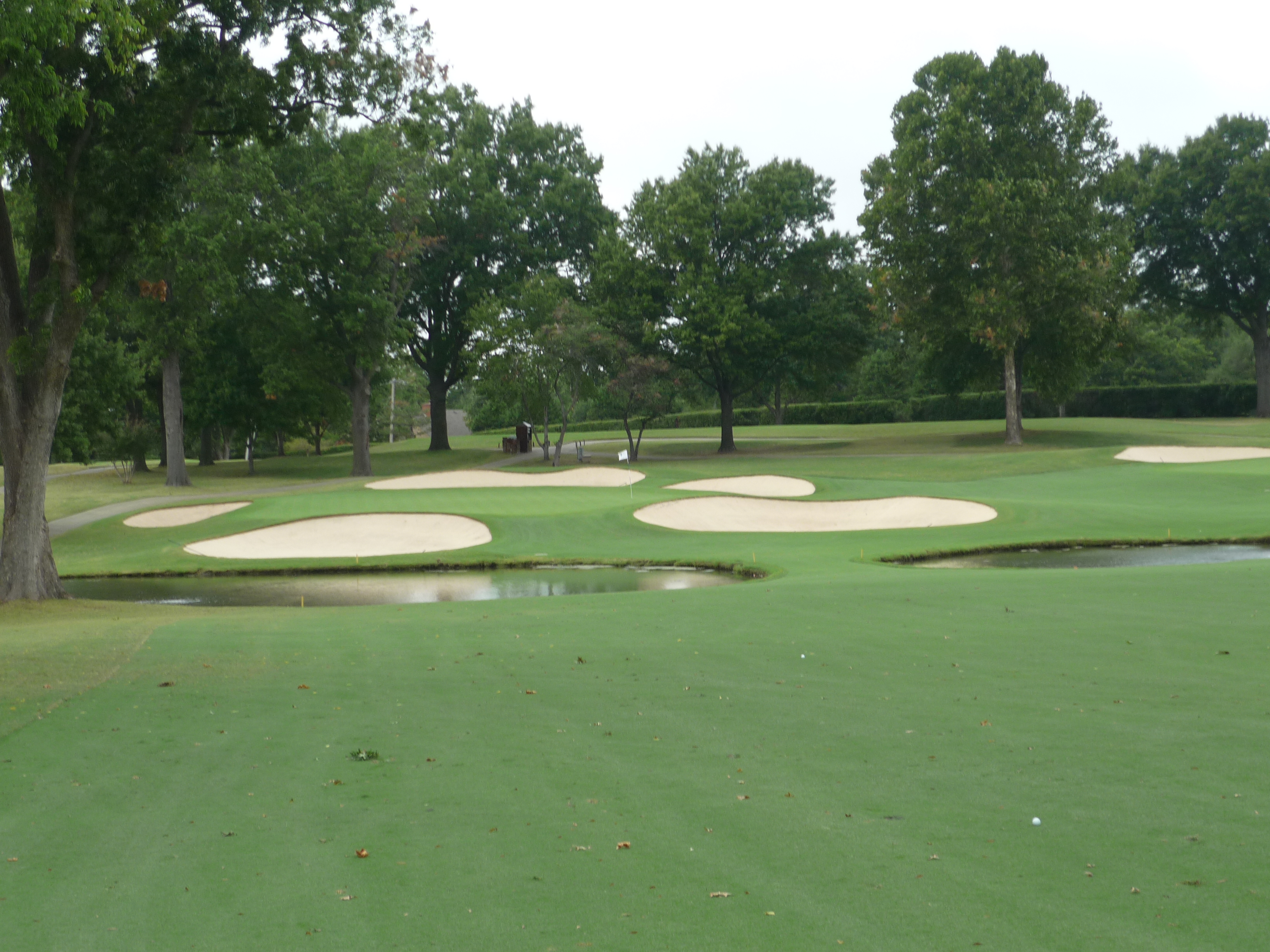
You can definitely see some of the green contours in the photo below.
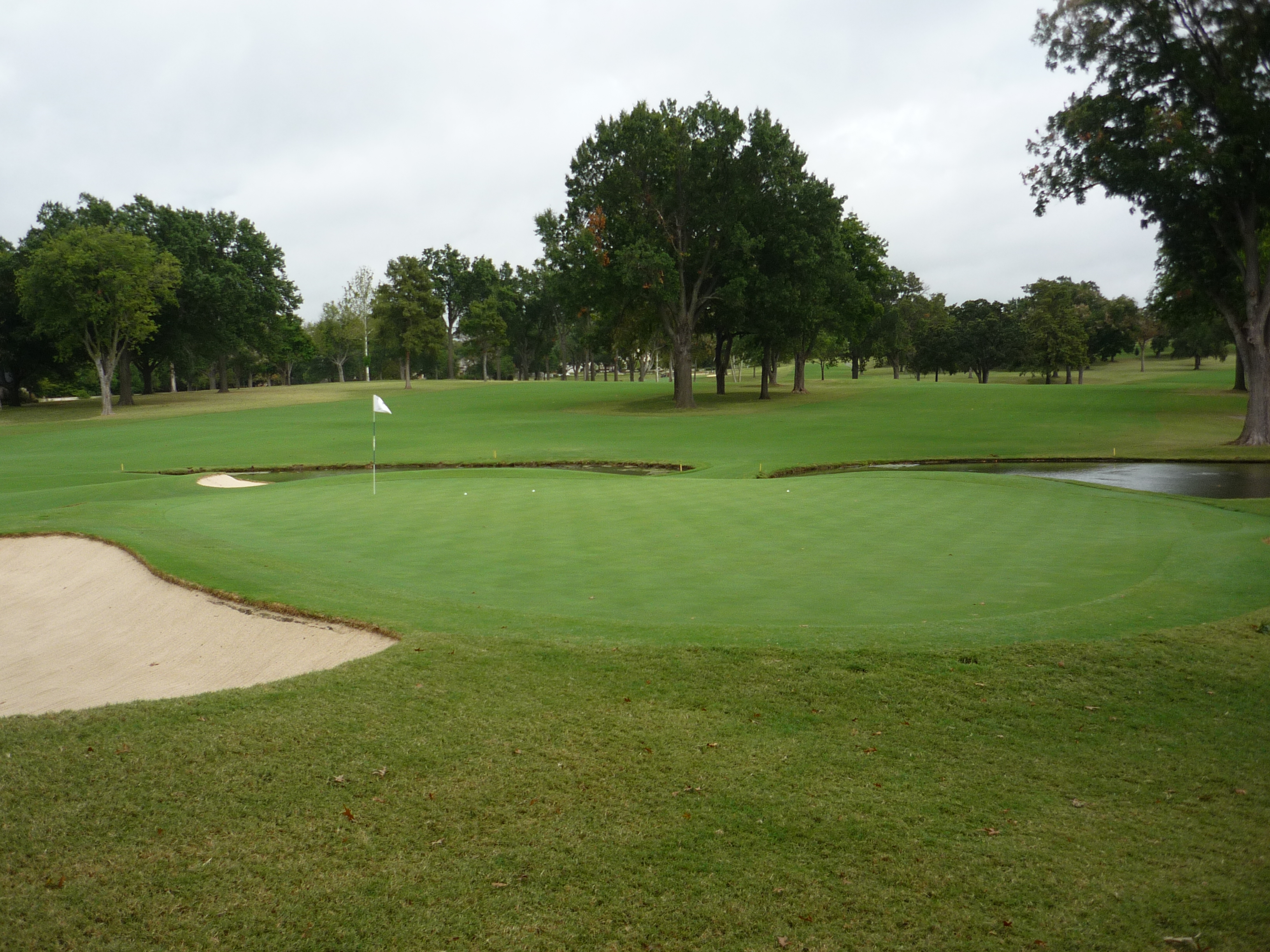
Hole 14 – 170 yards – Par 3
There is plenty to see from this tee. There are half a dozen bunkers and out of bounds lurks to the left. You will need a solid strike here with a mid to long iron to find the green.
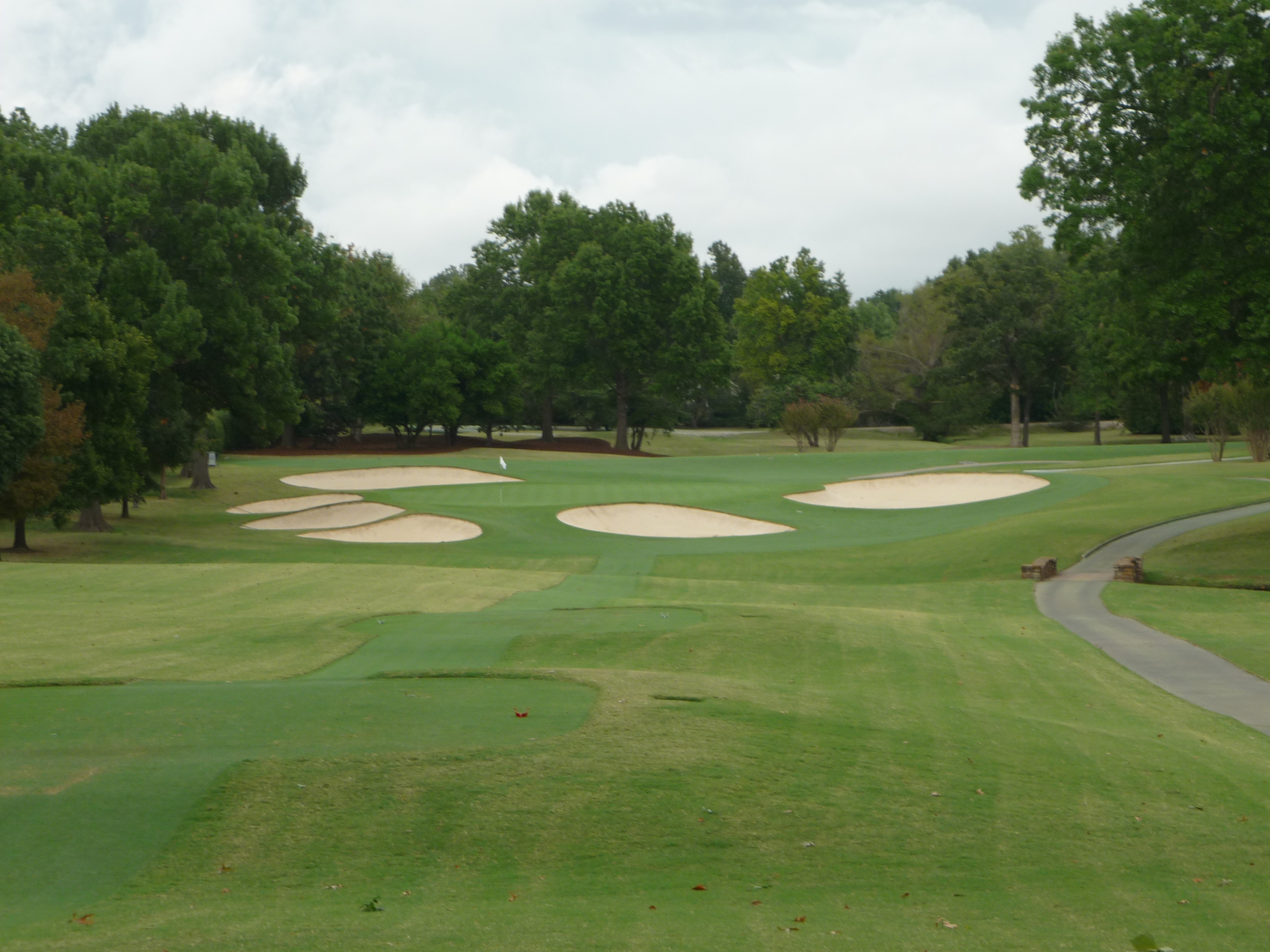
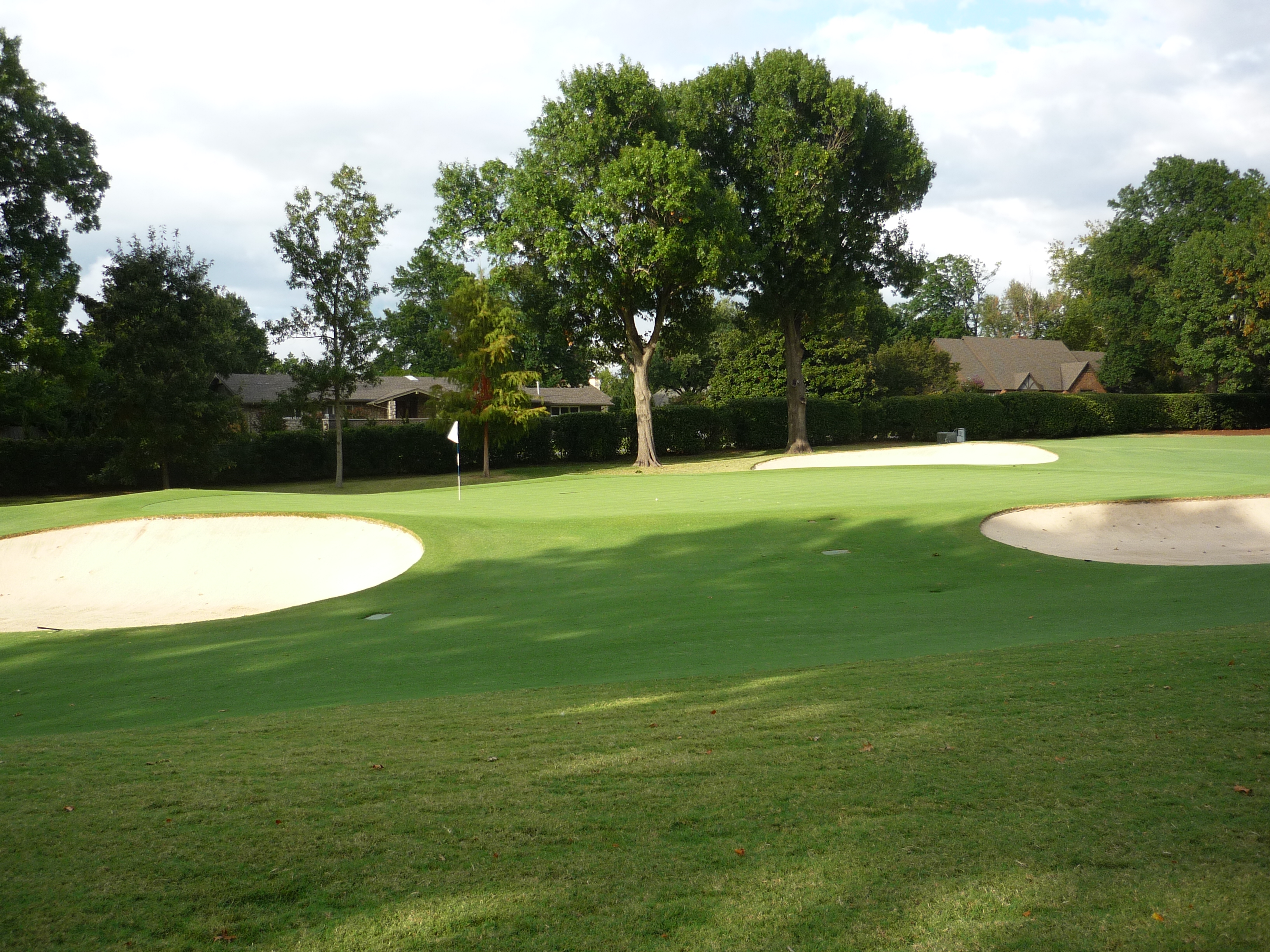
Hole 15 – 360 yards – Par 4
This is a pretty open tee shot that bends to the left. At this length you probably don’t need driver, but hey go for it anyway.
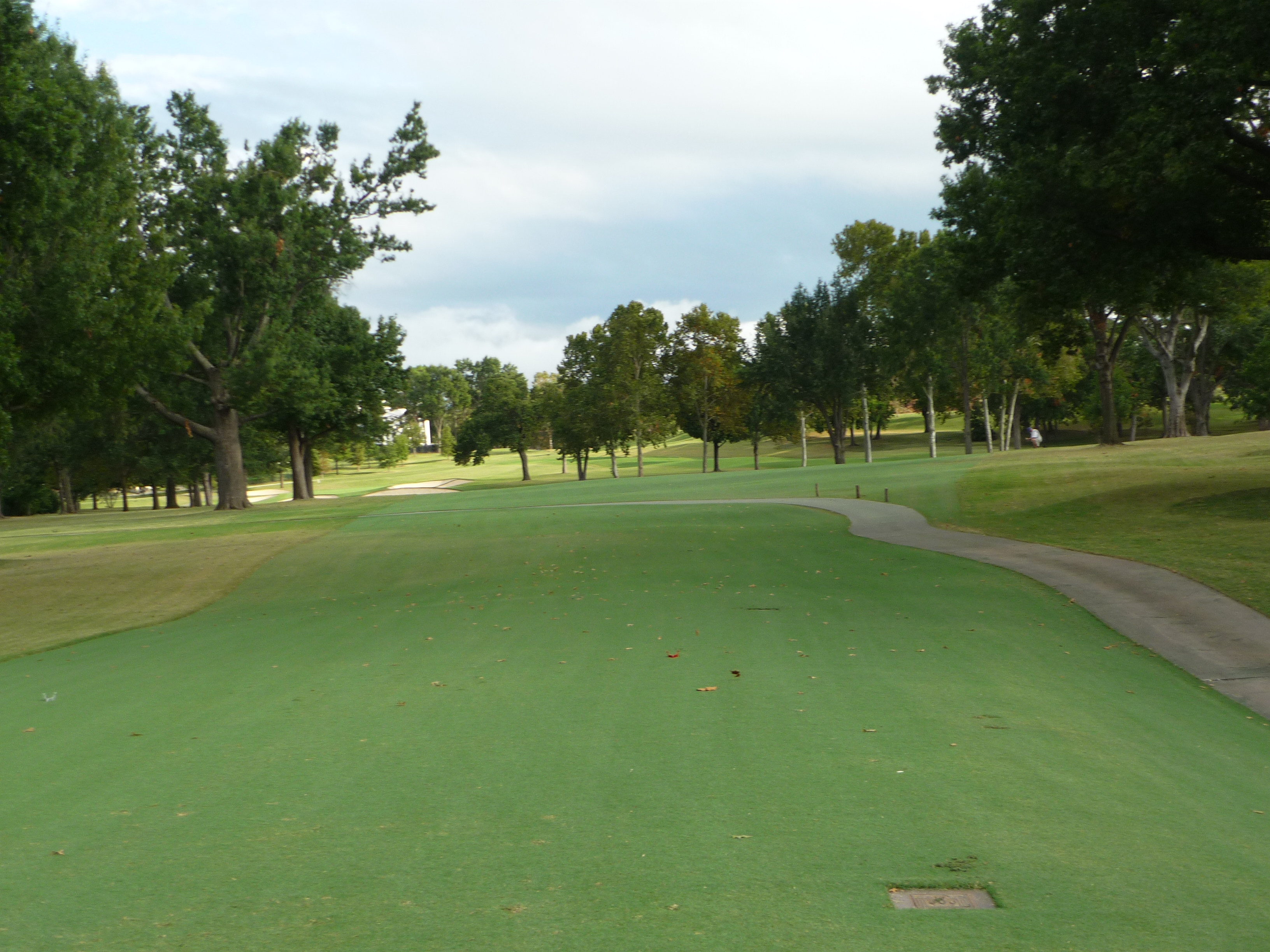
If you push your tee shot a little you will have some trees to contend with. I mentioned earlier that the lines you take from the tee are very important and this is one more example of that.
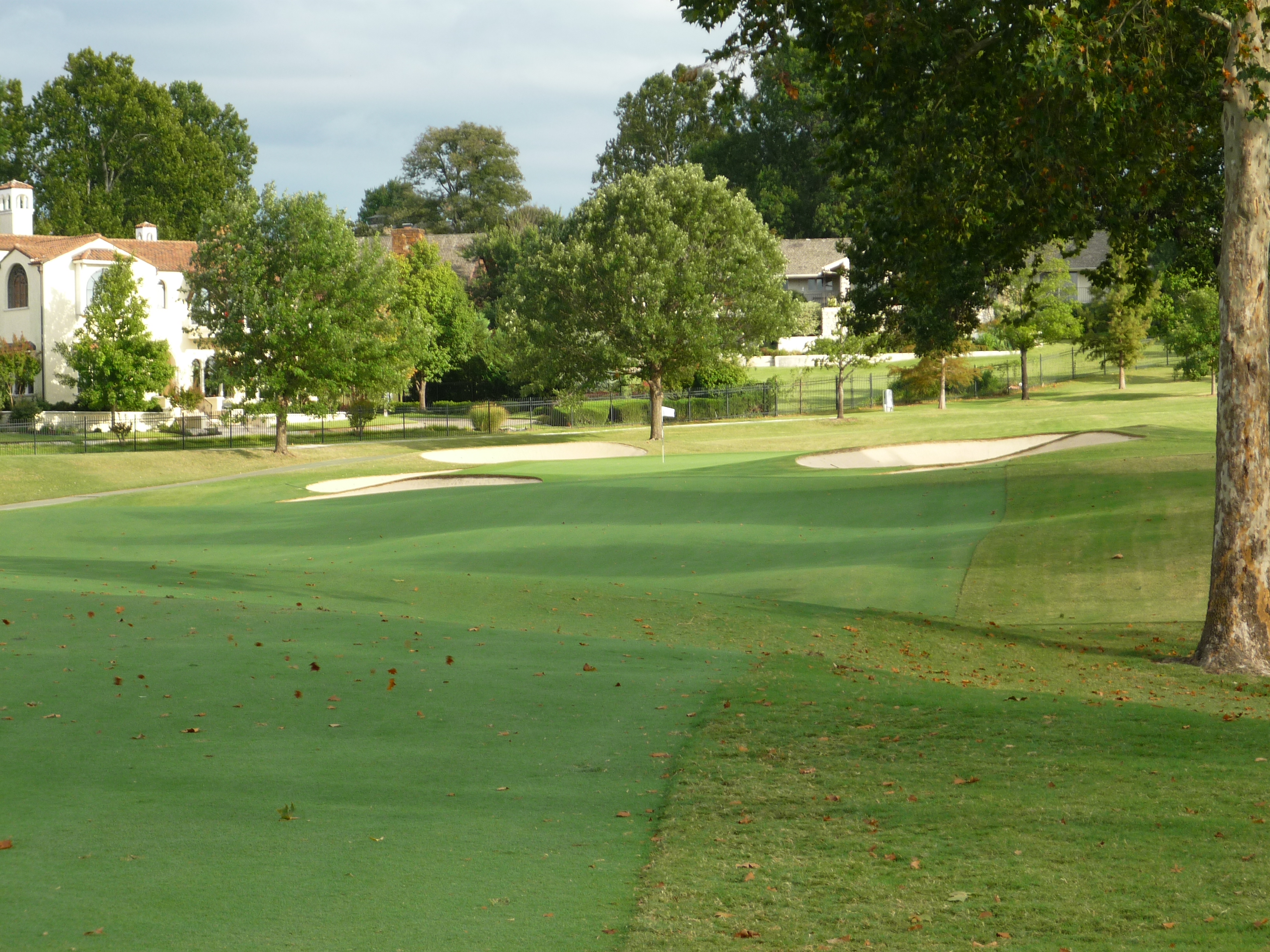
Here are a few wide shots of the putting surface.
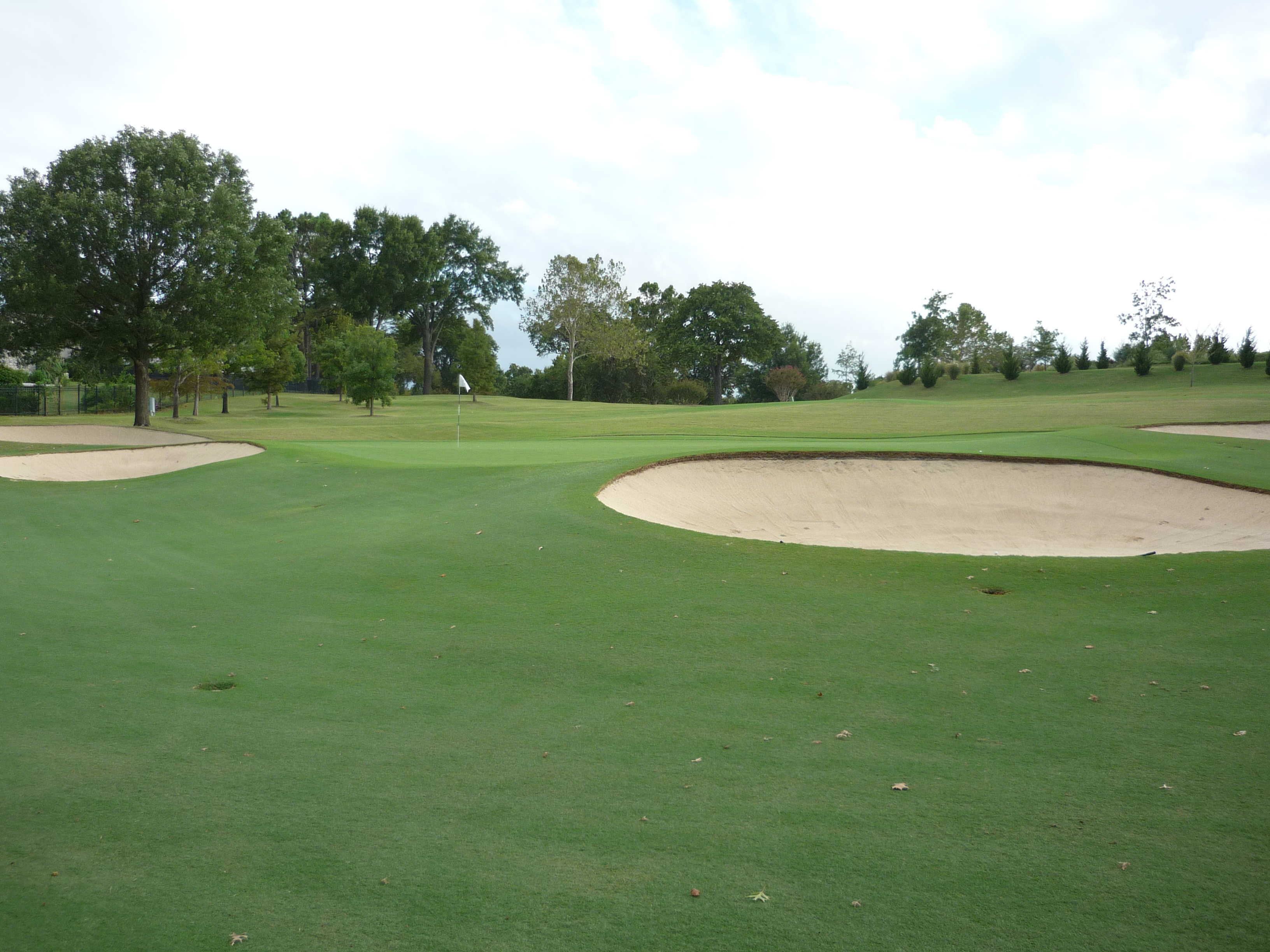
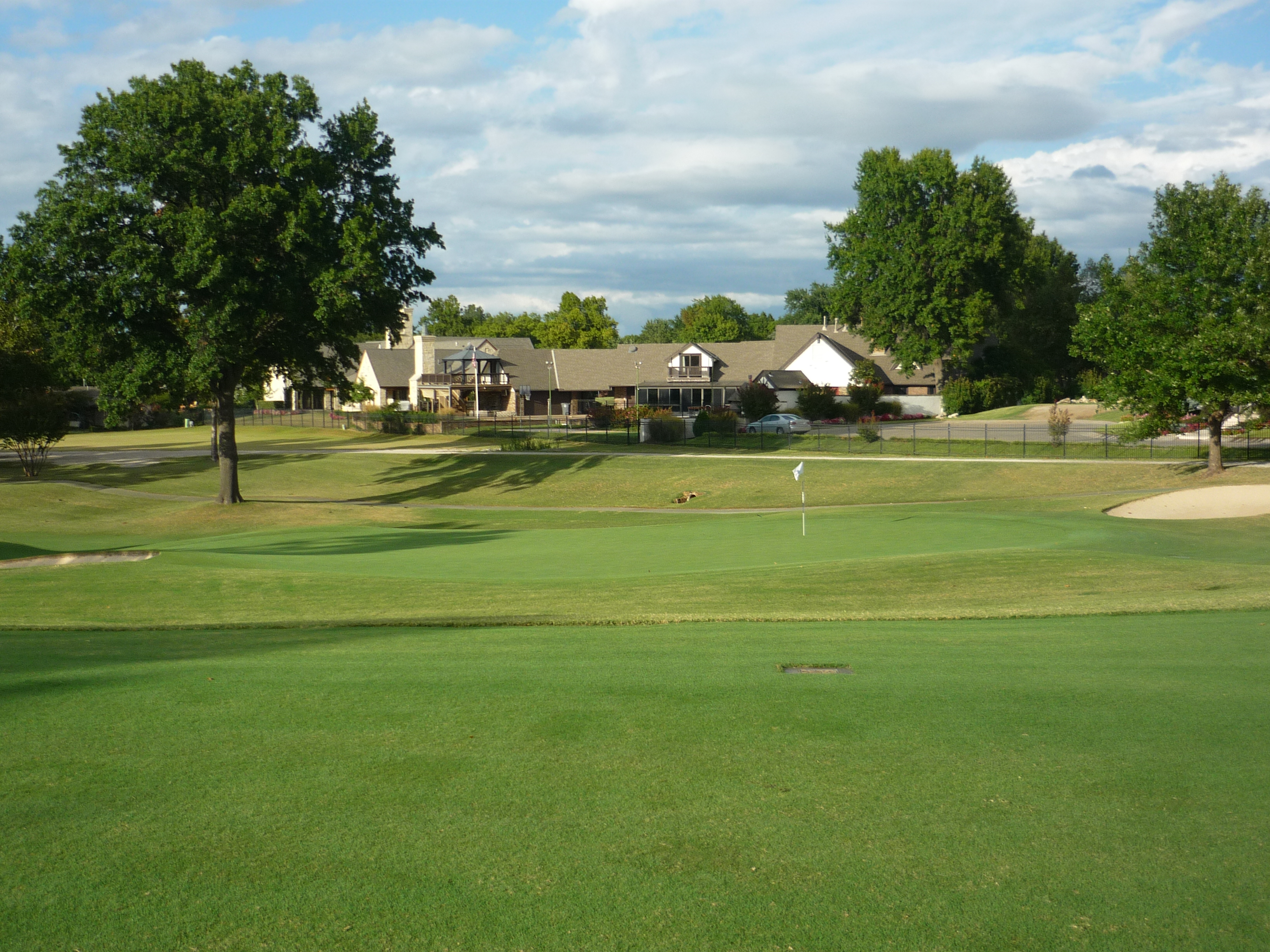
Hole 16 – 507 yards – Par 5
This hole is just straightaway but plays tight with the tees close in on the sides. If you have a power fade then now is the time to dial it up.
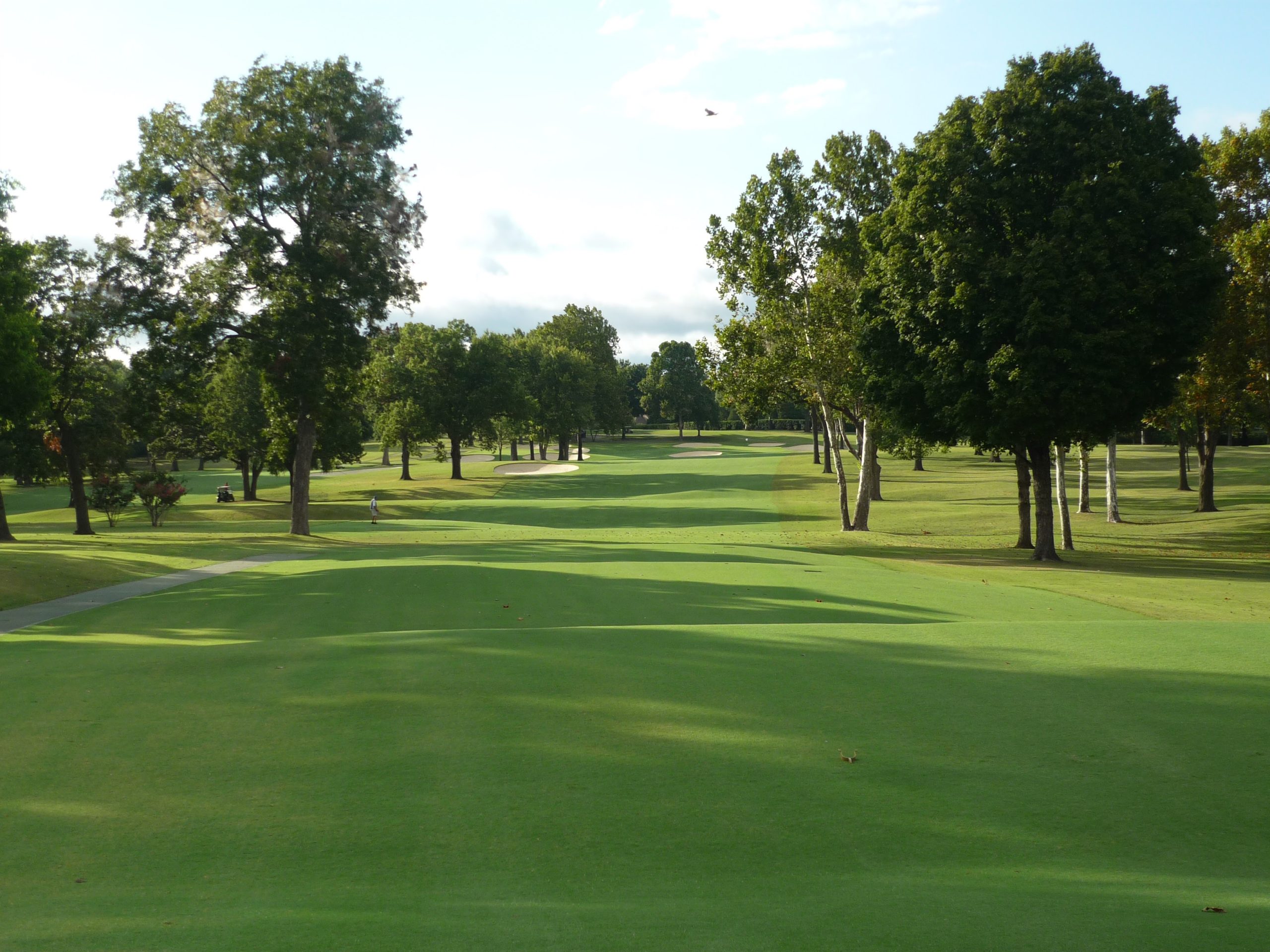
Below is a view of the second shot.
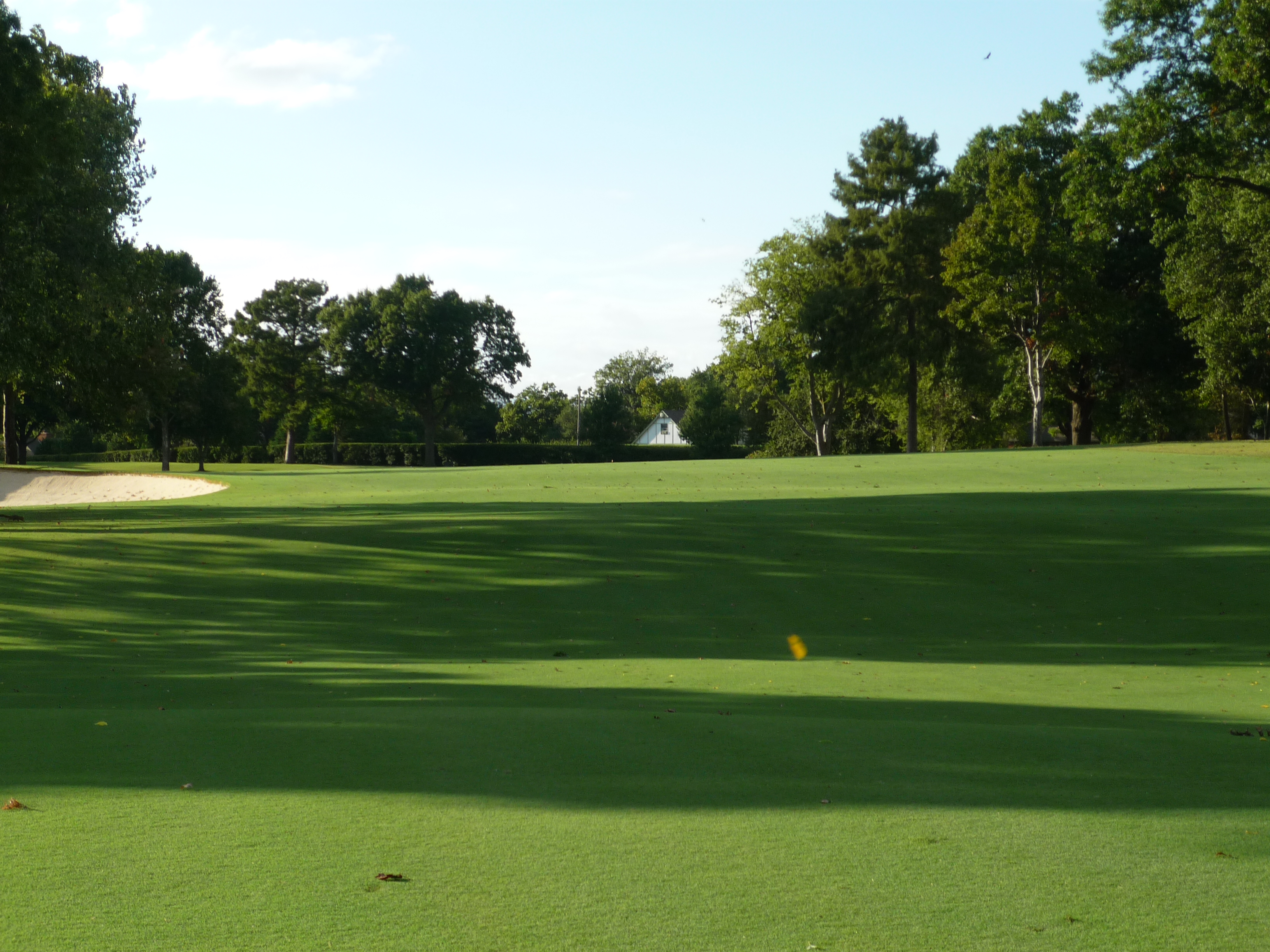
Compared to some of the other greens this one is pretty open in the front. It is raised so anything short will not roll up onto the putting surface.
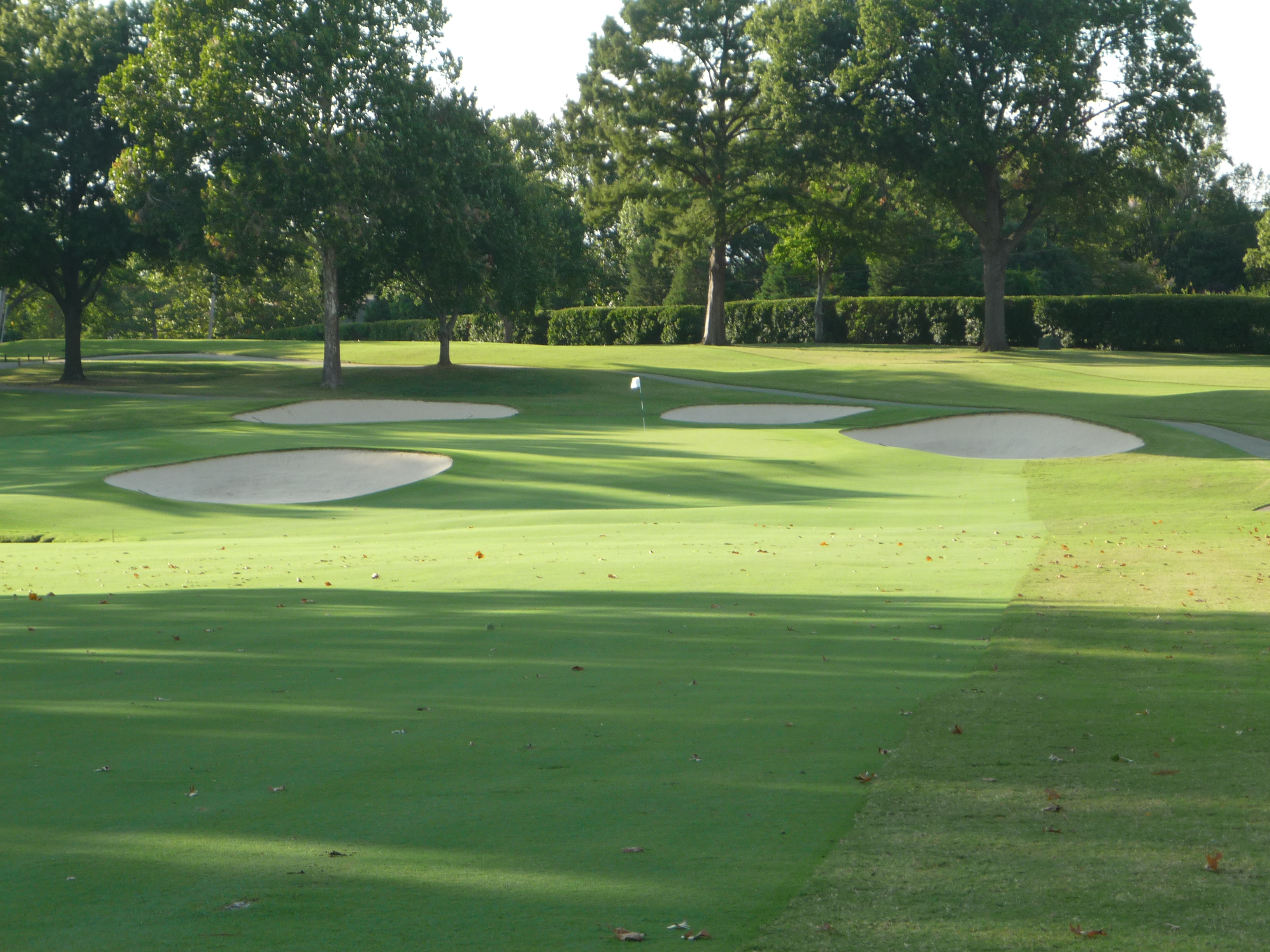
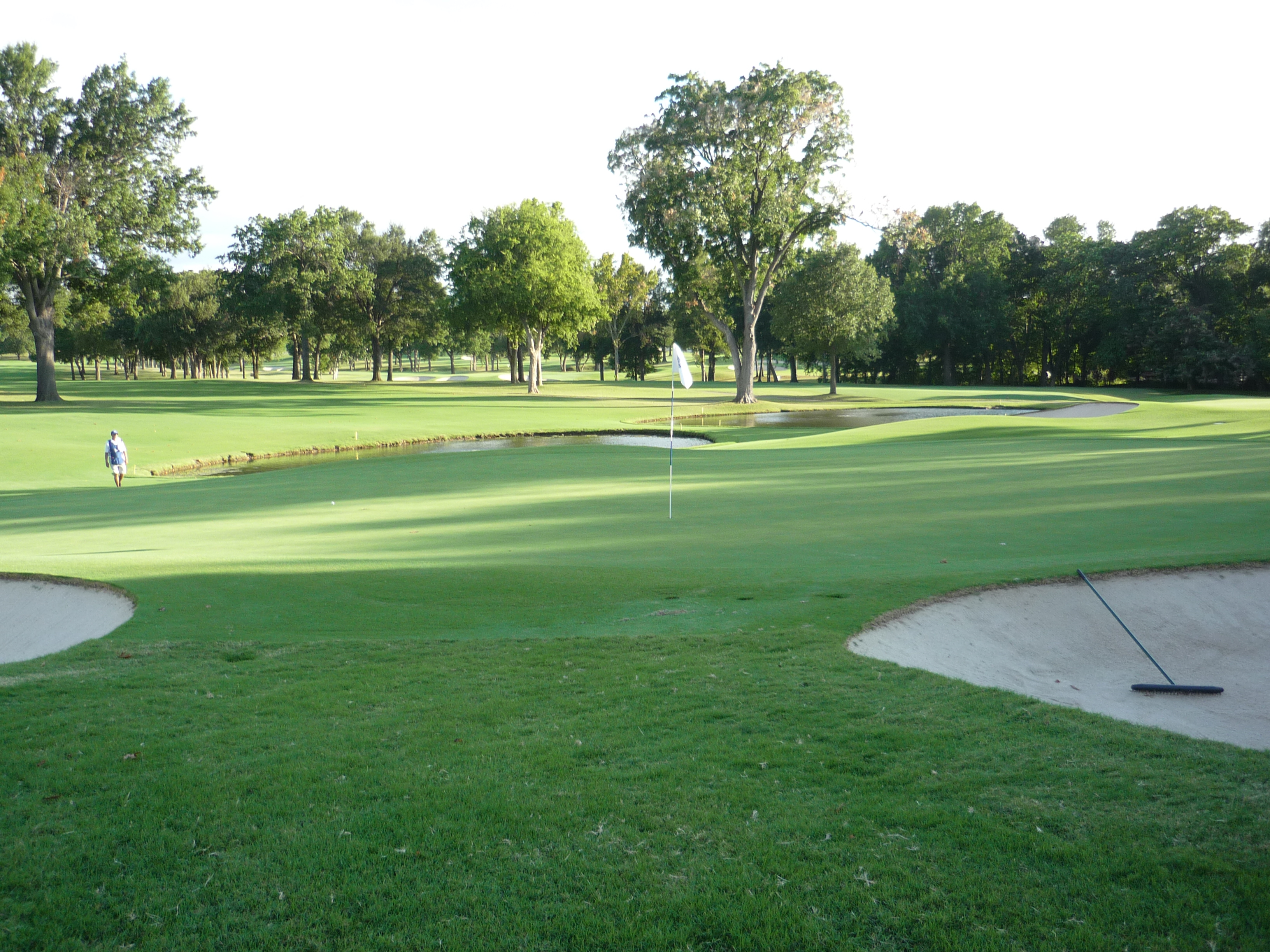
Hole 17 – 334 yards – Par 4
This is a short hole, but that doesn’t mean this will be an easy par. There are trees and a creek waiting on the right for poorly struck shots. You want to be on the left side of the fairway for the best angle.
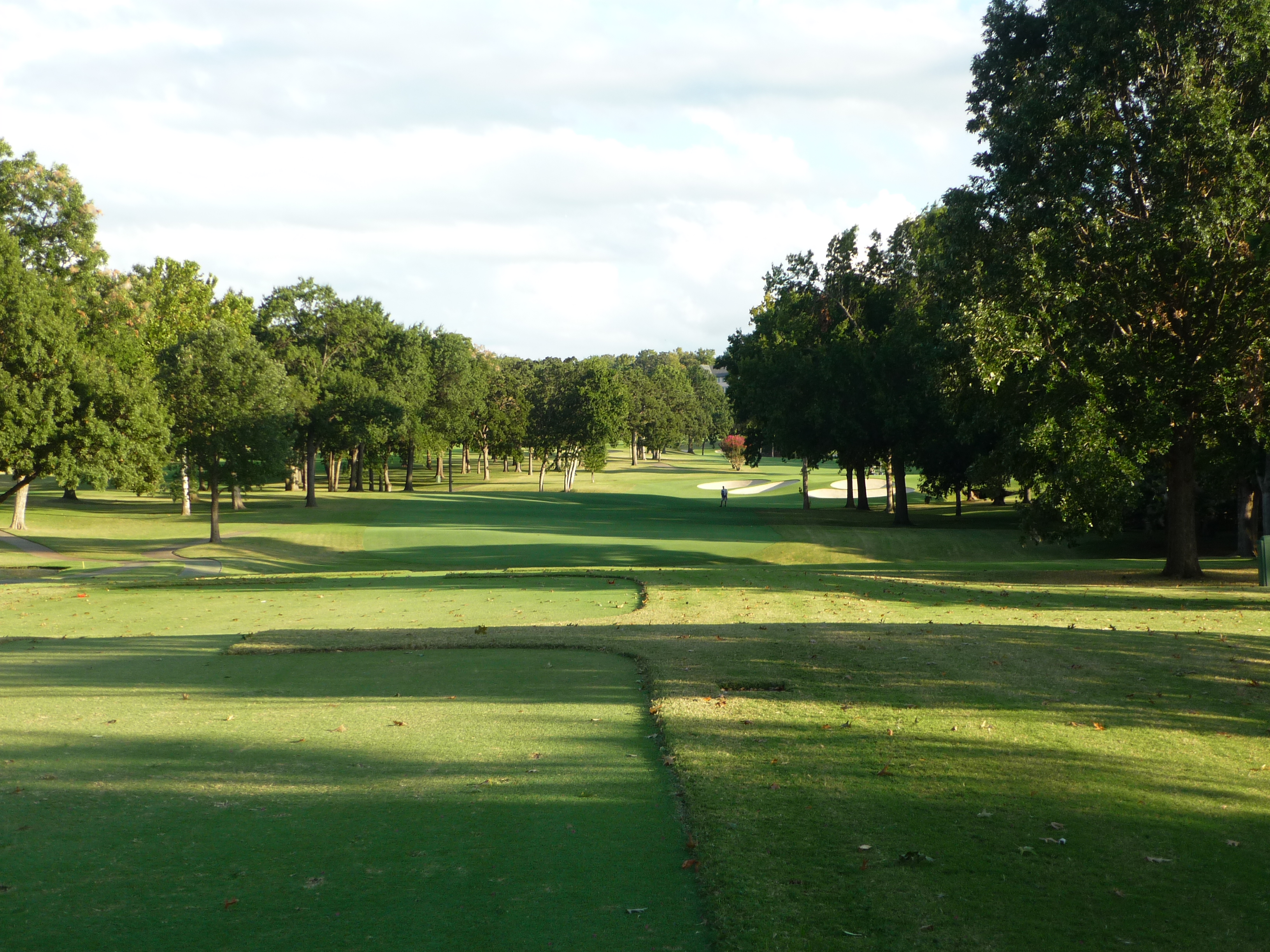
This is one of the more treacherous greens on the course. It is quite small and mostly surrounded by sand. If you don’t hit the green you will be grinding.
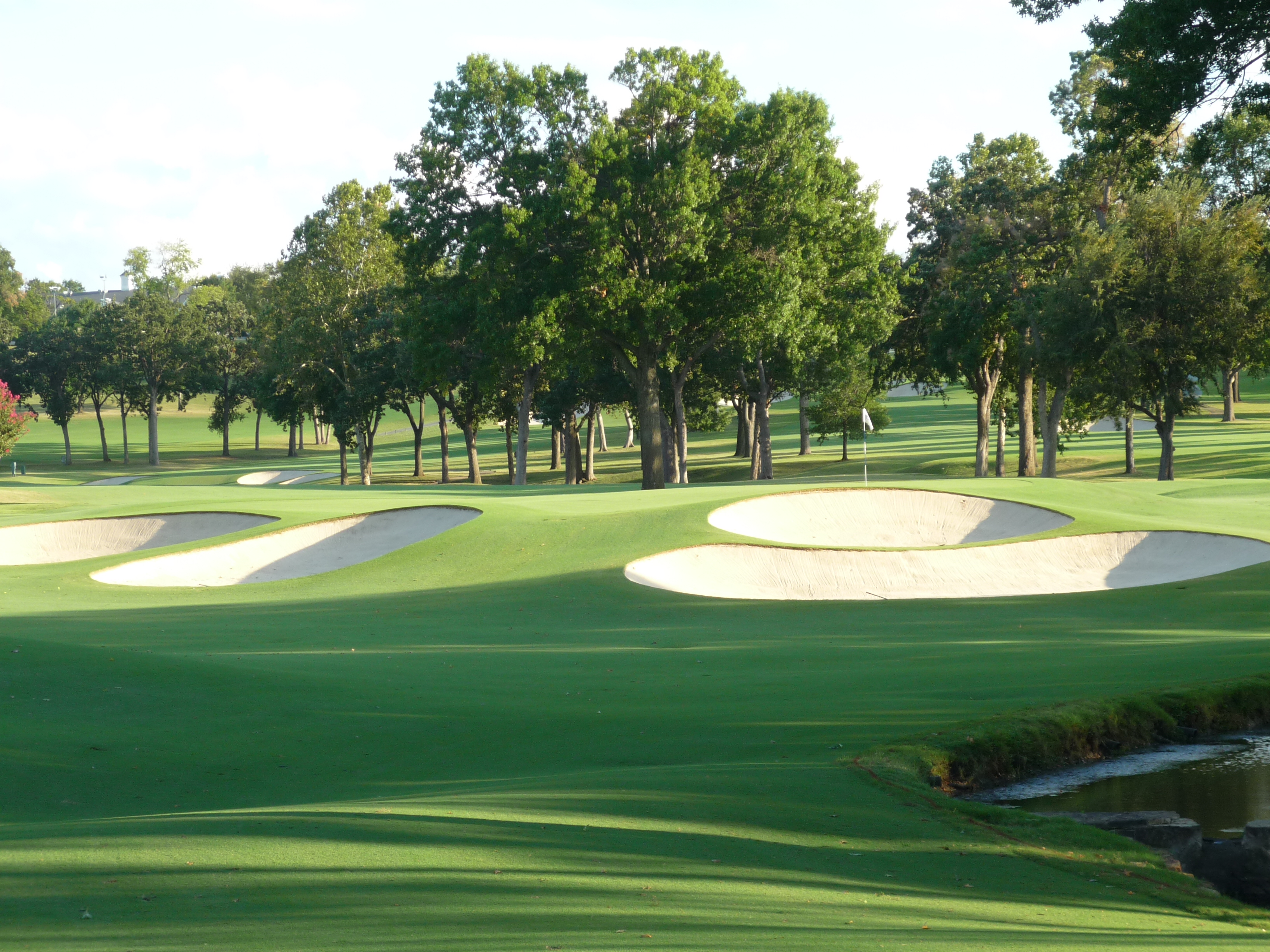
Hole 18 – 391 yards – Par 4
The final hole here has been the scene of some epic moments. The crazy finish at the 2001 US Open is the one that comes to my mind first. The left side of the fairway is position A and will leave you an open shot to the green.
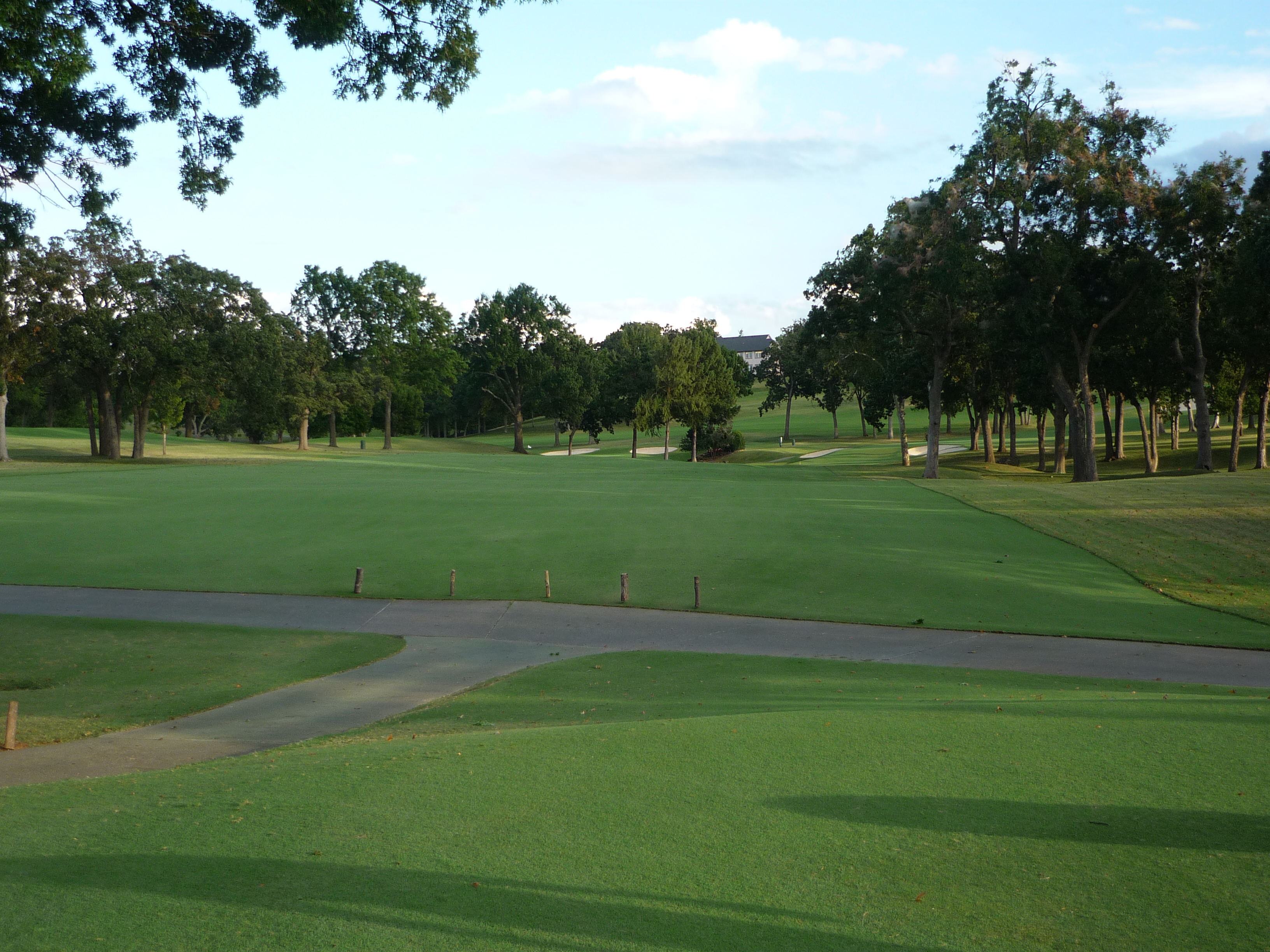
The second shot plays up a large hill over a very deep bunker. I liked how the green sat down in a little amphitheater with the clubhouse looming above.
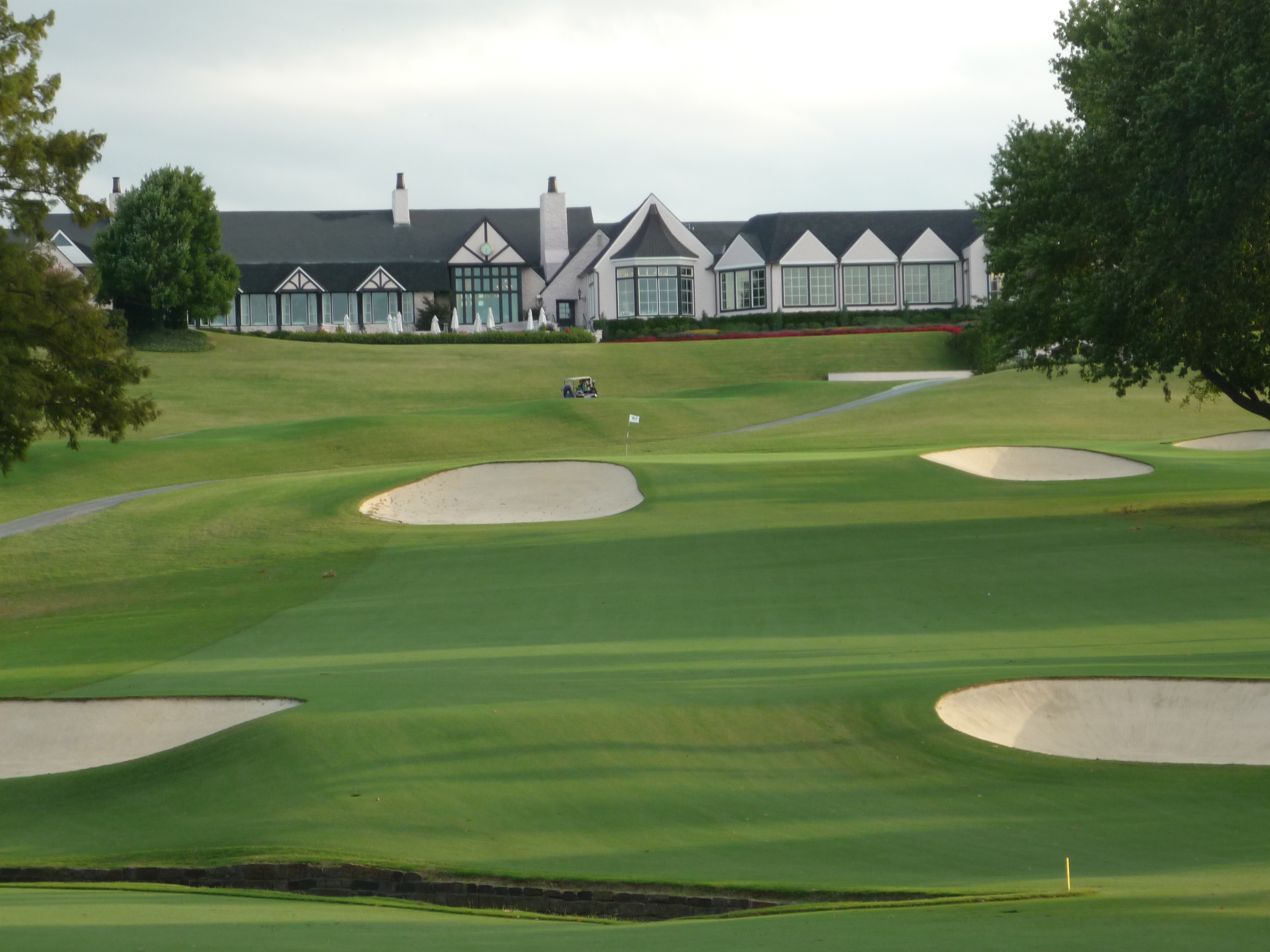
Here is another look at the shot with the afternoon shadows in full view.

I hit a great shot in here and really wanted the birdie. I jammed it by, but I was thrilled to hit a good shot into this famous hole. You can see the ridge running through the middle of the green.
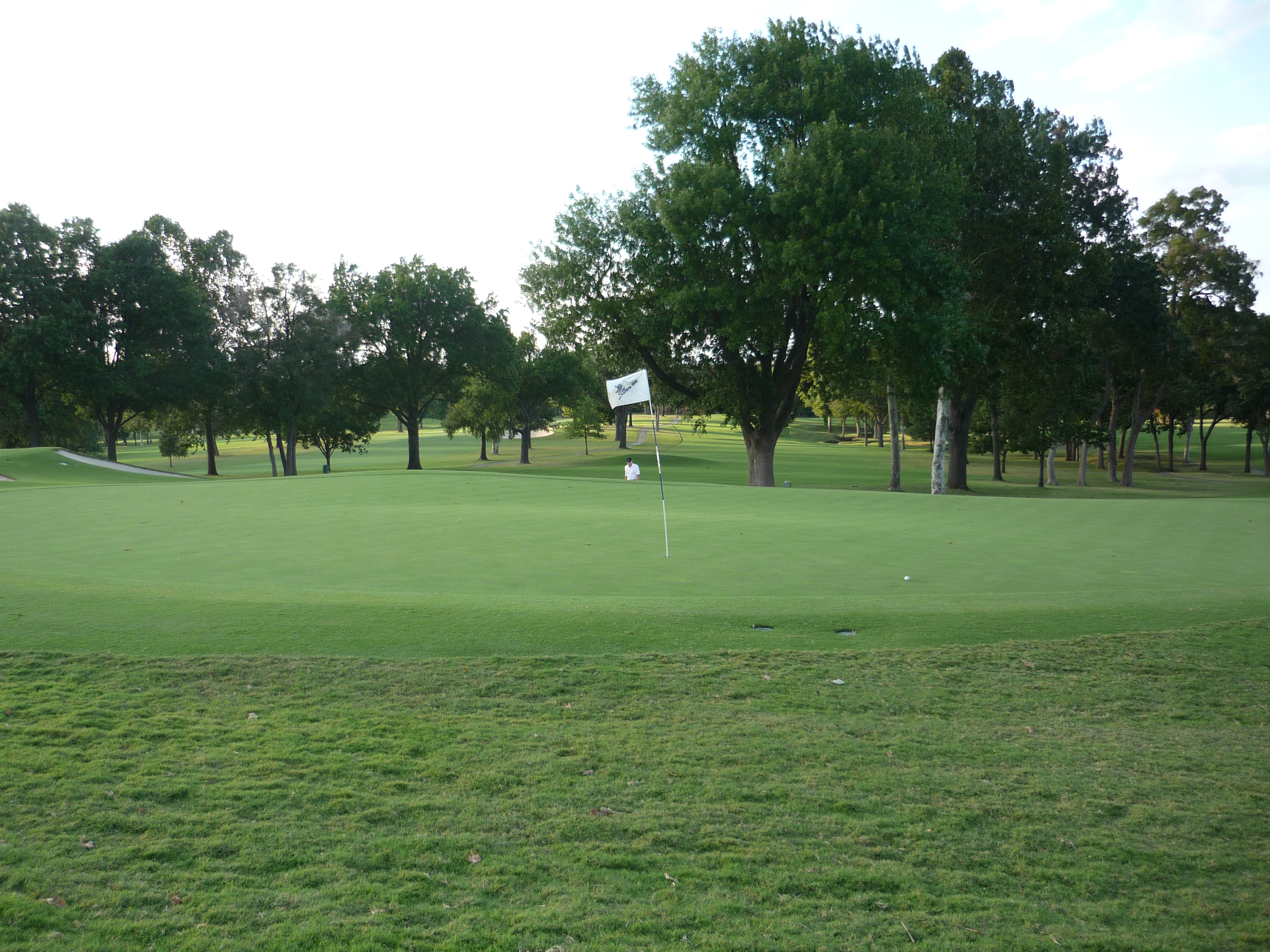
Southern Hills was an awesome experience. I loved the golf course because you had to hit many different kinds of shots. And with a Maxwell golf course, the greens are always going to be fun. Our member host was incredible and really accommodating. We had a great caddie and it was fun to play with a good friend who has helped me so much in my quest already. This was a round that reminded me of how generous people can be and made me really thankful for having golf in my life.

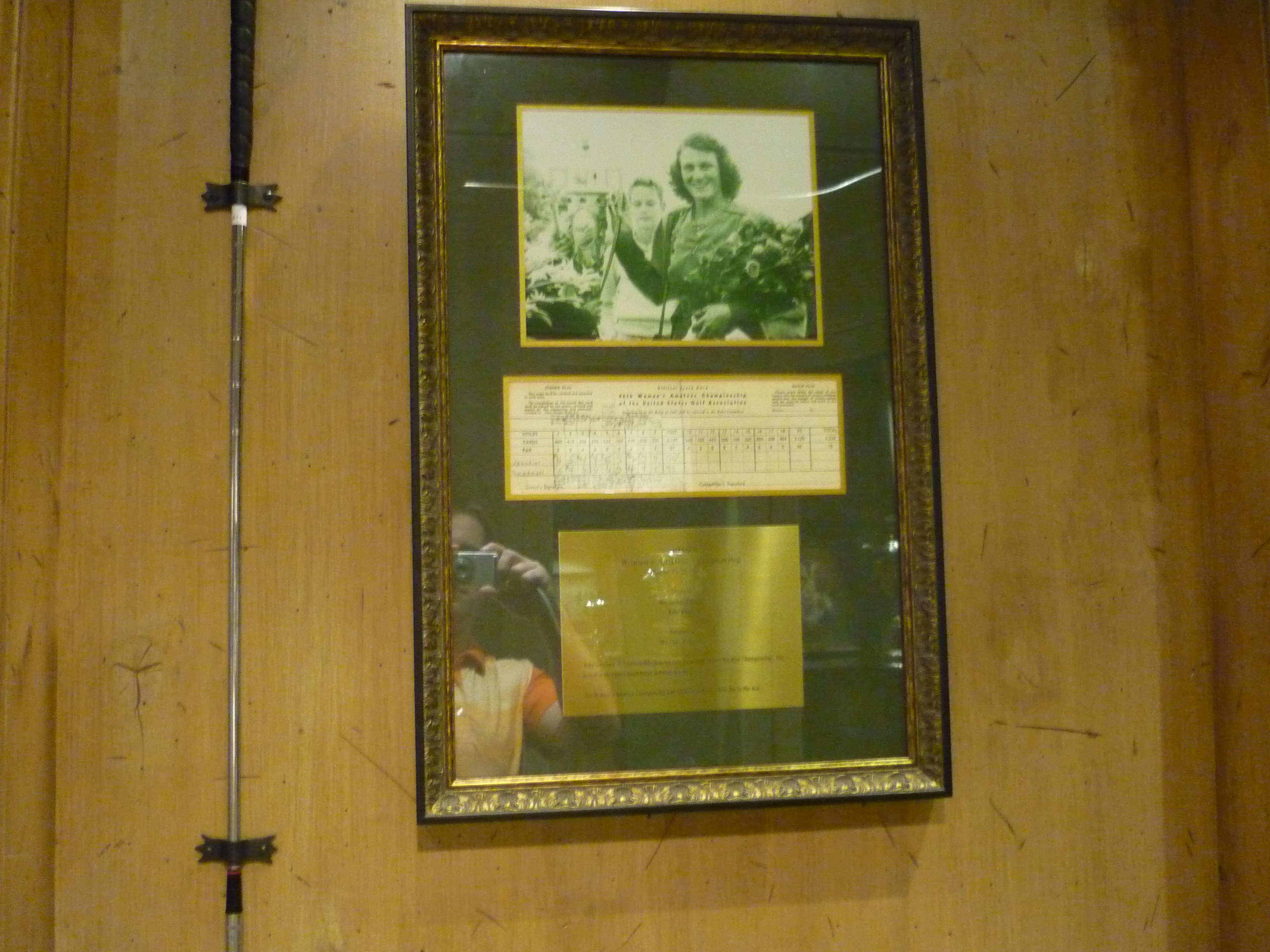
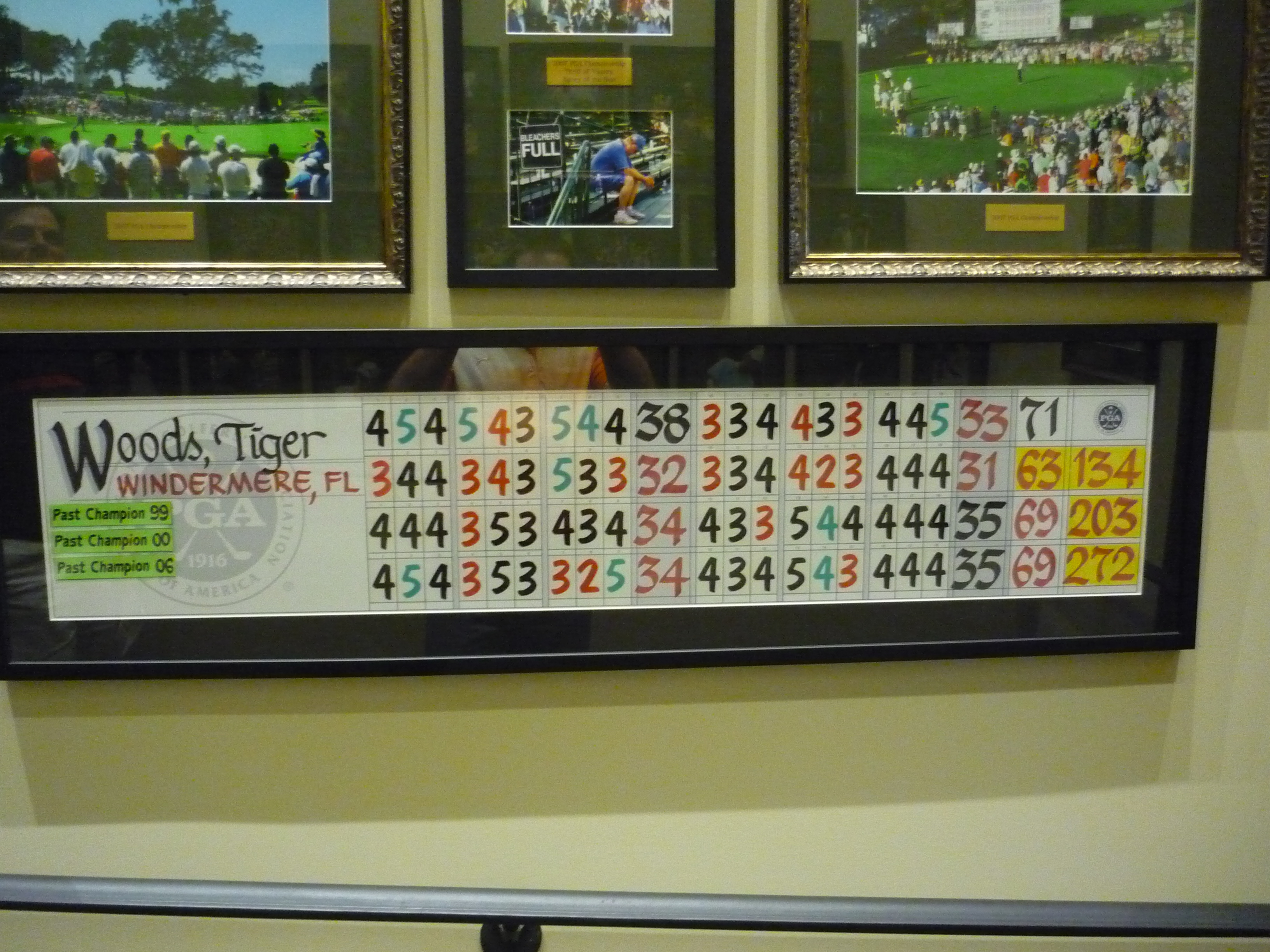
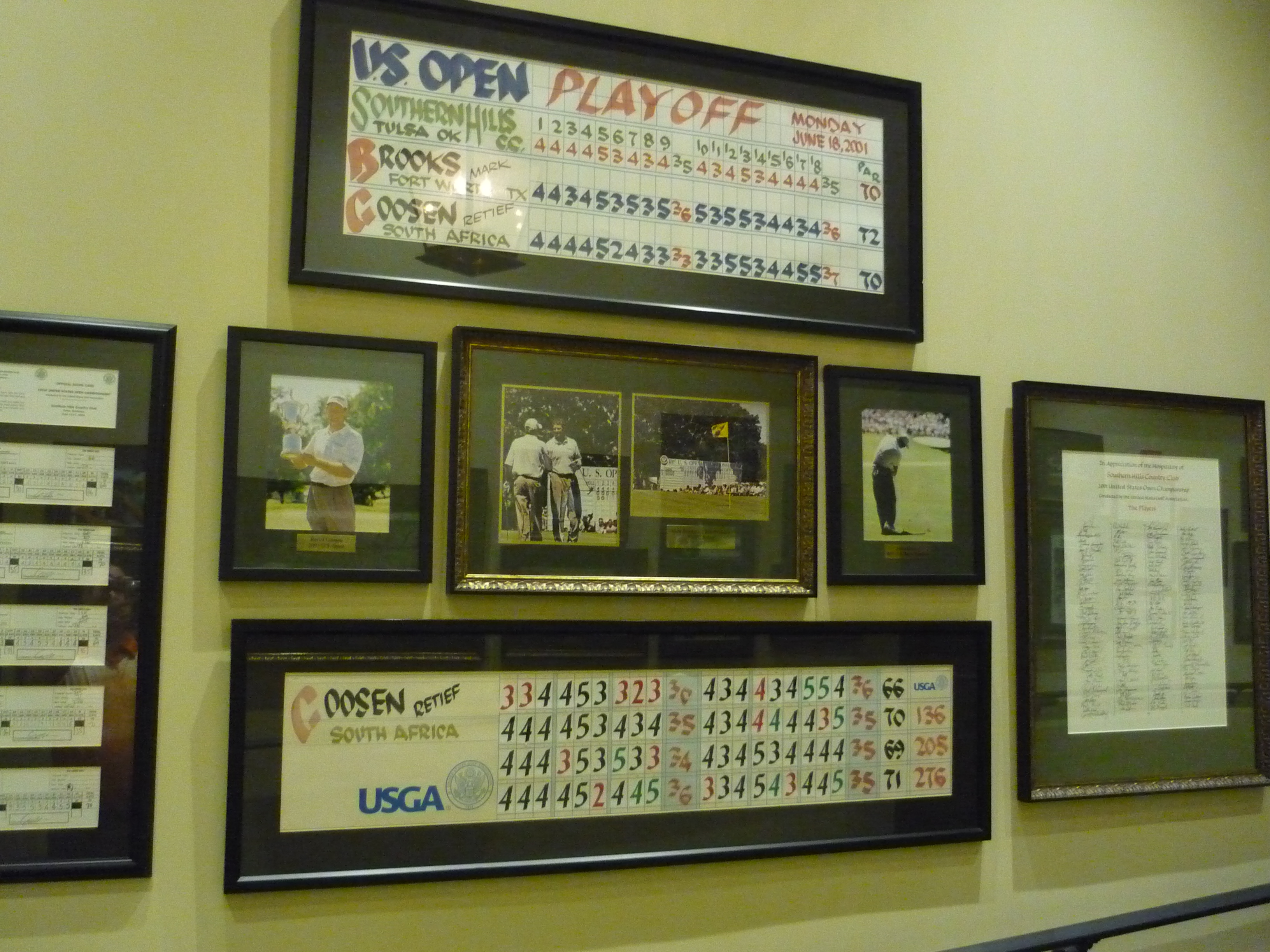
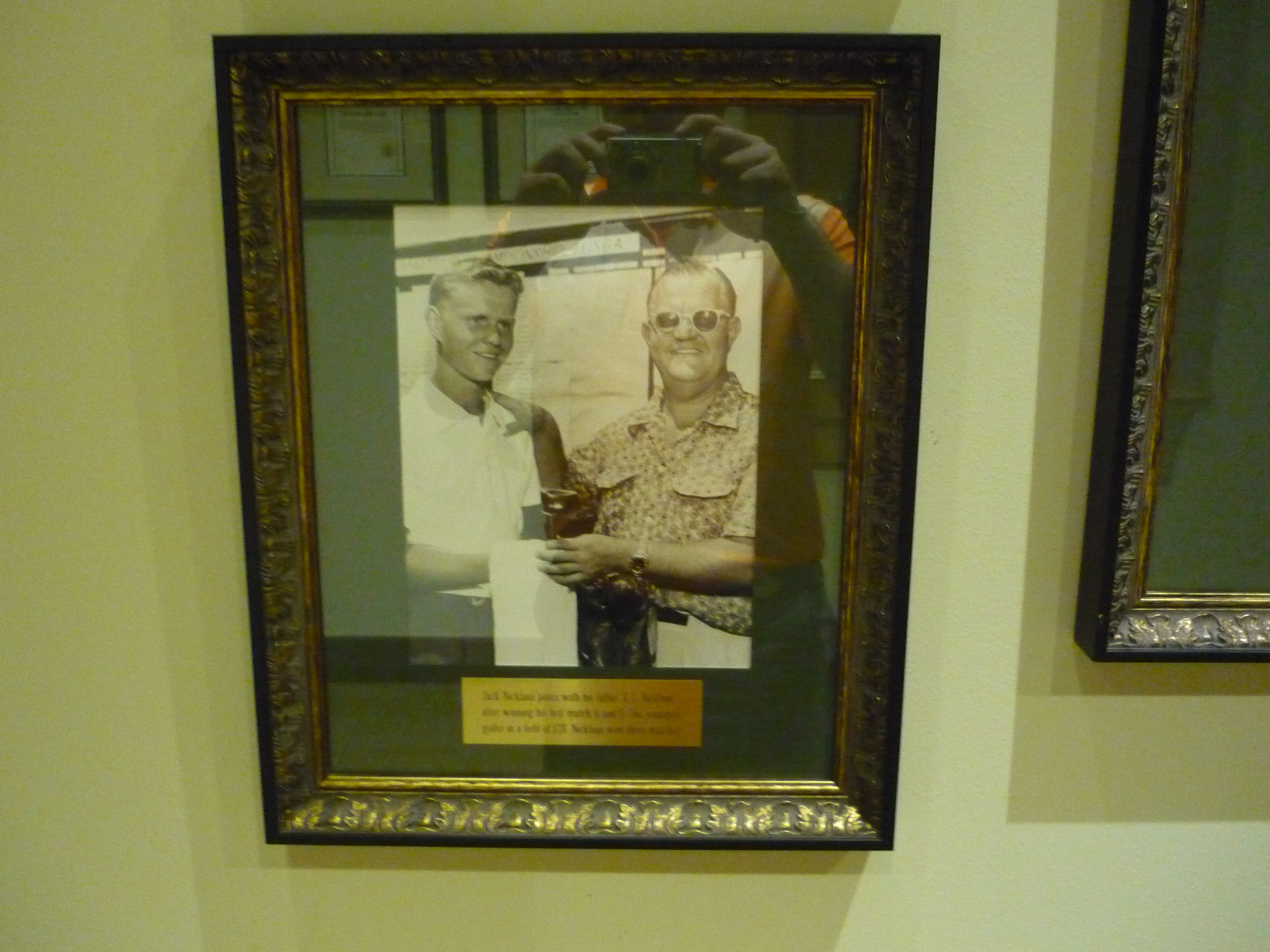
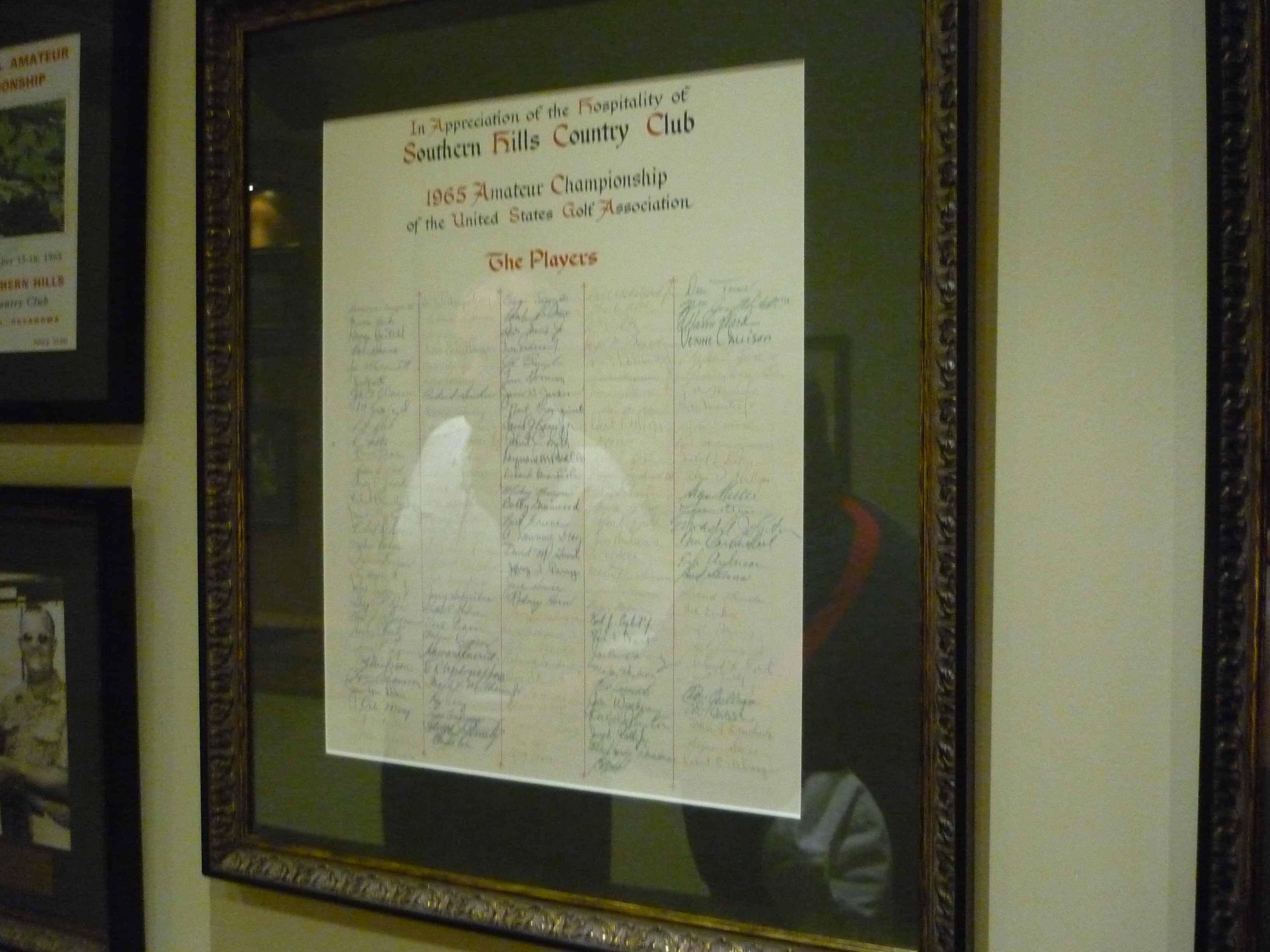
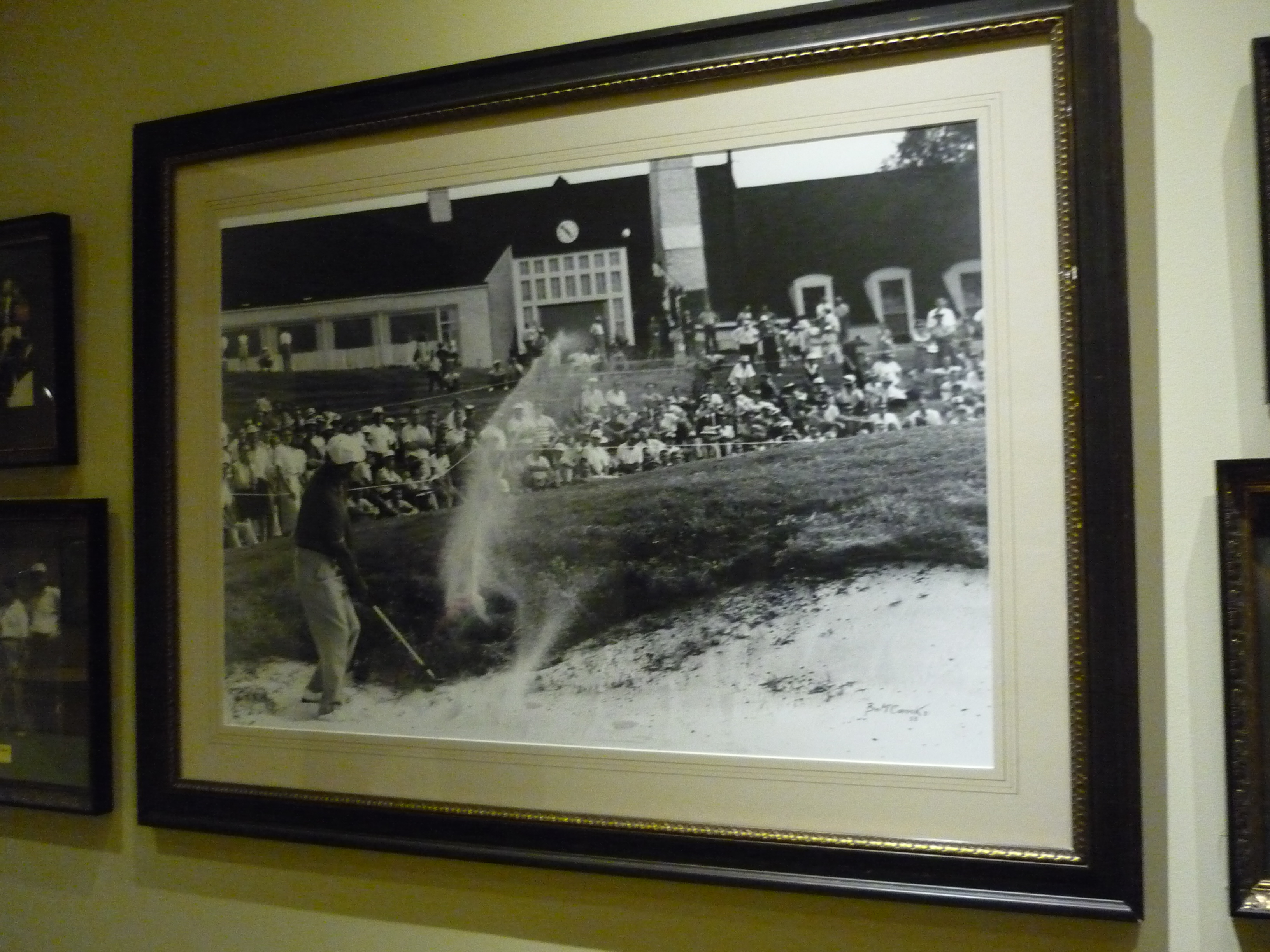
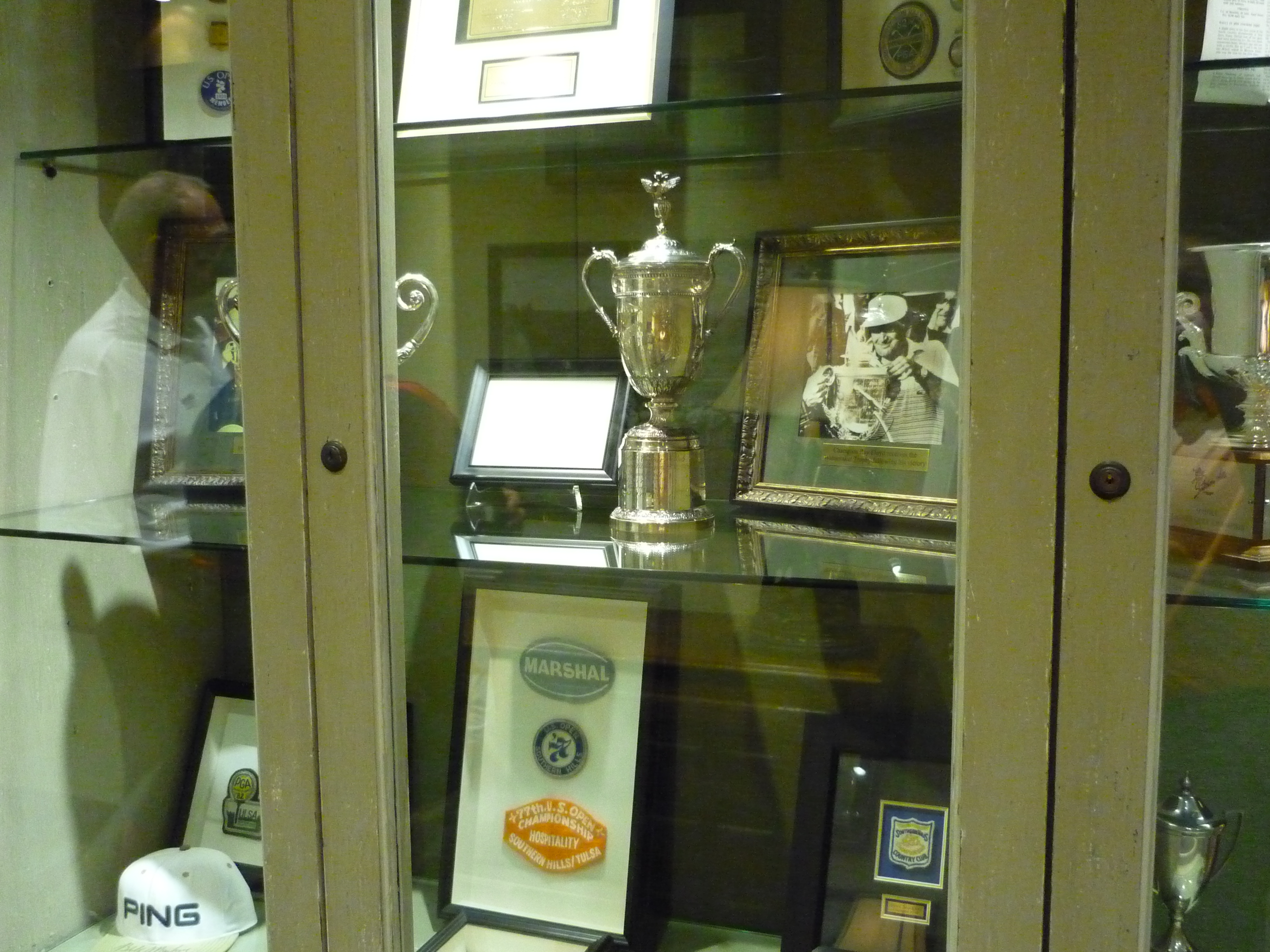
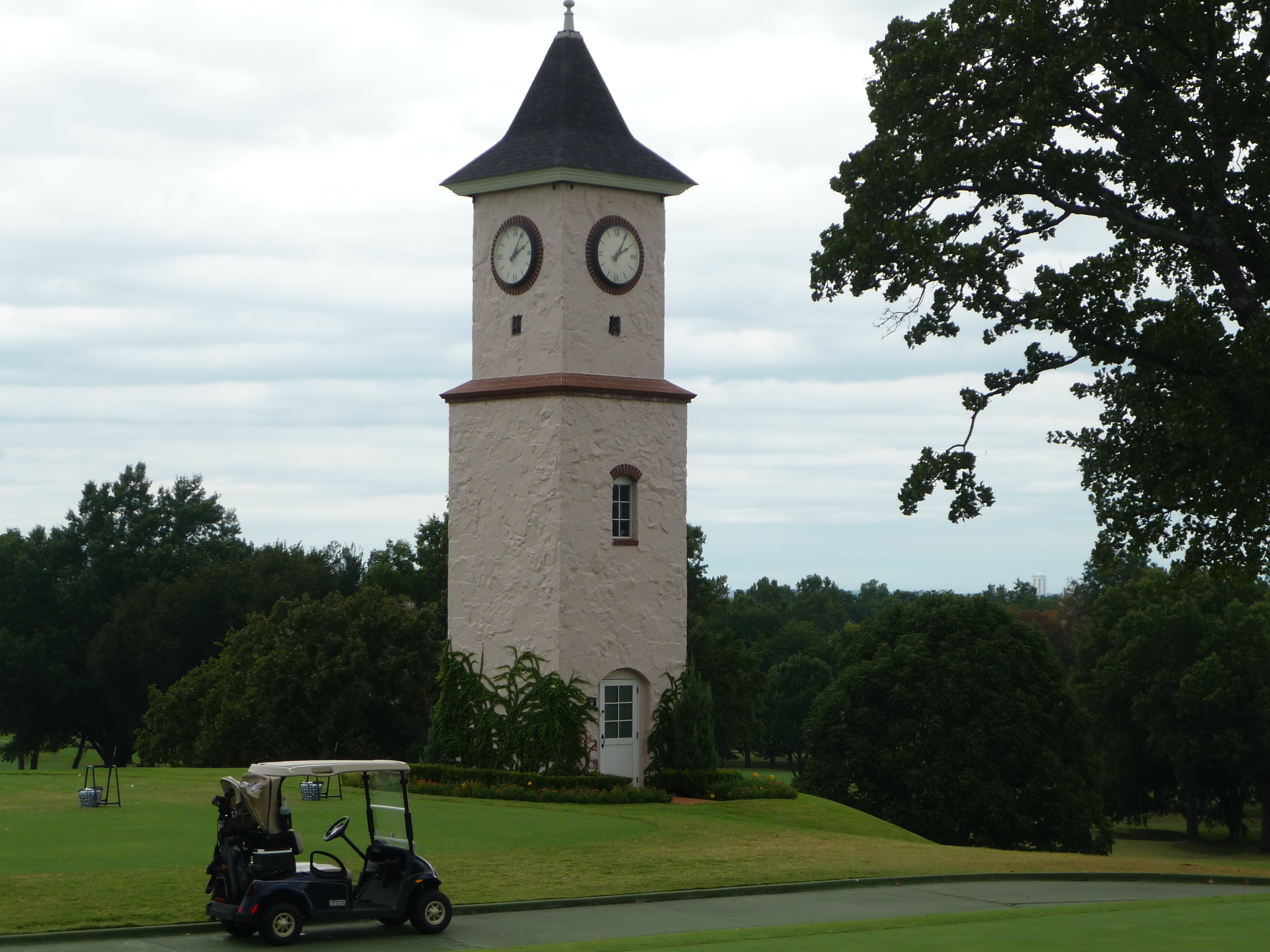
Jimmy
Great review. I like being invited to high end private courses as well. It does not happen often, but every now and again it happens.
Cheers
Jim
It was a phenomenal experience. I’ve got another one coming from the same trip next week. Thanks for the kind words!
Jimmy,
I remember Tiger’s 63 and victory here very well. Awesome you got to play it! Well done.
Cheers
Josh
What a cool experience! Thanks for sharing it with us. We have a couple of Maxwell boys’ designs here on KY that I wish had been preserved as well as SHCC.